Hisense E8Q is a television that clearly draws heavily from the U7Q model – and that’s a great thing. After all, this is its European version, not another “slimmed down” mutation. After just a few moments with this screen, it’s clear that the E8Q is putting up a fight. And in many areas, it really succeeds. To start with – what impresses is that the blacks are deep, the contrast is high, and the brightness exceeds the threshold that we can simply call satisfactory. Add to that nearly perfect fluidity of tonal transitions, and we have an image that looks very mature, especially for this price segment. In gaming? Just as good. VRR, ALLM support, 144 Hz in 4K, and even 240 Hz in Full HD – it’s hard to find fault here. Well… almost. Because the E8Q has one additional flaw compared to the U7Q – the sound. In our unit, at moderate volume levels, the back of the cabinet began to resonate, producing rather unpleasant crackling noises. This might be a flaw of the test unit, but since the U7Q simply performed better – it’s worth noting. Especially if you find both models at a similar price. We can confidently state that the E8Q is a television that can confidently fight for the attention of those looking for a quality Mini-LED at reasonable prices. If a good price opportunity arises, it’s definitely worth it – because we receive almost the same as in the U7Q. And that means a really solid picture, excellent gaming features, and overall very good equipment that you can stick with for a while.
- Matching (Score)
- Our verdict
- TV appearance
- Where to buy
- Contrast and black detail
- HDR effect quality
- Factory color reproduction
- Color reproduction after calibration
- Smoothness of tonal transitions
- Image scaling and smoothness of tonal transitions
- Blur and motion smoothness
- Console compatibility and gaming features
- Input lag
- Compatibility with PC
- Viewing angles
- TV efficiency during daytime
- Details about the matrix
- TV features
- Apps
- Playing files from USB
- Sound
Hisense E8Q vs Sony Bravia 3 50' (VA)
Direct compare
E8Q
BRAVIA 3 / K-(XX)S3
Available screen sizes: 50”
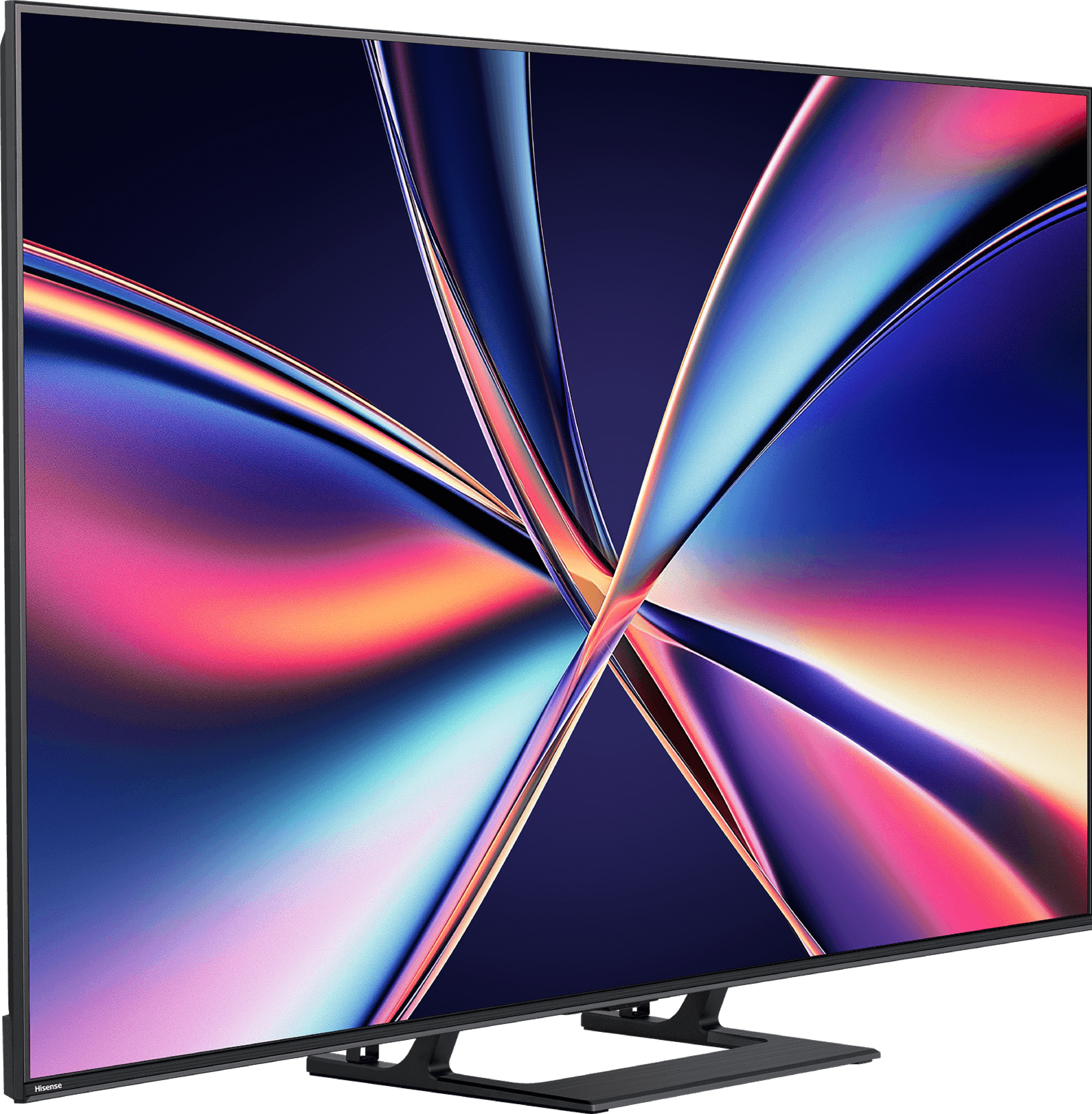
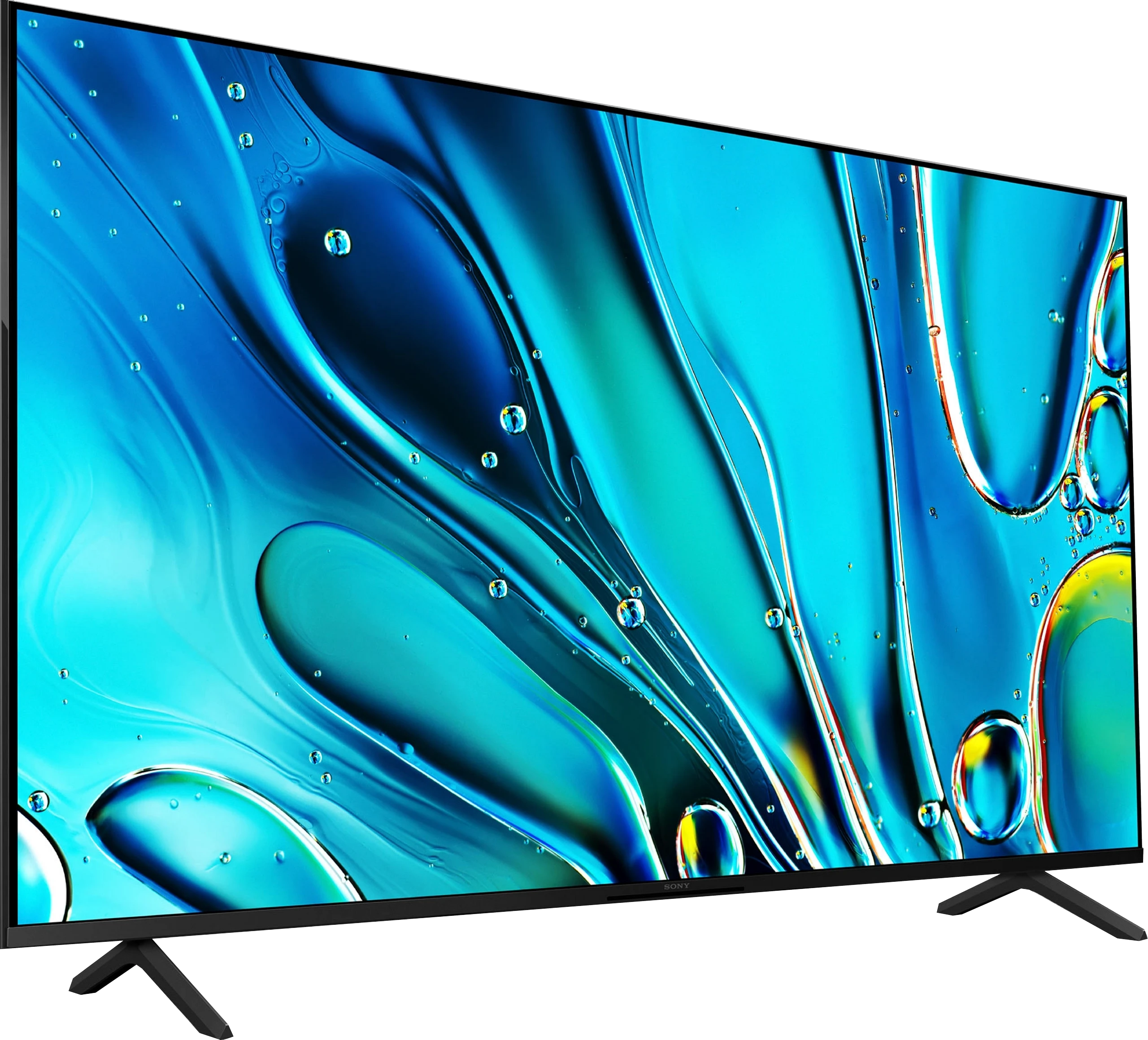
Panel type: LCD VA
Resolution: 3840x2160
System: VIDAA
Model year: 2025
Complete the survey to find out the result

Panel type: LCD VA
Resolution: 3840x2160
System: Google TV
Model year: 2025
Complete the survey to find out the result

Overall rating
7.2
6.1
Movies and series in UHD quality
6.7
6.3
Classic TV, YouTube
6.8
6.3
Sports broadcasts (TV and apps)
6.5
5.3
Gaming on console
8.0
6.5
TV as a computer monitor
8.6
3.5
Watching in bright light
6.2
5.4
Utility functions
8.9
6.1
Apps
7.7
9.6
Sound quality
7.2
6.5
Complete the survey to find out what fits your preferences
Advantages
Great contrast and deep blacks
Very good smoothness of tonal transitions (close to reference level)
High brightness
Supports 4K 144 Hz and even 240 Hz in Full HD
VRR, ALLM, G-SYNC – a full package for gamers
Low input lag
Many classic TV features built into the VIDAA system
Significantly better contrast and deeper blacks than in the IPS variant
Higher screen brightness, improving daytime viewing comfort
More uniform panel, fewer issues with vignetting and brightness spots
Smooth tonal transitions, especially in bright scenes
Wide colour gamut coverage (over 91% DCI-P3)
Effective upscaling of lower quality content
Support for Dolby Vision, which partially enhances HDR content experience
Google TV system with a large library of applications
Two remotes included – a classic one and a minimalist one
Disadvantages
No support for HGiG (makes setting HDR on consoles difficult)
Poor viewing angles – typical for VA panels
Closed VIDAA system – lack of some applications
Inferior sound quality compared to the twin model U7Q
Much poorer viewing angles than in the version with an IPS panel
Collaboration with PC is noticeably weaker: poorer font readability and visible dithering
Occasional stuttering of the Google TV system
No USB recording function
Our verdict
Sony Bravia 3 in the VA panel variant is a television that, in terms of character, remains the same budget model, but the change in panel type makes watching movies and series much more enjoyable. The higher contrast and deeper blacks finally allow for evening viewing without the impression of the screen drowning in shades of grey. This is a significant advantage over the IPS version, even if it comes at the cost of much poorer viewing angles. In practice, it comes down to a choice – if we mainly watch from a sofa positioned straight on, the VA panel delivers a noticeably better effect. The rest of the picture remains largely the same. The PFS filter still provides nicely saturated colours, and the upscaling is at a good level, meaning that SDR content looks clean and aesthetically pleasing. The Google TV system, although it doesn't always run perfectly smoothly, remains a huge advantage – access to a wide library of apps and streaming platforms is something that the competition in this price bracket doesn't always offer in such a polished form. At the same time, the Bravia 3 with VA doesn't resolve all the issues of its predecessor. The HDR brightness at around 350 nits still doesn't allow for a true high dynamic effect, and the lack of local dimming means that fine details can still be blown out. Additionally, there's no USB recording, which was present in the predecessor. So, who is the Bravia 3 in the VA version for? For those who want an affordable entry point into the world of Sony televisions and care about decent quality in movies and series, mainly watching lower-quality content. It is not a proposition for gamers or for someone expecting cinematic HDR effects. Much like with the IPS version, it's hard to talk about a bargain – even if it is the "cheapest Sony of 2025," it still costs more than competitors who can offer Mini-LEDs with significantly better contrast and brightness at the same price. Therefore, it's worth considering this model primarily when an attractive promotion arises.
TV appearance
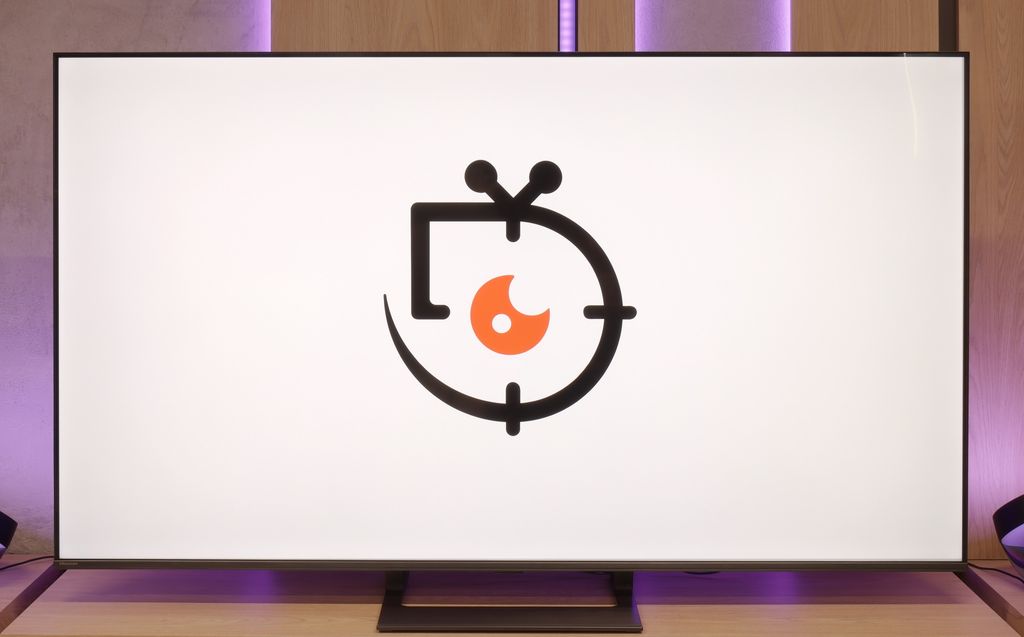
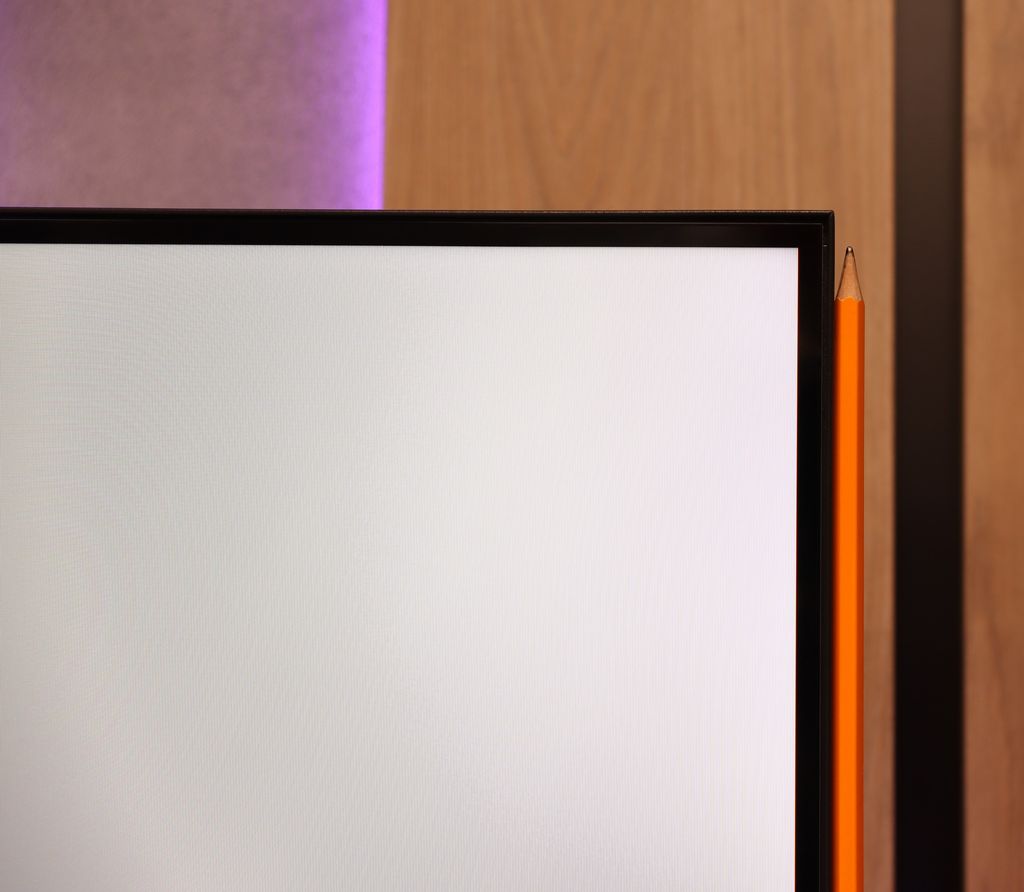
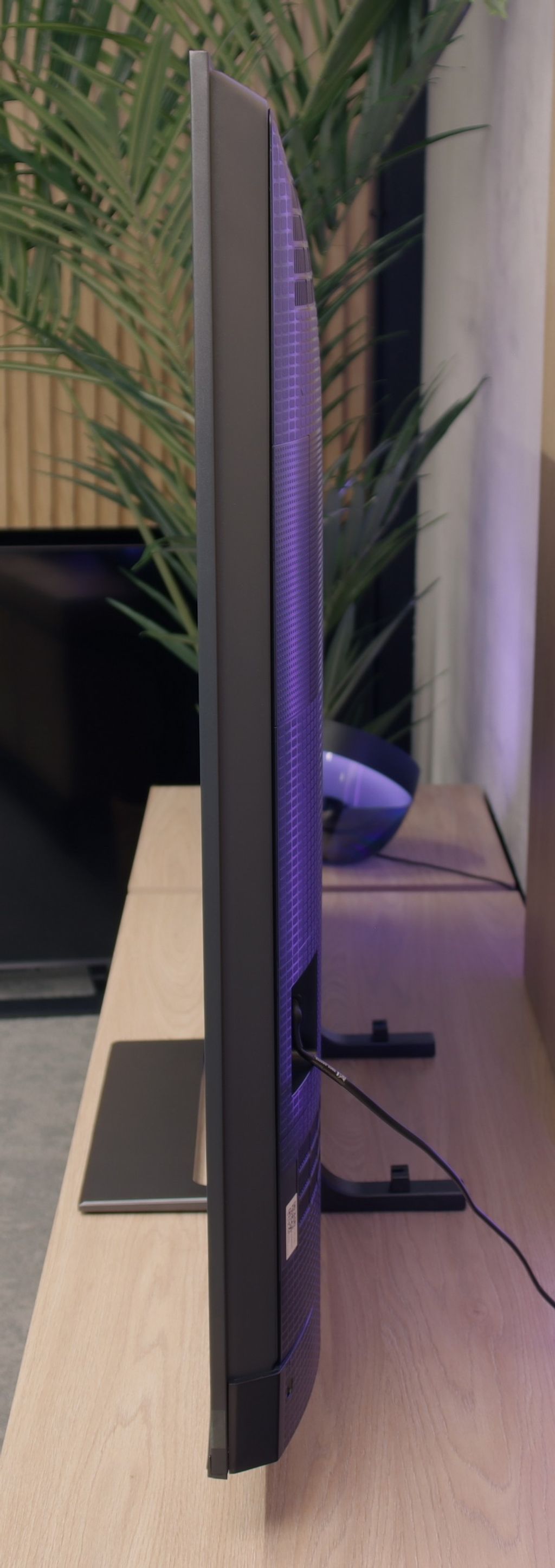
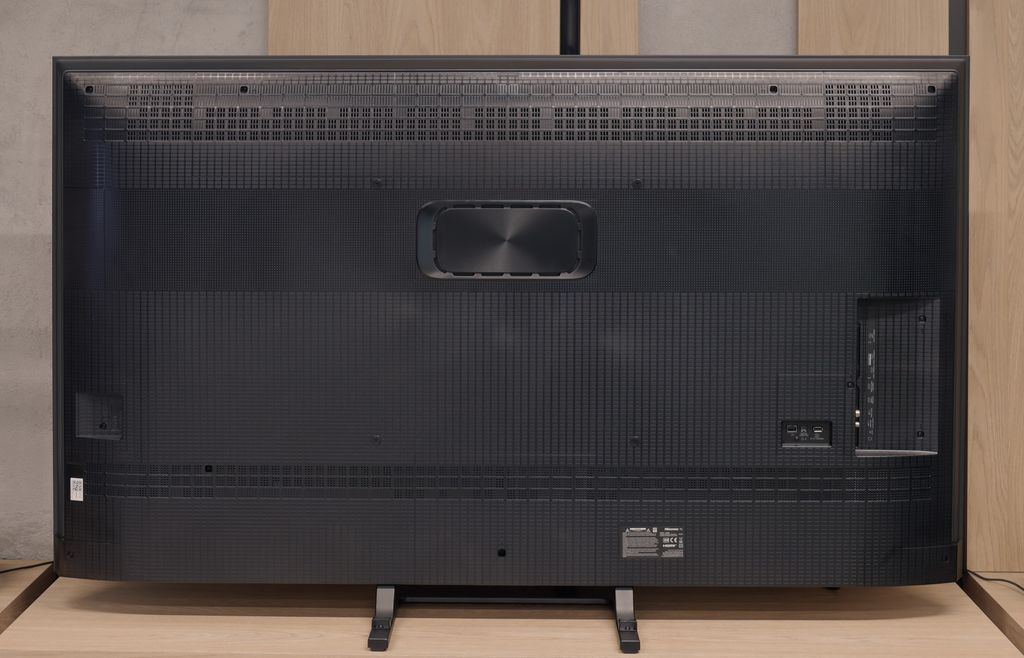
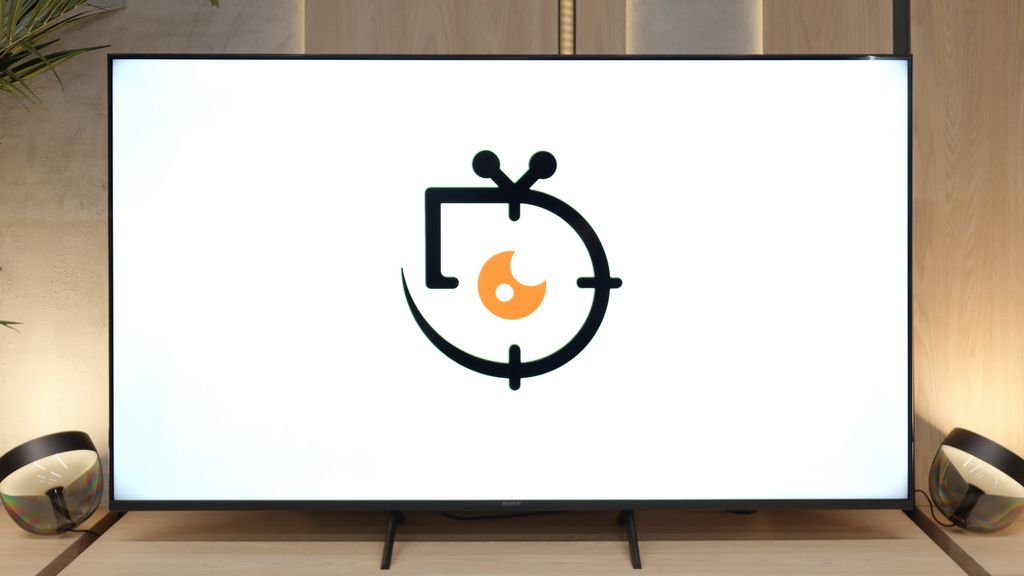
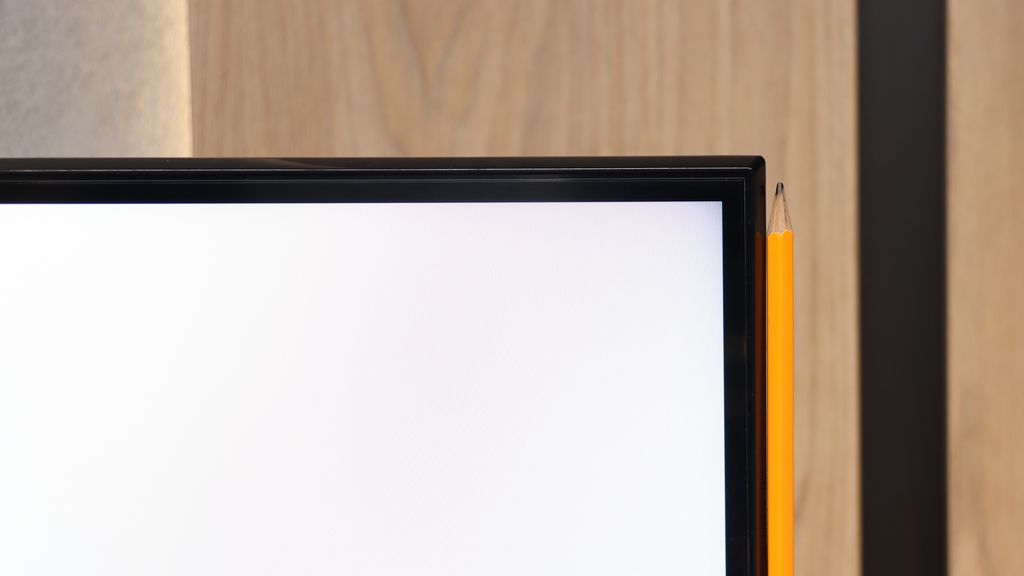
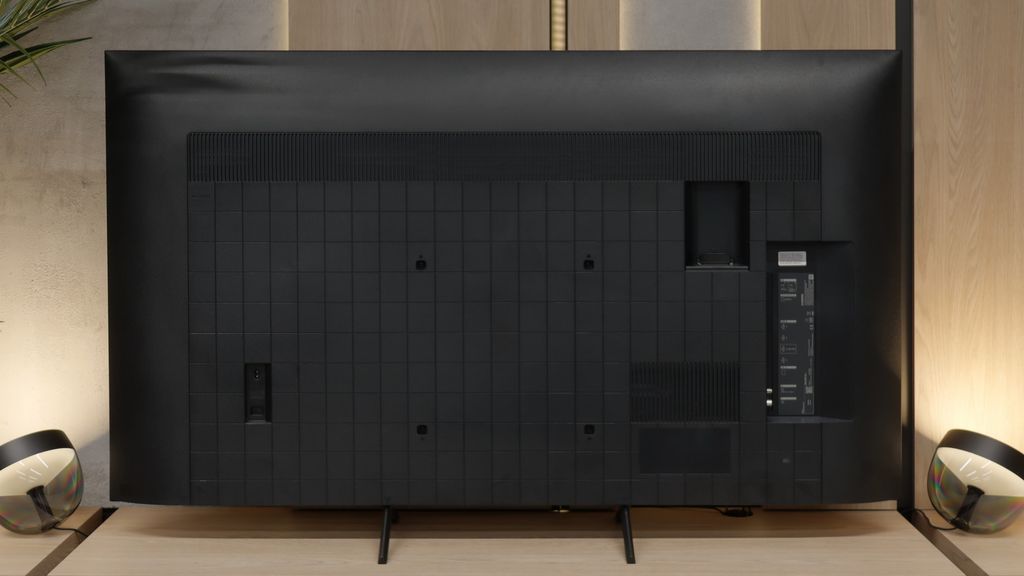
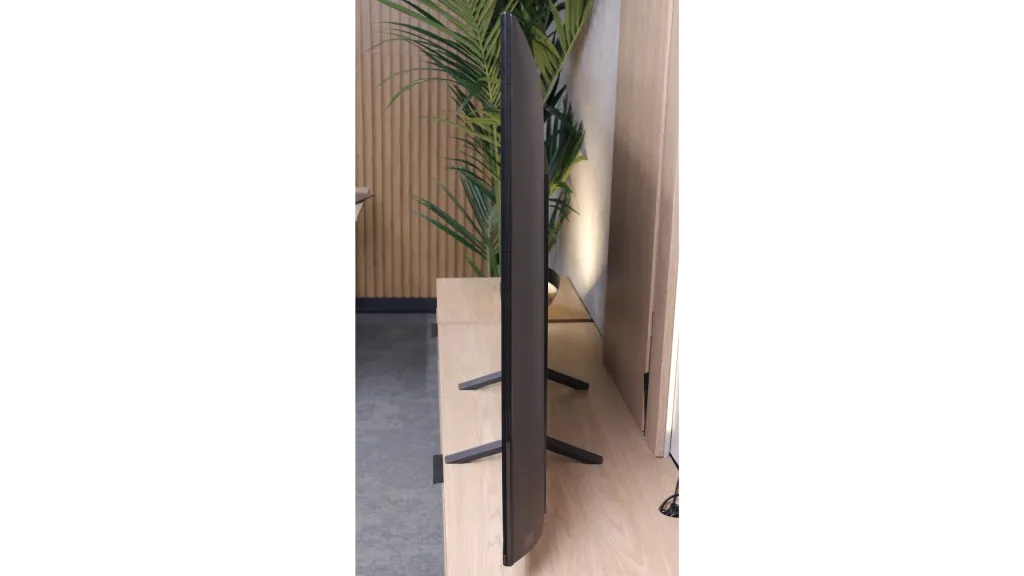
Contrast and black detail
7.6/10
5.7/10
Local dimming function: Yes, number of zones: 220 (10 x 22)
Local dimming function: No
Contrast:

Result
277,000:1

Result
43,700:1

Result
15,750:1

Result
8,850:1

Result
6,350:1

Result
5,550:1

Result
5,250:1

Result
5,050:1

Result
5,150:1

Result
4,000:1
Halo effect and black detail visibility:
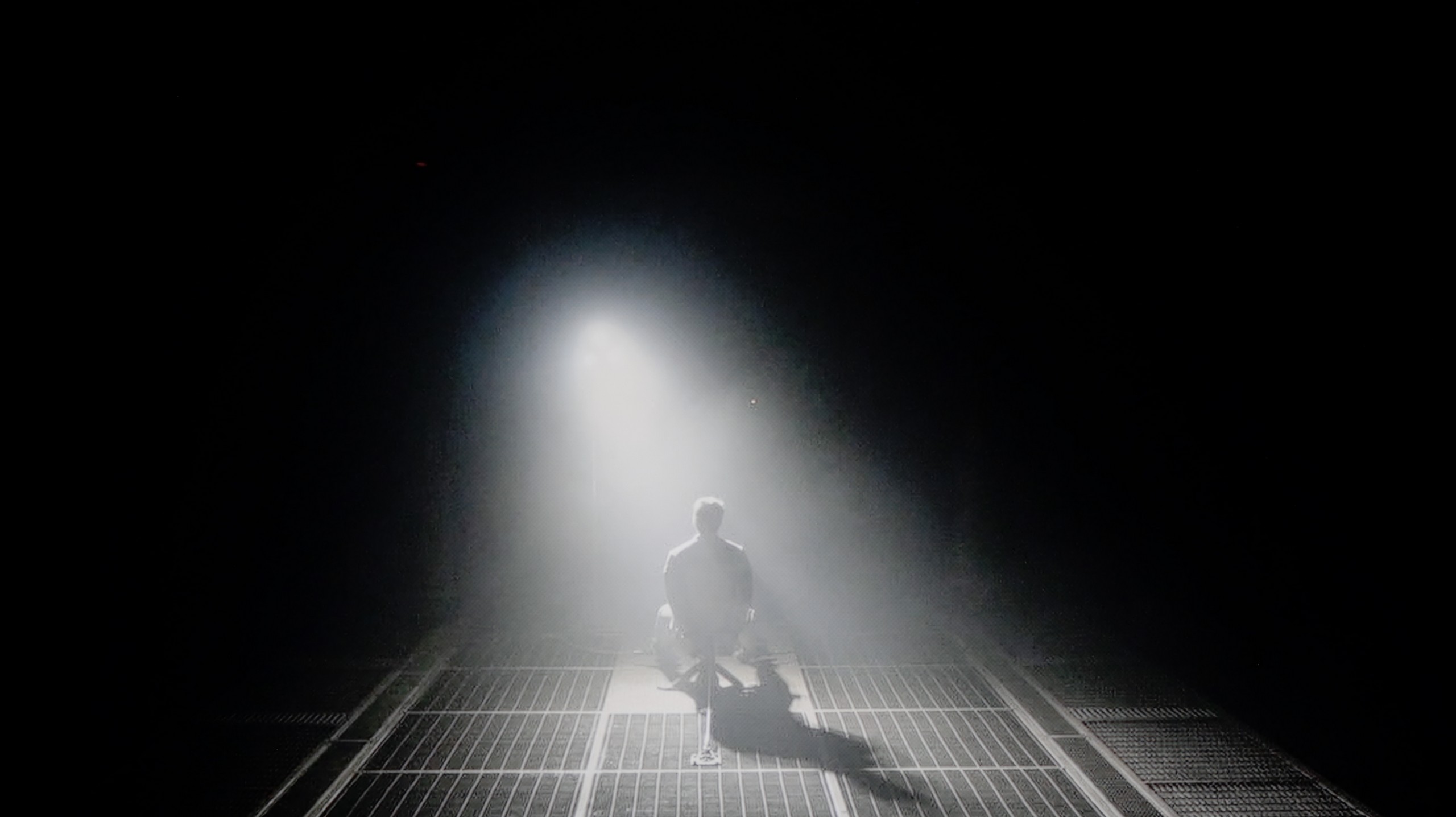
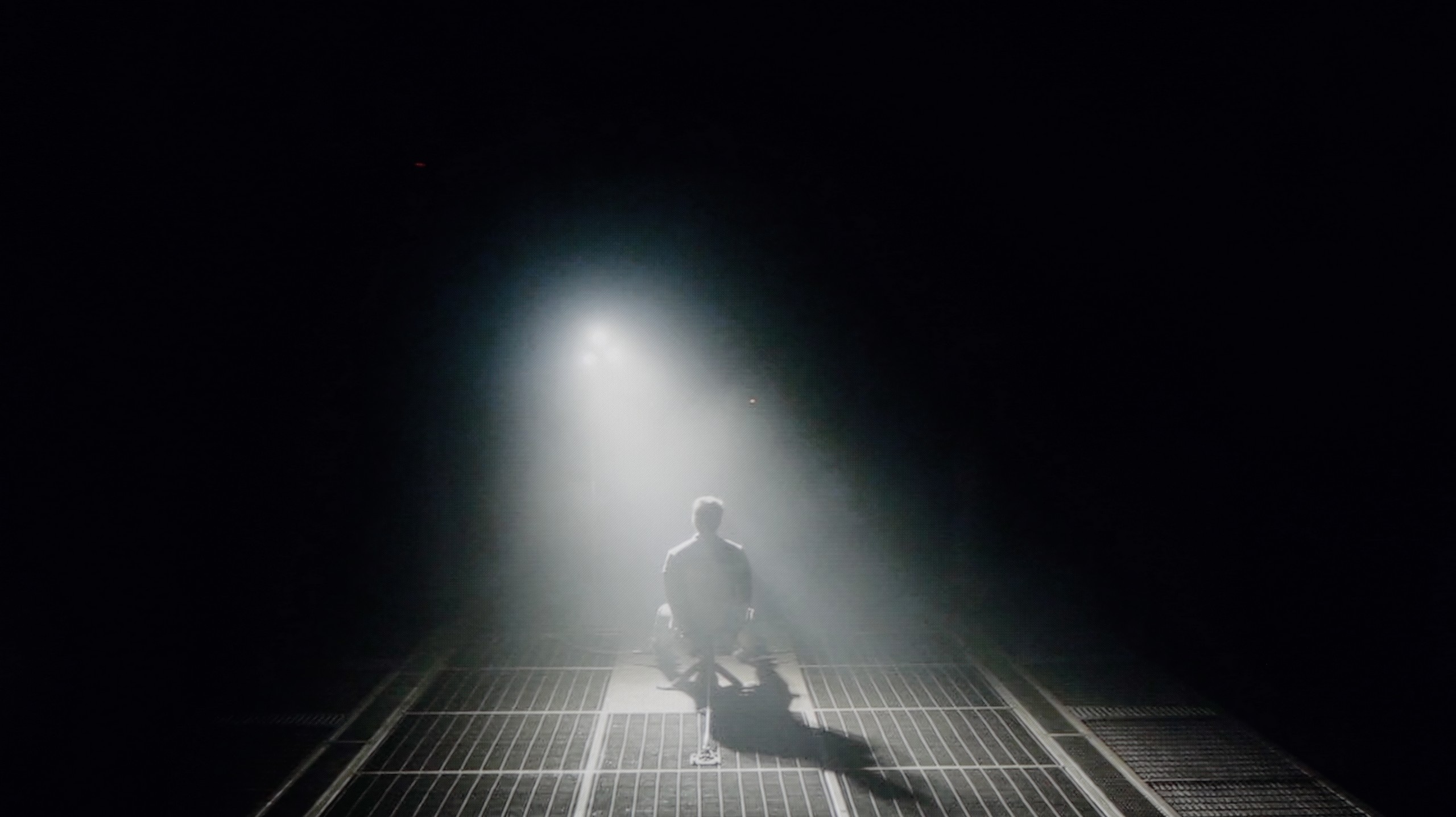
Similar to the U7Q, the E8Q model uses a VA panel and Mini-LED backlighting. The number of dimming zones also remains at a very similar level – in the 65-inch variant we tested, we counted 220 zones, which is exactly the same as in the U7Q. On paper, it looks really good for this price segment, and even better – in practice. The contrast is high, and the black can be really deep. In many scenes, the lights are clearly separated, and the image gains a sense of space. This is one of those cases where Mini-LED shows it can come close to OLED quality – of course, assuming we understand the limitations we have to consider. In very challenging scenes, there may be slight brightening or a minor halo effect around bright objects, but these are phenomena typical of this technology and are not very noticeable. Ultimately – the contrast and blacks in the E8Q are really solid, nearly identical to the U7Q model. It's hard to nitpick, especially when we look at the price of the television.
The biggest difference in the 50-inch variant is how the Bravia 3 handles contrast. Although the TV is not equipped with a local dimming system, the change to a VA panel significantly impacts the effect. The contrast is definitely higher than in the other sizes based on IPS panels, and the blacks no longer resemble washed-out shades of grey or navy. This allows for much more detail to be seen in the darker parts of the image, making evening viewing simply more enjoyable. It's still not the level of Sony's more expensive models, but the difference compared to the other variants of the Bravia 3 is clear and easily noticeable after just a short viewing session.
HDR effect quality
4.5/10
4.9/10
Luminance measurements in HDR:

Result
531 nit

Result
148 nit

Result
320 nit

Result
100 nit

Result
625 nit

Result
319 nit

Result
360 nit

Result
393 nit

Result
365 nit

Result
395 nit
Scene from the movie “Pan” (about 2800 nits)


Scene from the movie “Billy Lynn” (about 1100 nits)
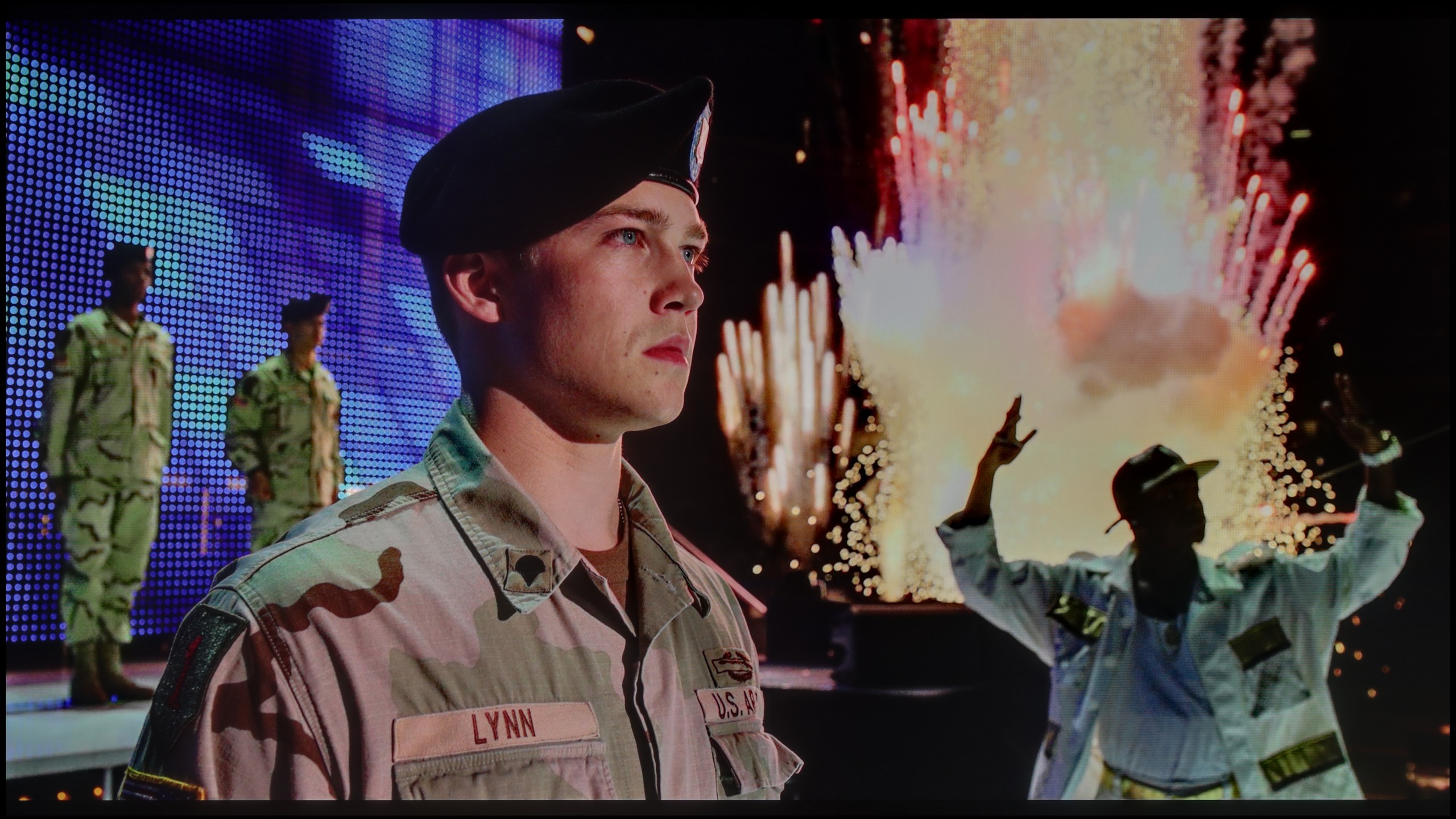

Static HDR10


Dynamic: Dolby Vision
Dynamic: Dolby Vision


HDR luminance chart:
Sony Bravia 3 50' (VA)
HDR luminance
Hisense E8Q
HDR luminance
Since the E8Q is a twin of the U7Q, it’s no surprise that the HDR effect quality is almost identical. On paper, it looks promising – a peak brightness of 800 nits can impress in many scenes. Moments like light flashes in “The Meg” or shots of the sun in “Life of Pi” can indeed create a “wow” effect. But the longer we watch, the more we notice the limitations. The problem arises when small, bright details need to be shown against a dark background. In such situations, the dimming algorithms try to protect the contrast, but in the process, they also dim what should shine the brightest. Instead of dazzling details, we get almost invisible points of light. This is typical for Mini-LED in this price segment and is not surprising – but it’s worth knowing that the HDR effect will not always be fully preserved. Fortunately, the colour reproduction provides reasons to be pleased. A coverage of the DCI-P3 palette of about 94% is a very good result, and the quantum dot layer used (more precisely, PFS) does its job – colours are saturated and vibrant, especially with 4K content.
Interestingly, in the 50-inch version, the Bravia 3 performs slightly better in terms of brightness than its larger variants. In measurements, it achieved around 370 nits, which still aren’t values that can compete with top-tier TVs, but are sufficient to speak of a semblance of HDR effect. For some users, this level will be acceptable; others will consider it typical for SDR content, where striking highlights or strong contrasts are not expected. So it must be clearly stated that the Bravia 3 is not a TV for those who want to squeeze maximum quality from the most challenging film materials.
However, this doesn’t mean that everything is average. Sony has equipped this model with an additional PFS filter, which works similarly to the solutions used in QLED TVs. As a result, the coverage of the DCI-P3 colour gamut has increased to over 91 percent. In everyday use, this means livelier, more saturated colours and a more pleasant image quality. Even if it lacks strong lighting effects, movies and series can look significantly more appealing than in its predecessor, the X75WL.
Factory color reproduction
6.5/10
5.8/10
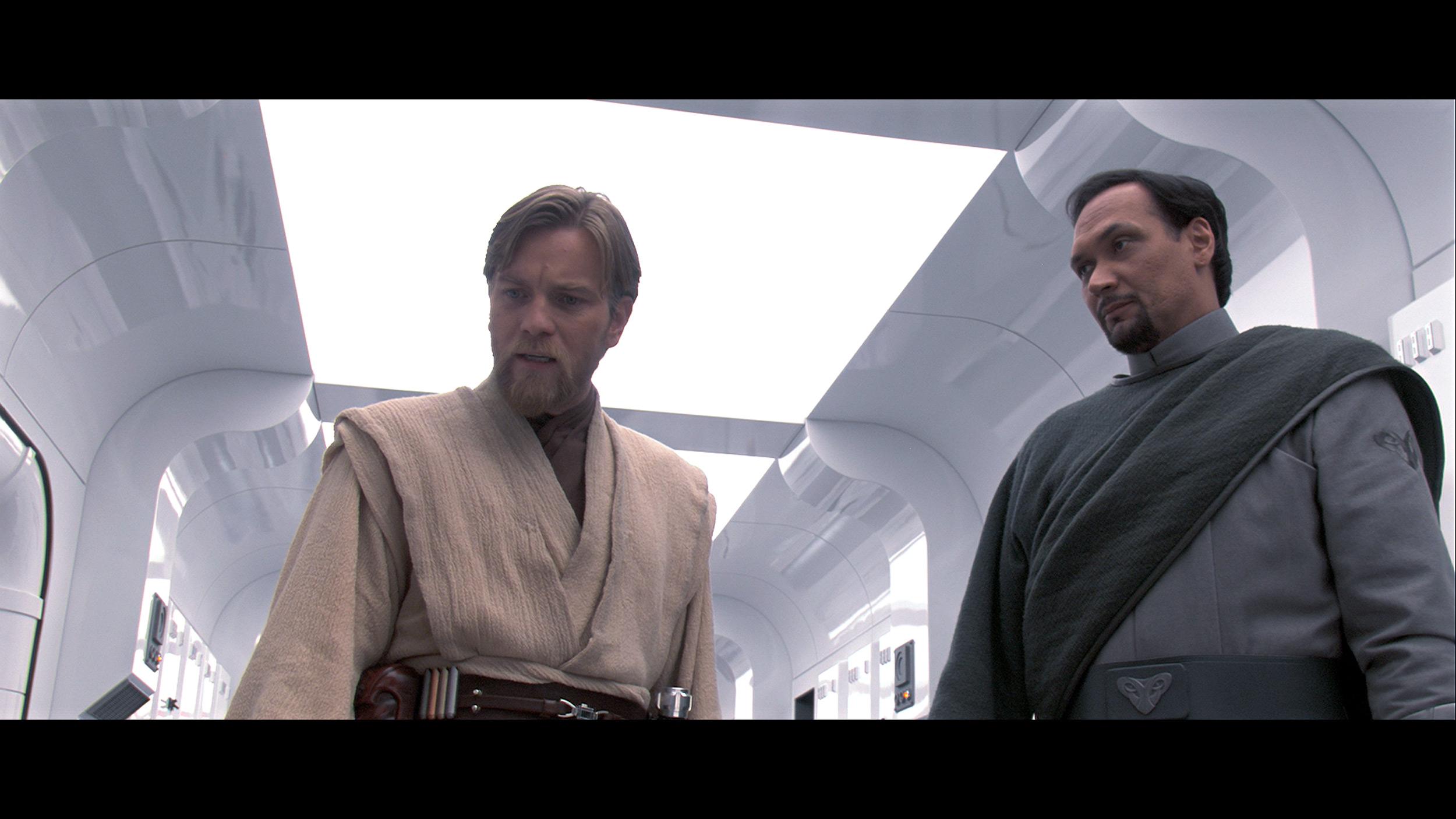
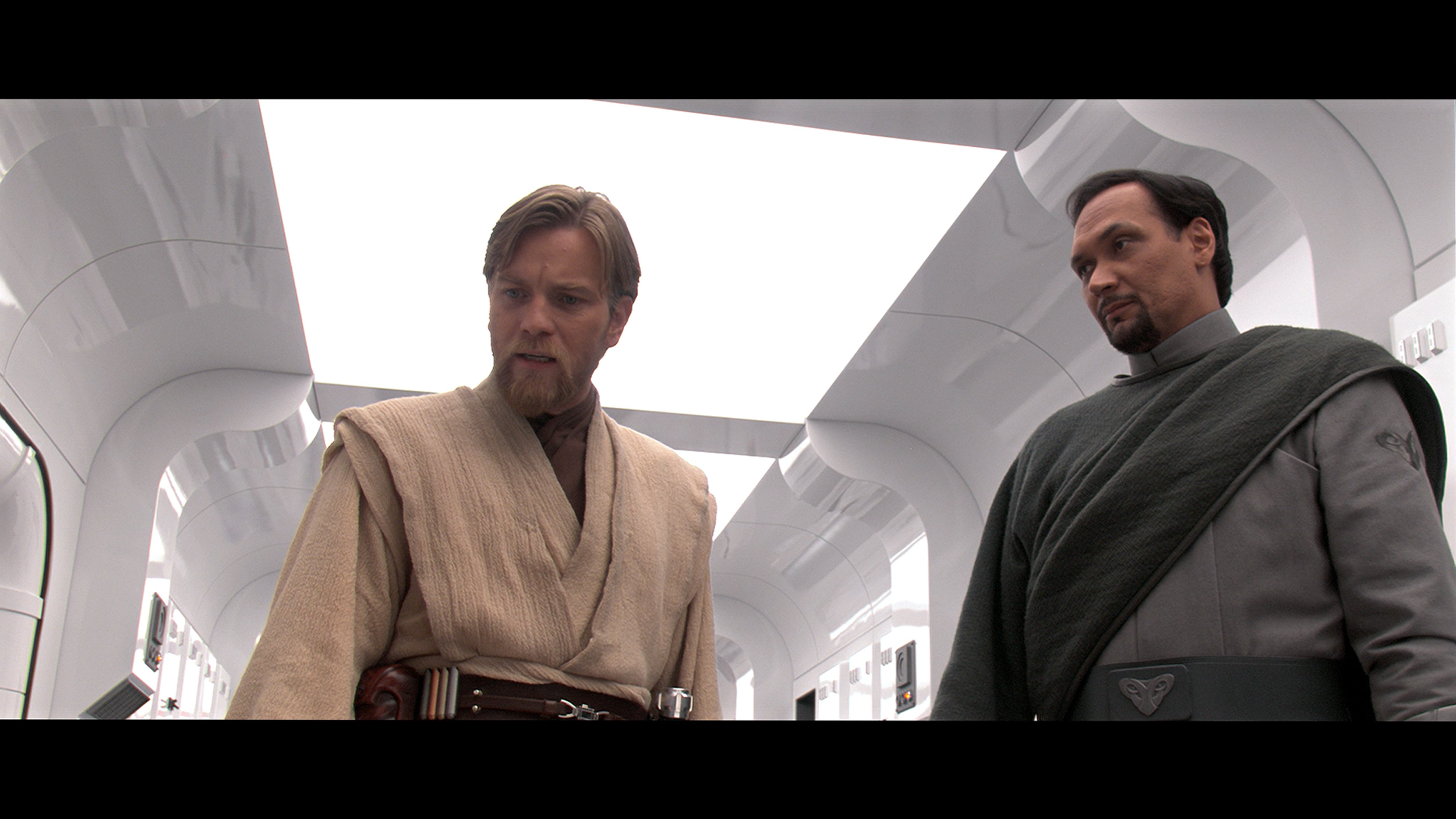
Factory Mode
After calibration


Factory Mode
After calibration
Testing the Hisense E8Q in Filmmaker mode, we were hoping for a potentially neutral picture resembling the director's vision. Unfortunately – although it doesn't look too bad on paper (the colour reproduction errors aren't significant), in practice the image feels somewhat unnatural. The reason? The blue colour is boosted too strongly and there is a deficiency of red in the white balance. The effect? Scenes appear cool, and the white seems slightly bluish. Alongside the U7Q model, we also noticed a specific approach to brightness management here. The brightness reproduction curve for HDR content (EOTF) shows that the TV can significantly dim small, bright elements on the screen to maintain contrast – but sometimes it goes too far. On the other hand, it can excessively brighten larger, very bright areas, which disrupts tonal balance. It's a compromise that may not suit everyone – especially if you want a potentially faithful picture straight out of the box.
Sony Bravia 3 was primarily tested in movie mode, which immediately turned out to be the best choice among the factory settings. It's not a perfect picture, but compared to the eco mode that the TV suggests right out of the box, the difference is clear and positive. In movie mode, one can notice a certain issue: the image appears too warm, which stems from a lack of blue in the white balance. Nevertheless, in SDR content, the final effect can still be considered quite decent and satisfactory for everyday viewing. Much more serious errors emerge in HDR materials. The Color Checker analysis showed significant deviations, and poor brightness management combined with limited colour gamut coverage further exposes the shortcomings of the picture in this mode. All of this makes HDR on the Bravia 3 seem unconvincing and can spoil the impression left by the quite decent SDR content settings. Fortunately, this is not a hopeless situation. Various errors can be somewhat mitigated, and some can even be completely corrected through professional calibration. That's why we decided to check how the TV would perform after such adjustments.
Color reproduction after calibration
7.4/10
7.5/10


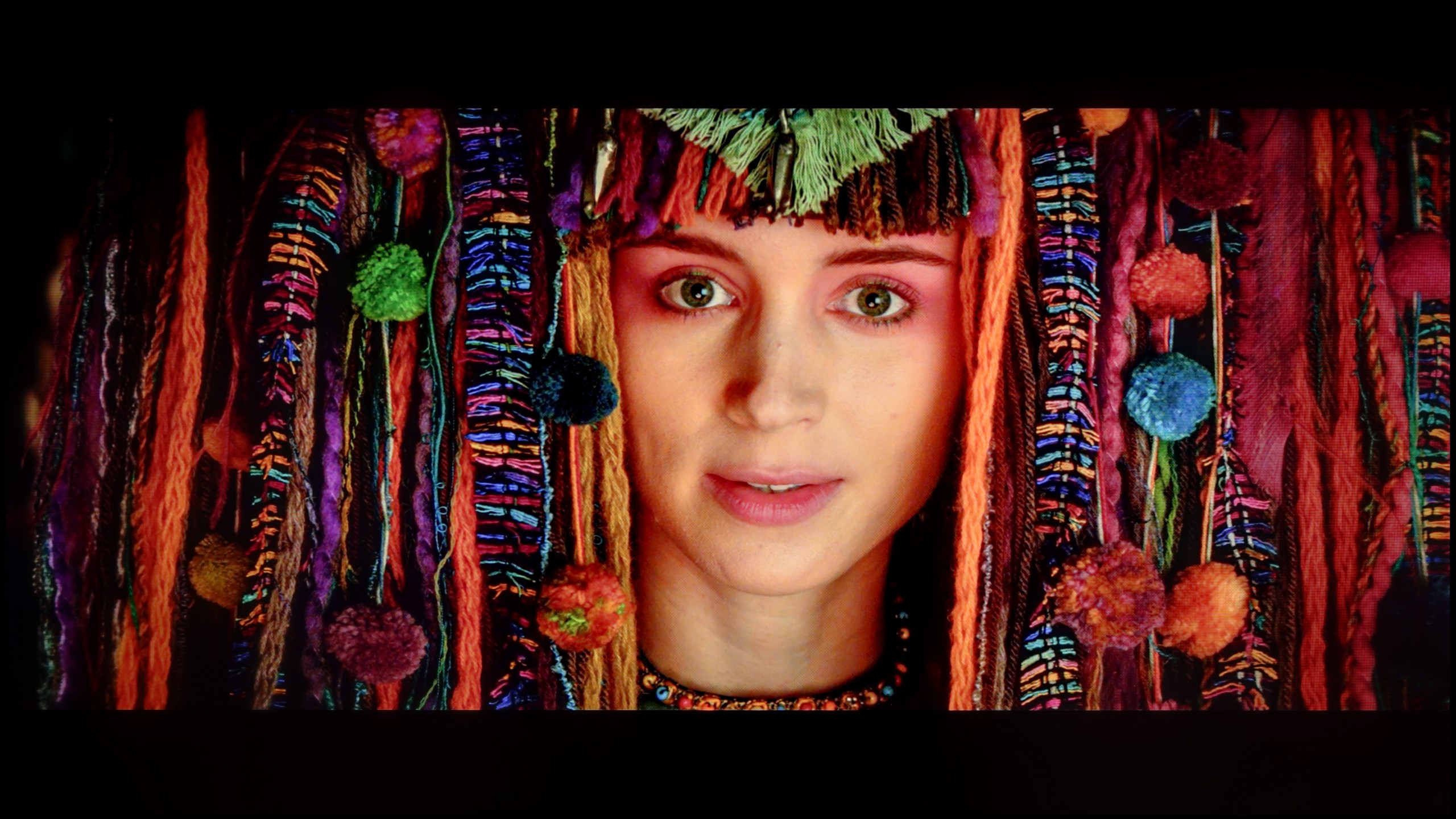

Calibration of the Movie mode yielded really good results, especially regarding SDR content. The white balance was successfully adjusted, giving the image a natural look – it appeared almost reference-level. The colours were well-saturated, and the overall experience of the content improved significantly. Unfortunately, when we switched to HDR materials, the familiar issues from the U7Q model returned. The TV still likes to "do its own thing," as seen from the analysis of the EOTF brightness characteristics – despite calibration, the E8Q still darkened small details in the shadows, while brighter parts of the screen were sometimes excessively boosted. In practice, this means that in darker scenes, some of the smallest details could simply disappear. Although it's worth noting that the entire calibration process brought a lot of good, not everything can be bypassed – even with the use of professional tools. The E8Q can impress with its picture, but in HDR content, its construction limitations become apparent, and it's worth keeping this in mind.
The calibration allowed us to extract significantly more from the ChooseTV 3 than we could have expected at the beginning. Firstly, we managed to correct the deficiency of blue, which previously caused a noticeable warming of the image. After a slight adjustment in the white balance, most of the errors in the Color Checker measurements for SDR content practically disappeared. The shades of white gained a natural quality, and brightness management in gamma stabilised to an almost ideal level, not exceeding the threshold of human eye perception. Therefore, it can be confidently said that in SDR content, after a few tweaks in the settings, ChooseTV 3 performs really remarkably. Much worse, although still decidedly better than before calibration, are HDR contents. The white balance was managed to be sorted out, however, the limitations of the IPS panel are insurmountable. The lack of local dimming means that even the smallest elements can be overexposed, which is immediately noticeable. Colour-wise, the effect has also improved, although it is far from perfect – many errors still exceed the threshold of four, and even five delta E units, which means they remain visible to the human eye. It was already clear earlier that ChooseTV 3 is not a television designed to impress with HDR quality. Nevertheless, it is pleasing that in SDR content, after calibration, the image can look really great, and in this category, the television has positively surprised us.
Smoothness of tonal transitions
9.9/10
9.1/10
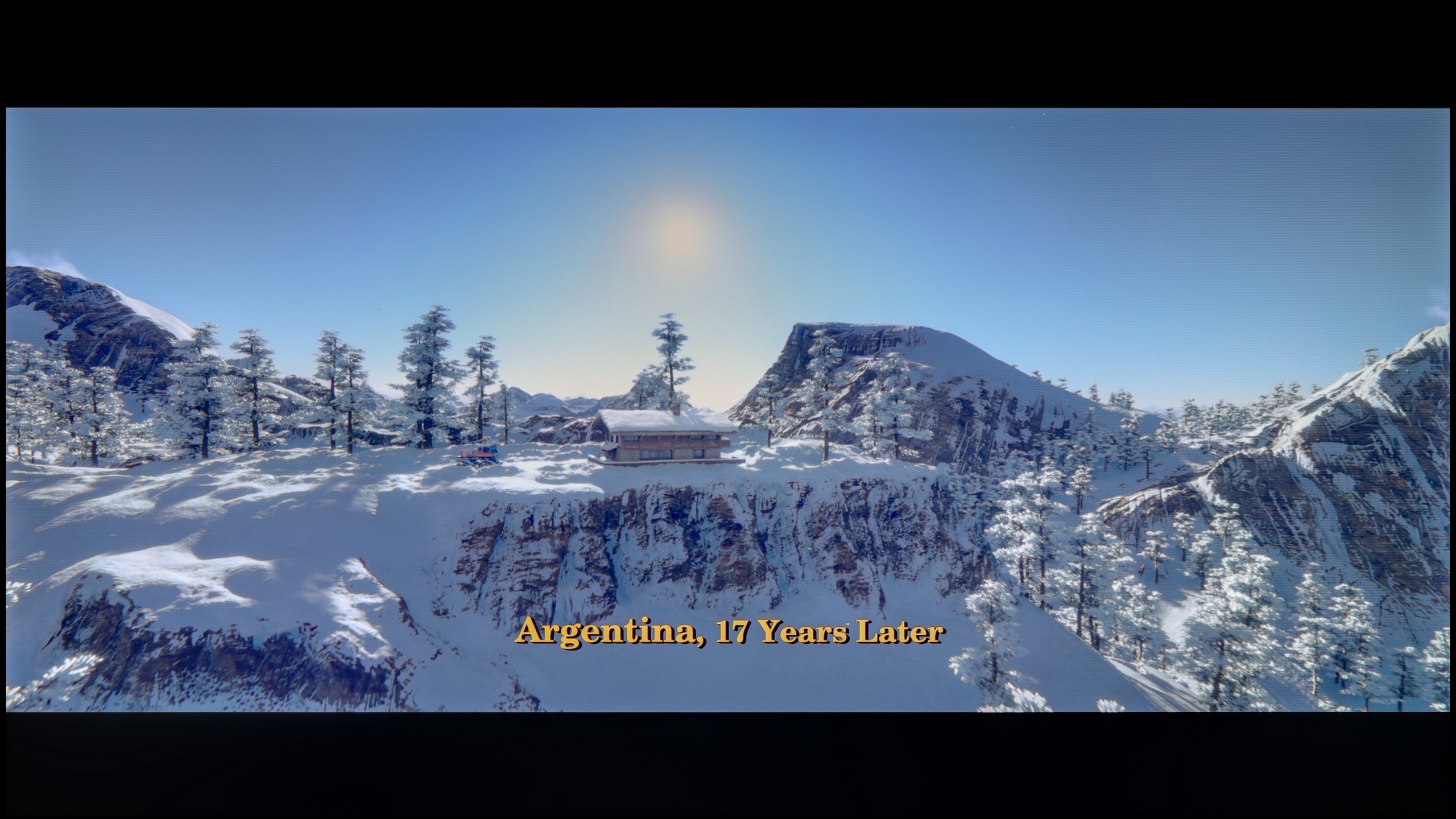
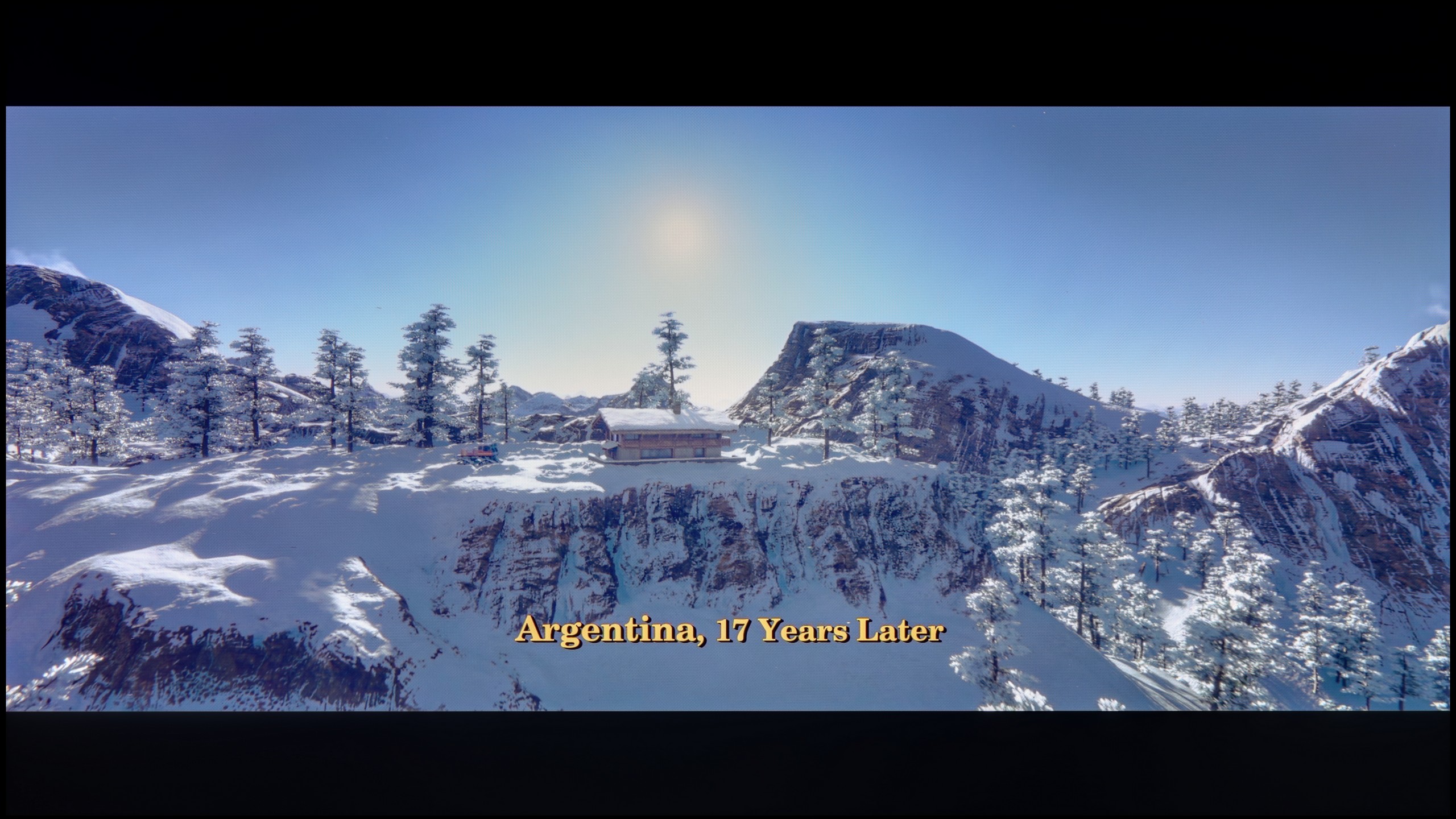


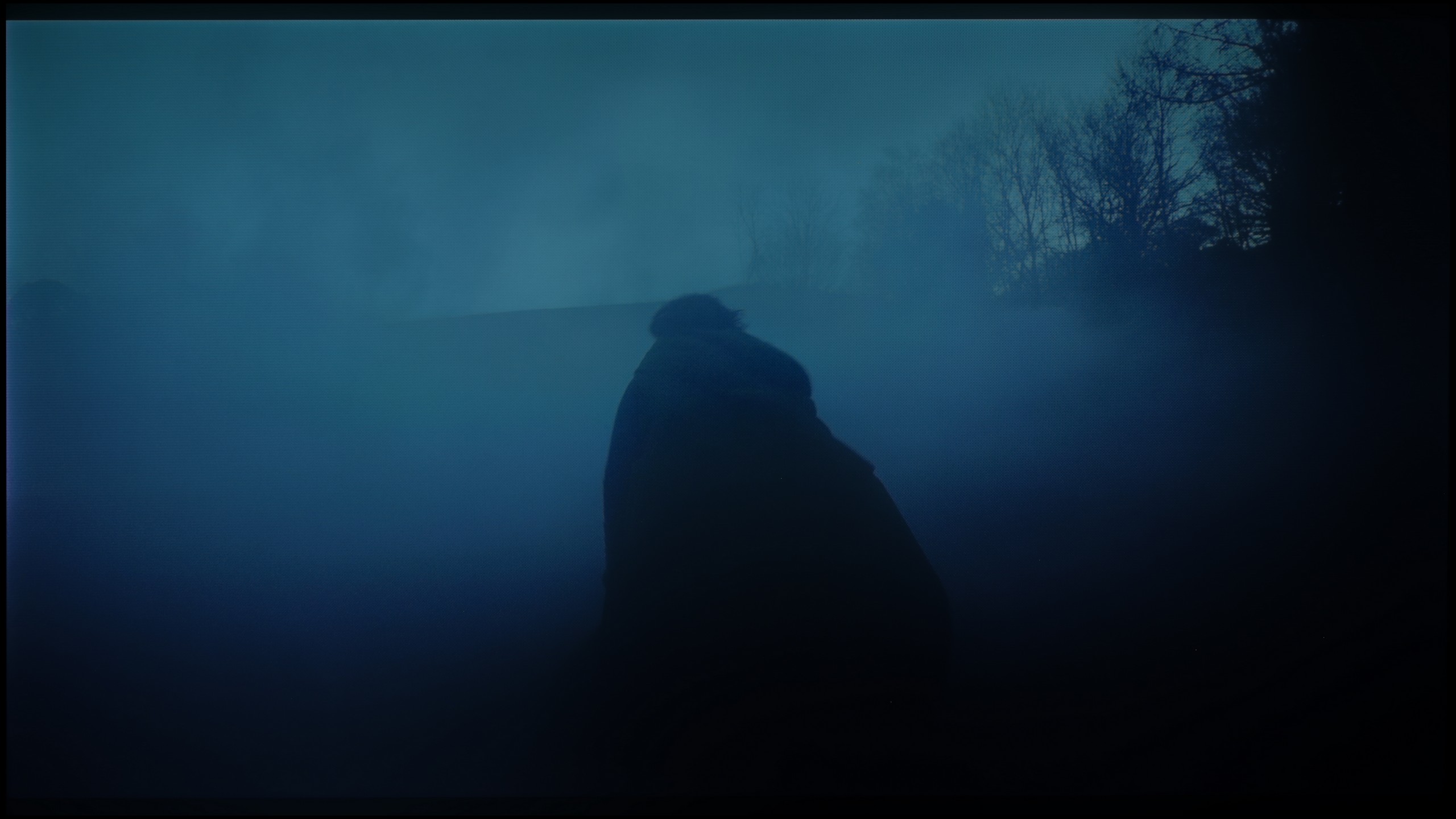
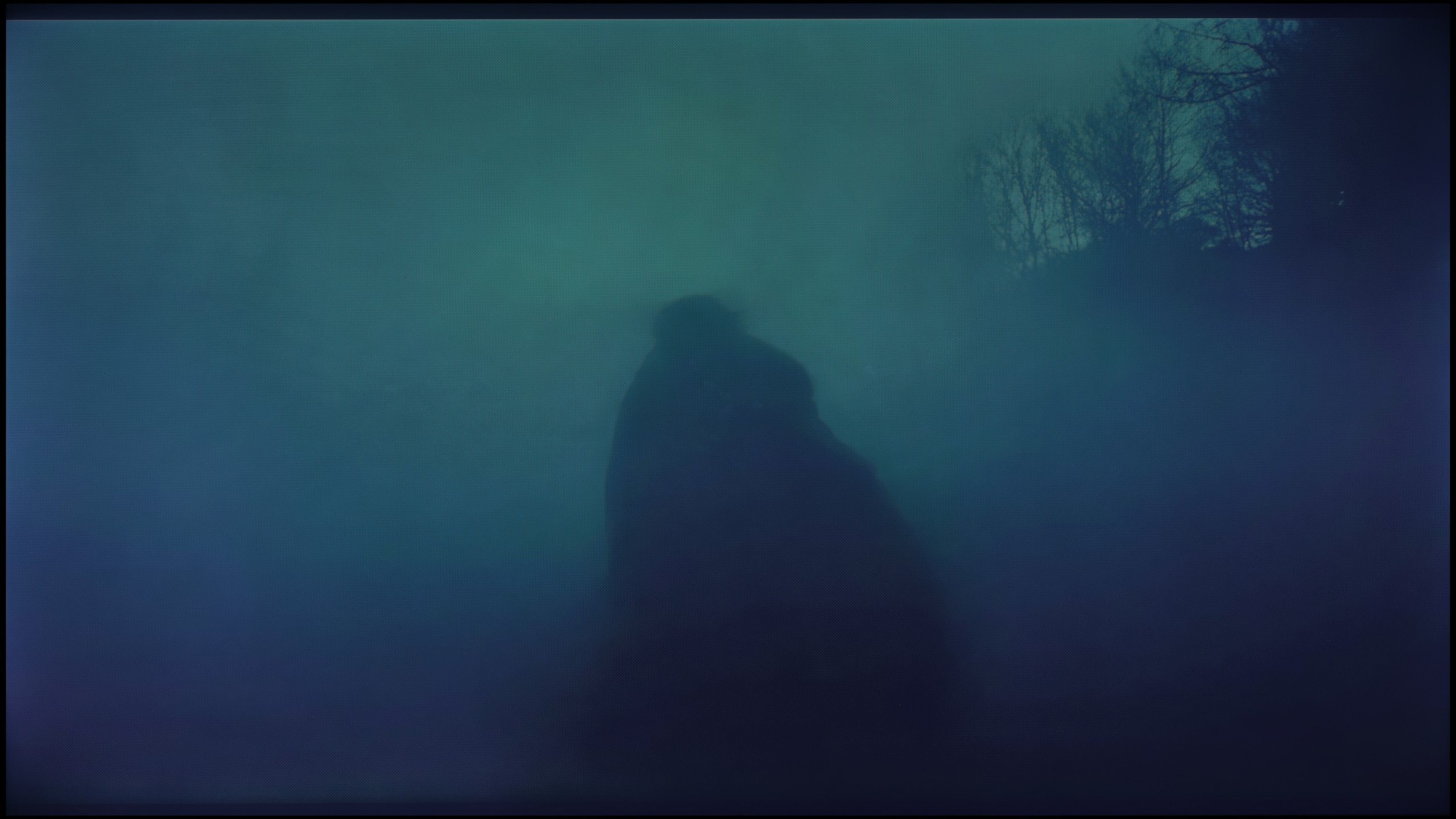
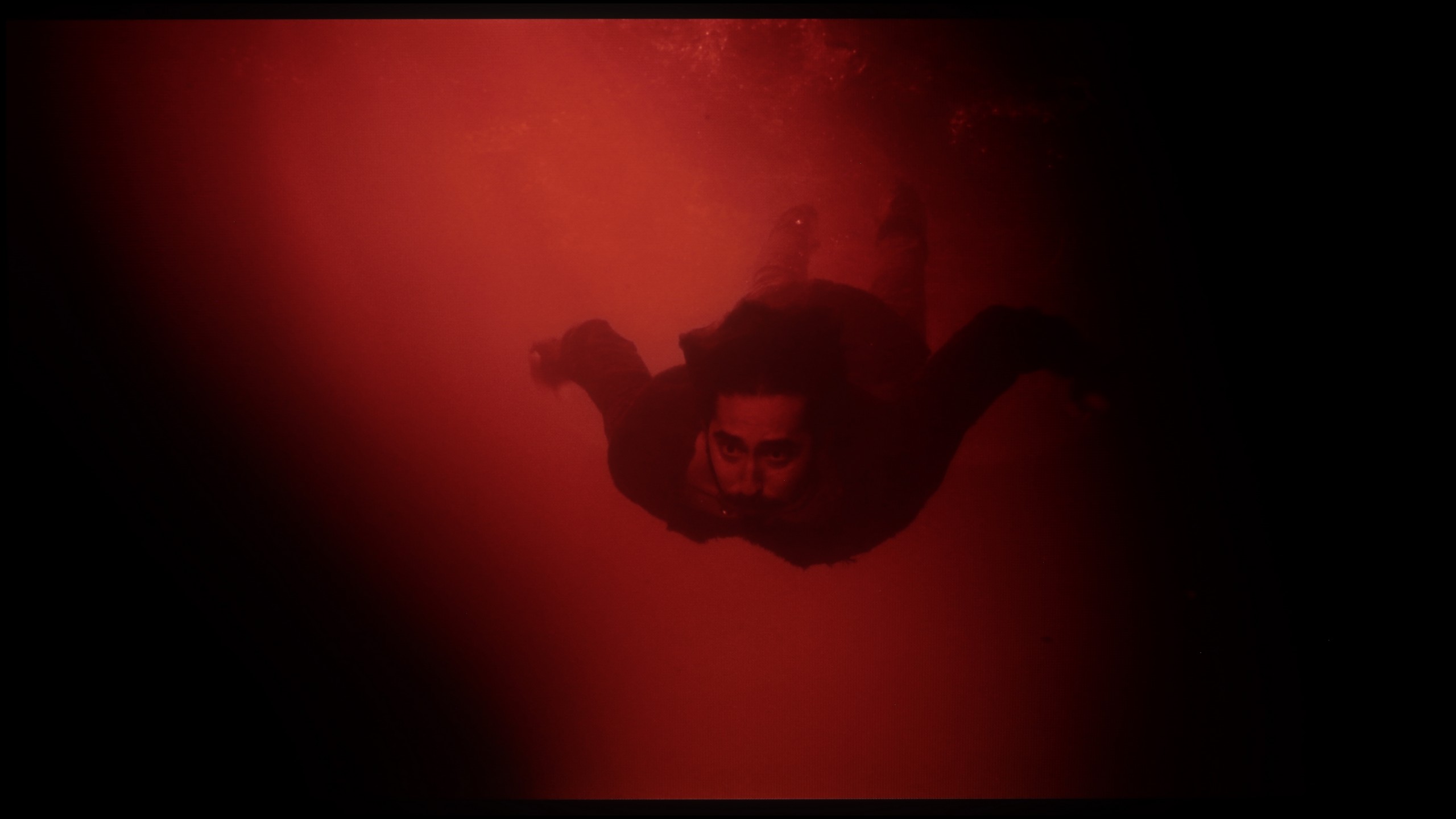
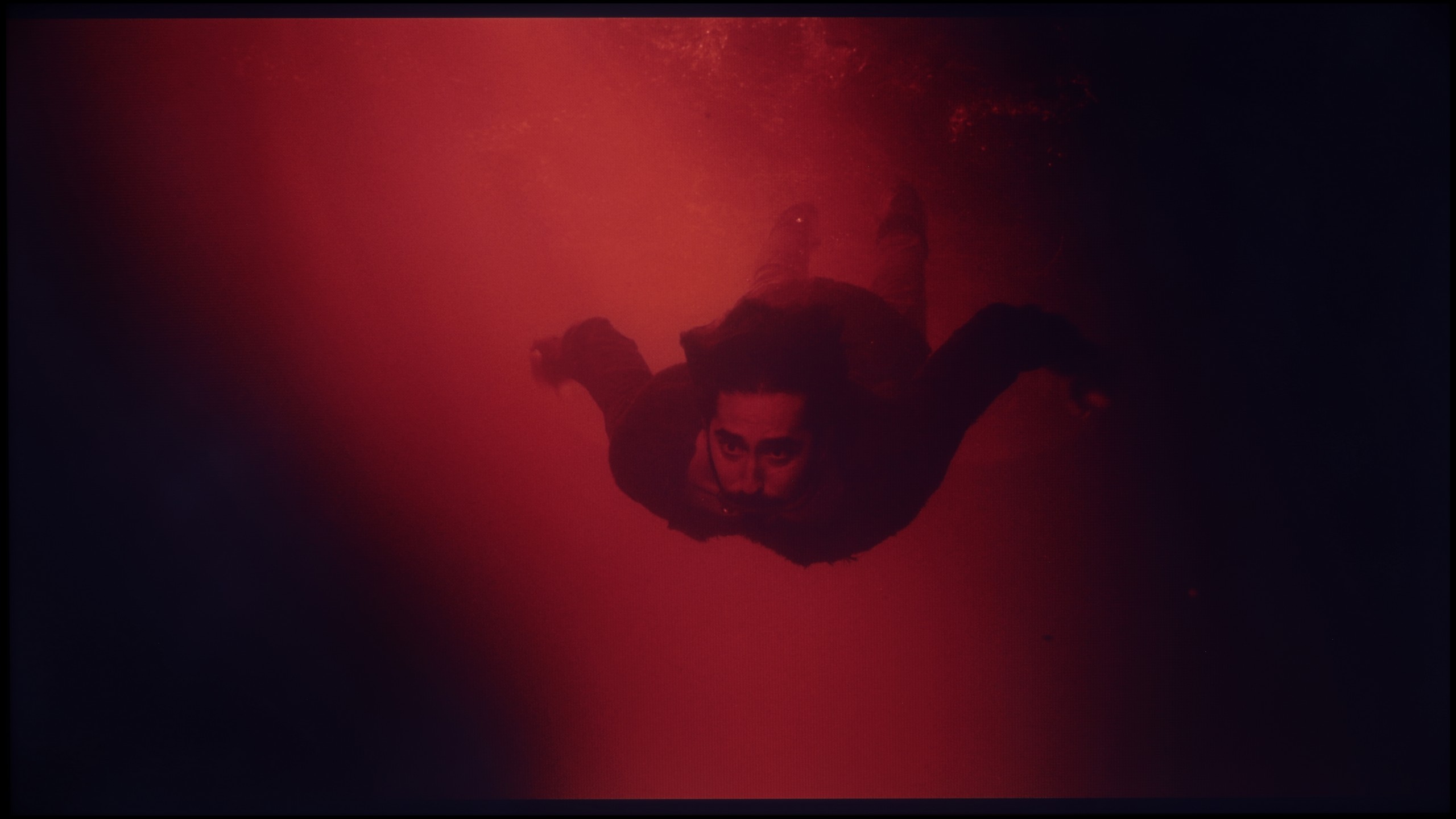




In this category, the Hisense E8Q really demonstrates its quality. The transitions between colours are very smooth, without any "steppings" or clear boundaries between tones. The image looks natural, and the colour gradation performs exceptionally well – even in more challenging scenes. If there are any minor imperfections, they are subtle enough not to be noticeable. It's hard to find fault here – it looks almost perfect.
In terms of tonal transition fluidity, the experiences from the Bravia 3 with a VA panel are quite similar to what we saw in the IPS variant; however, there is one significant factor here – screen uniformity. The VA panel manages much better at maintaining image consistency, which immediately translates to a higher rating. This was most noticeable in scenes from the film Green Knight. In the IPS version, strong brightening and vignetting practically made it impossible to assess the gradation itself, whereas in the 50-inch variant, this issue was greatly reduced. As for the tonal transitions themselves, the television performs really well. In the bright parts of the image, we noticed no serious errors – colors blend smoothly, without creating artificial contours. In darker scenes, there are also no major problems with color gradation, and thanks to more uniform backlighting, the image is significantly more pleasant to perceive than in the IPS panel version. So we can say that this is one of those categories where the Bravia 3 in the 50-inch version performs surprisingly well.
Image scaling and smoothness of tonal transitions
6/10
7/10
Smooth transition function
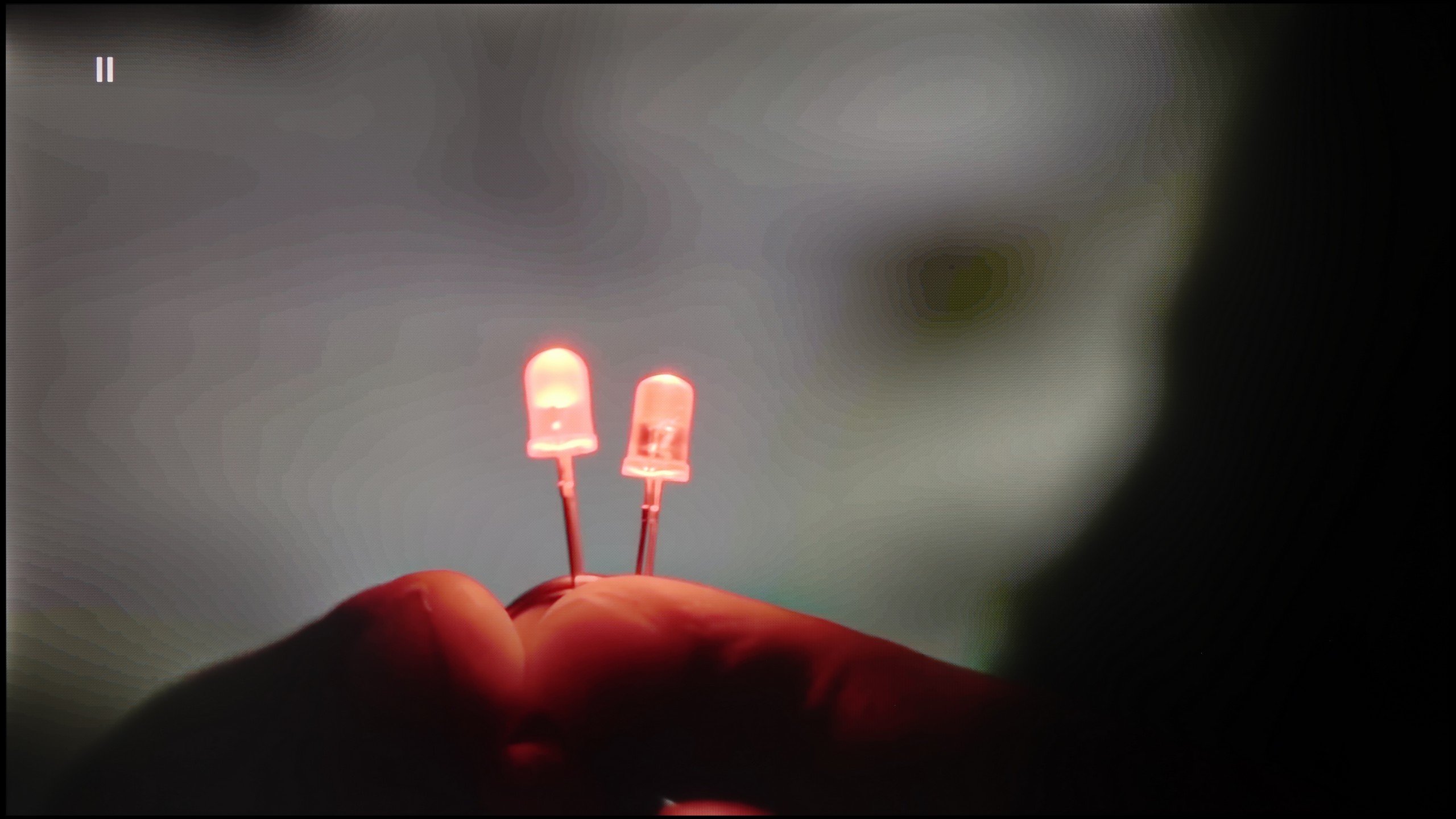
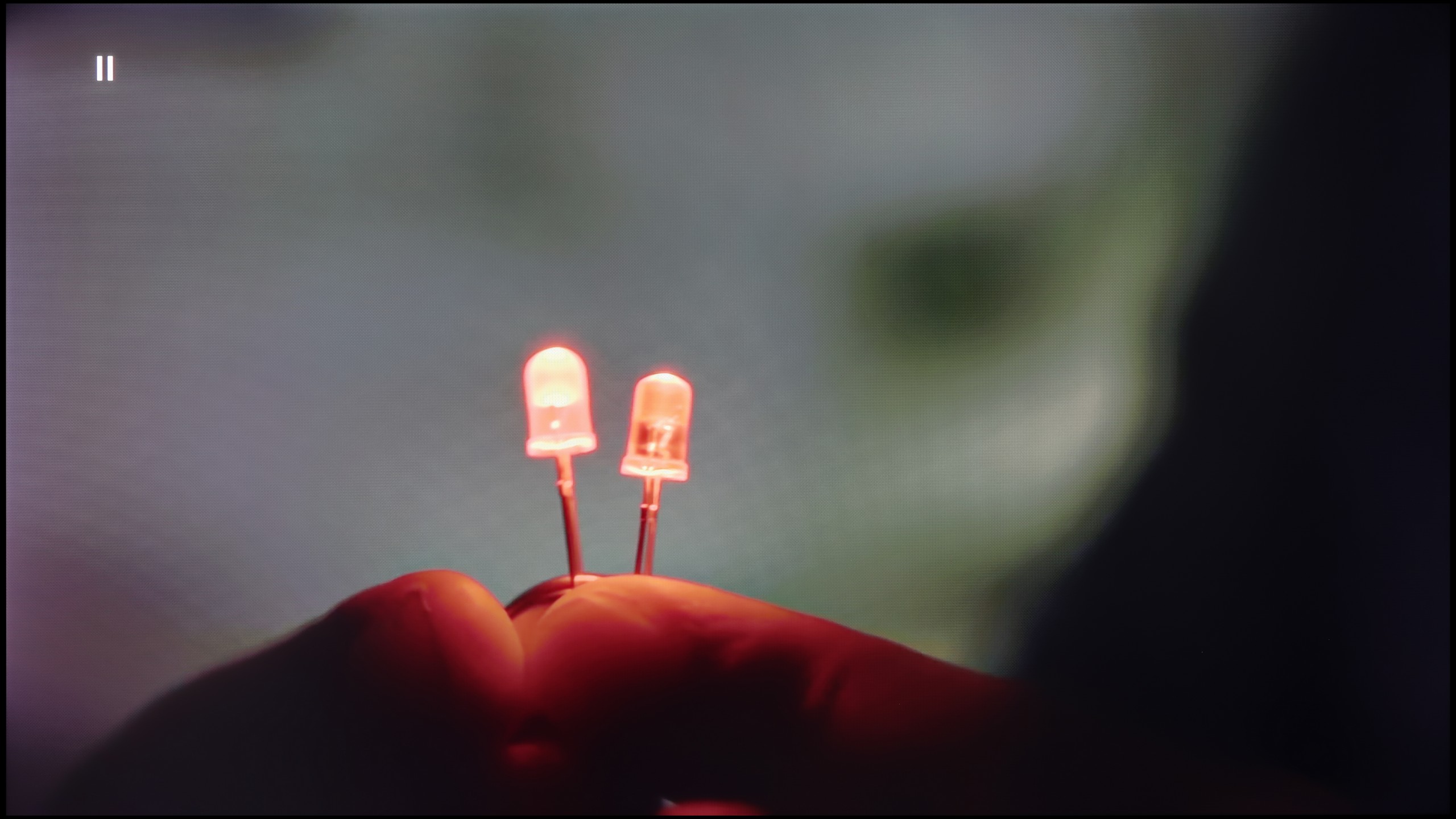
Image without overscan on the SD signal


In the case of older materials of lower quality, gentle smoothing of tonal transitions often comes in handy. The Hisense E8Q, like the U7Q, has a "Smooth and Gradient Picture" feature, but unfortunately, its effectiveness leaves much to be desired. The "Low" setting is nearly invisible in operation, while higher settings blur details instead of improving transitions. The good news is that the feature does not compromise film grain, which means it does not degrade the structure of the image. On the positive side, scaling is commendable. The TV can reasonably convert older content to a higher resolution – without artificially accentuating contours or excessive sharpening. Although it doesn't match the best models in this category, it performs quite well for its class.
Bravia 3 brings more to the Sony TV family than just a shared name. It stands out primarily with its ability to enhance the quality of weaker materials thanks to the processor used. Of course, we won't find the advanced XR chip known from more expensive models here, but even so, it's fair to say that the image in lower resolutions looked surprisingly good. Scaling worked effectively, and most parts of the screen were devoid of the typical excessive edge tearing found in budget constructions. The feature that improves the fluidity of tonal transitions is also noteworthy. At the high setting, it performs quite well, effectively masking gradient imperfections without a significant loss of detail. It does occasionally happen that the algorithm smoothingly blurs elements that should remain sharp – for example, faces – however, in the overall assessment, the effect is beneficial. The best results were achieved precisely at the highest setting, and this option could be recommended to those watching lower quality content.
Blur and motion smoothness
7.5/10
4.5/10

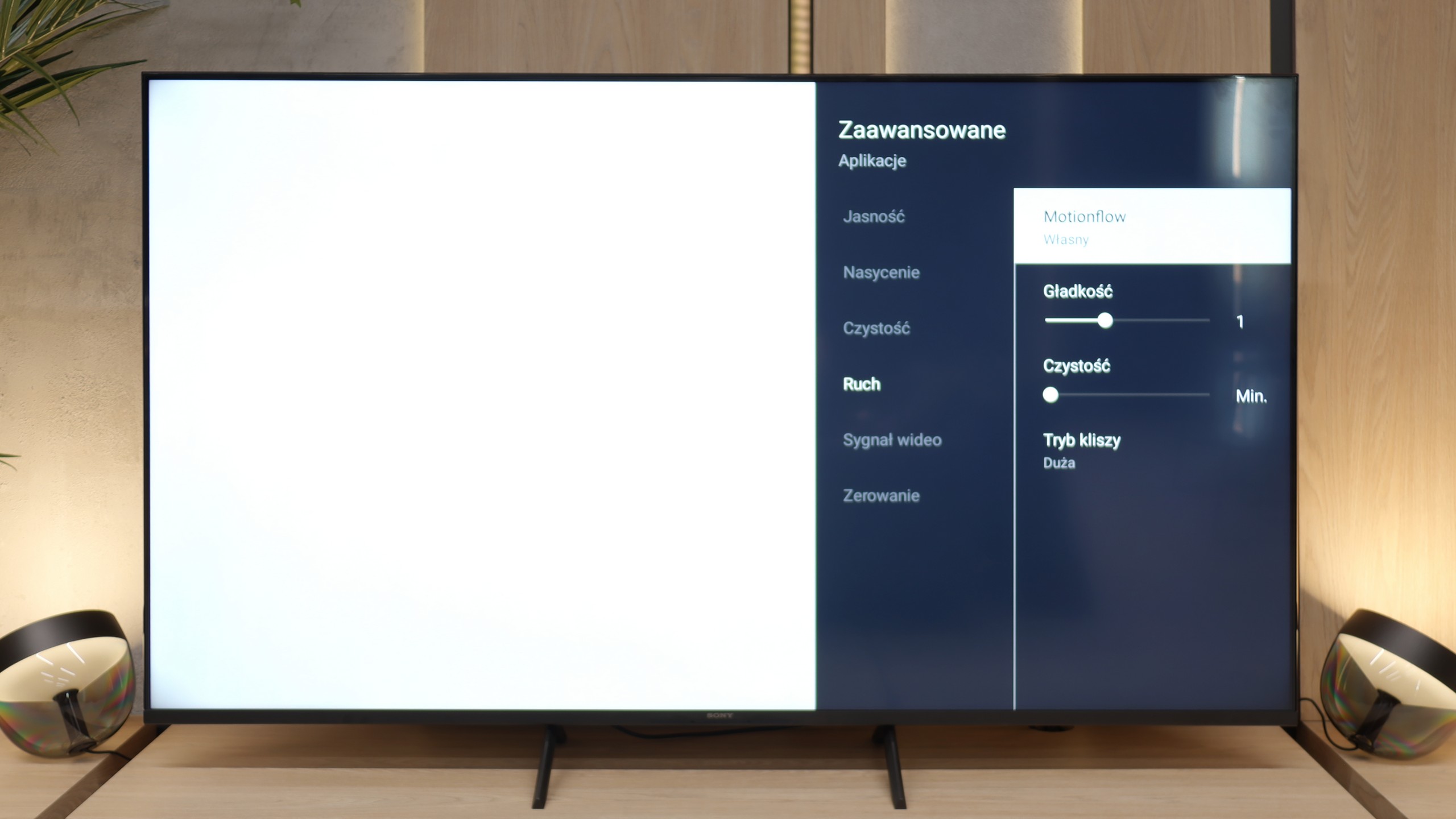
Blur (native resolution, maximum refresh rate):
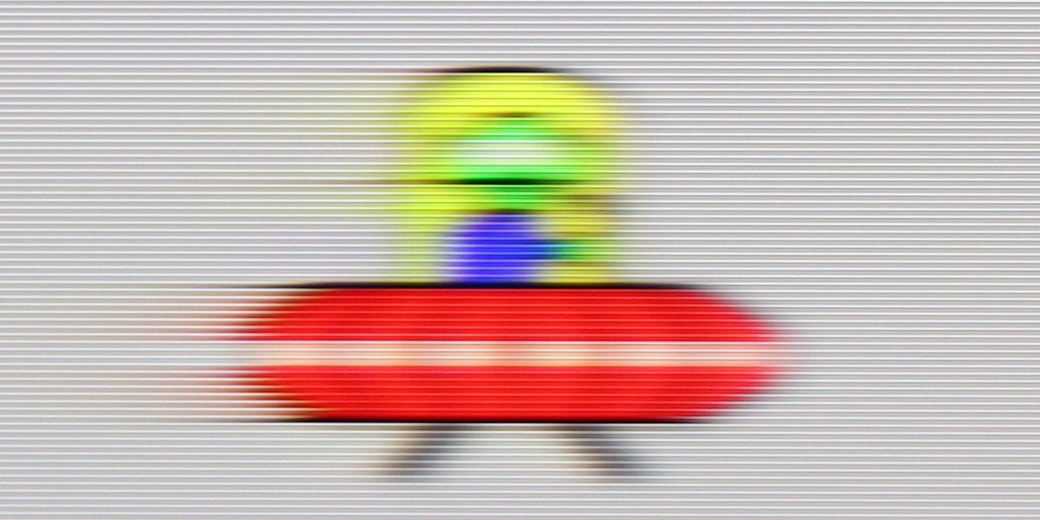
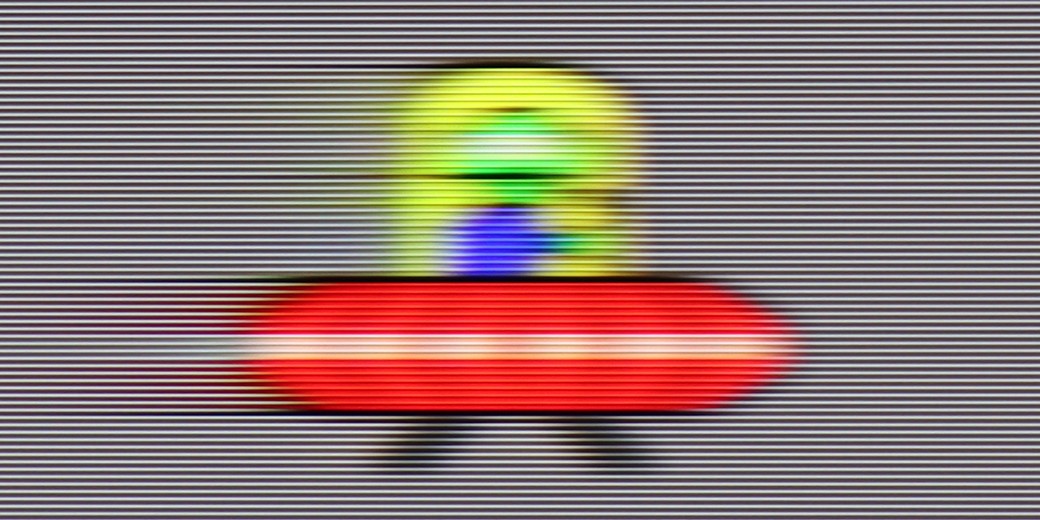
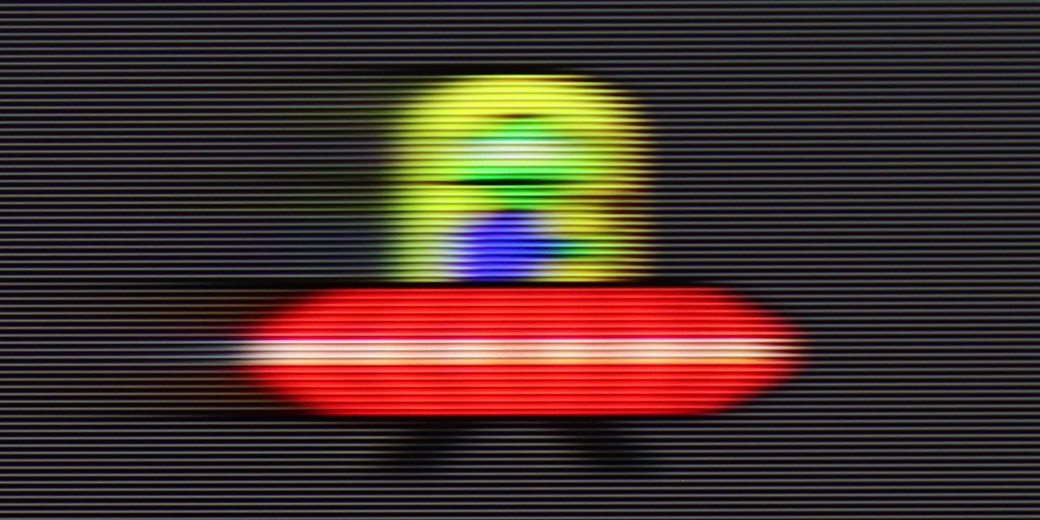
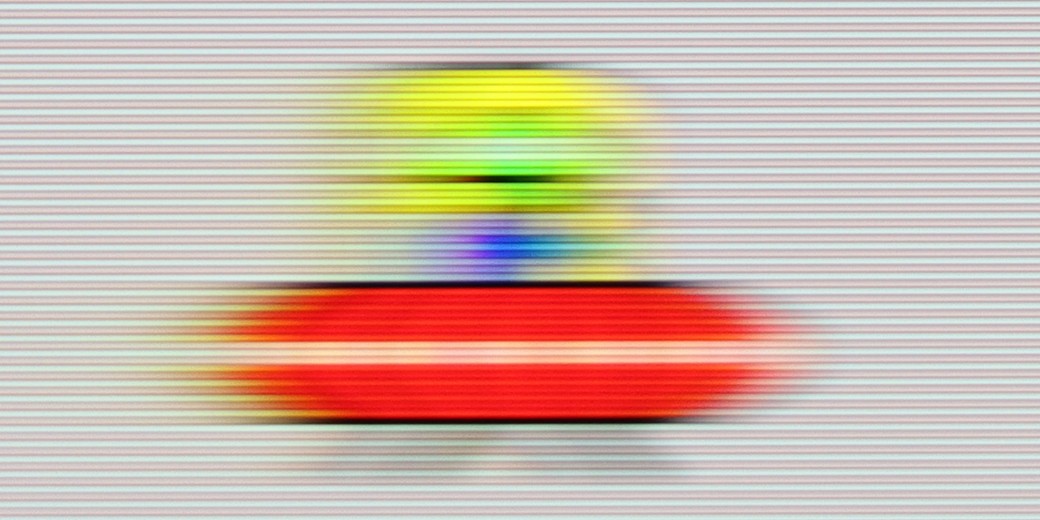
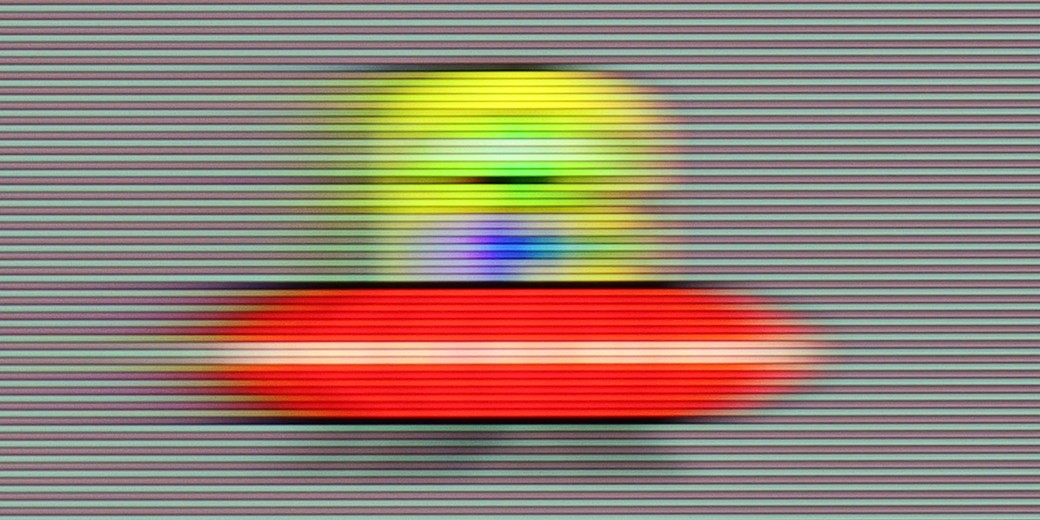
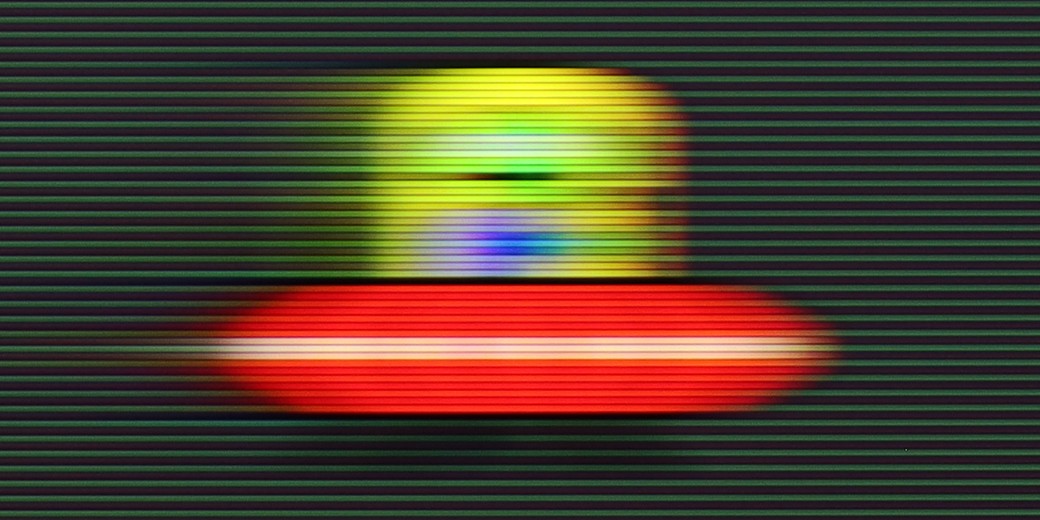
Blur (BFI function enabled):
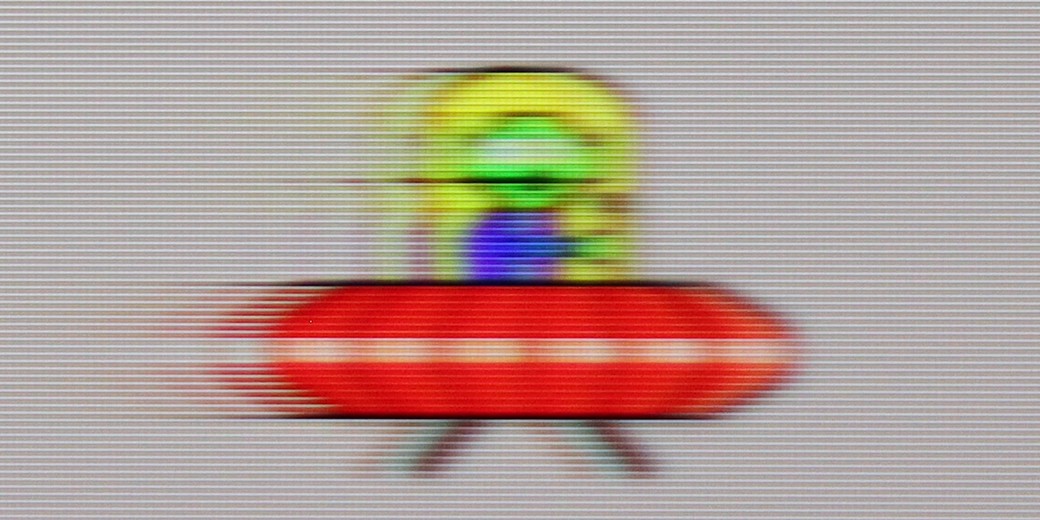
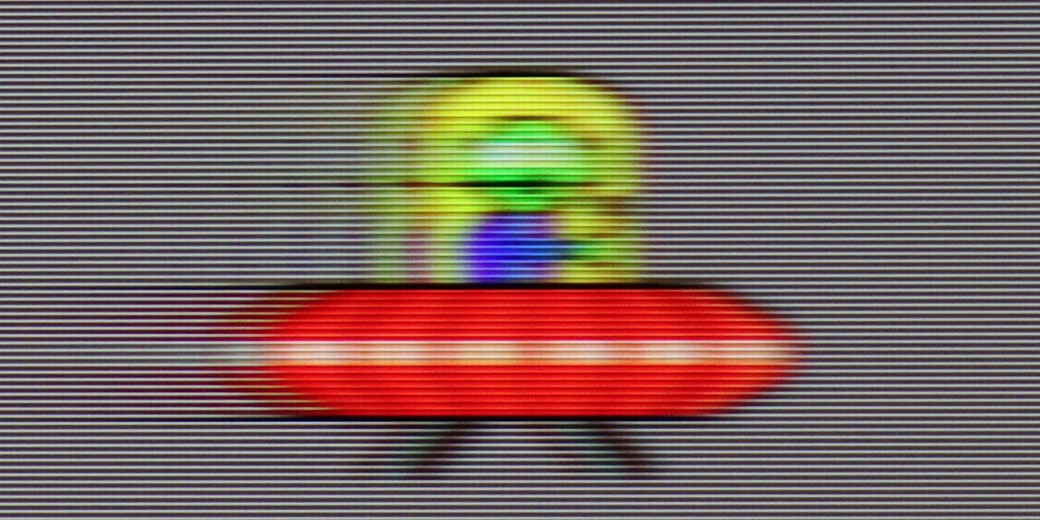
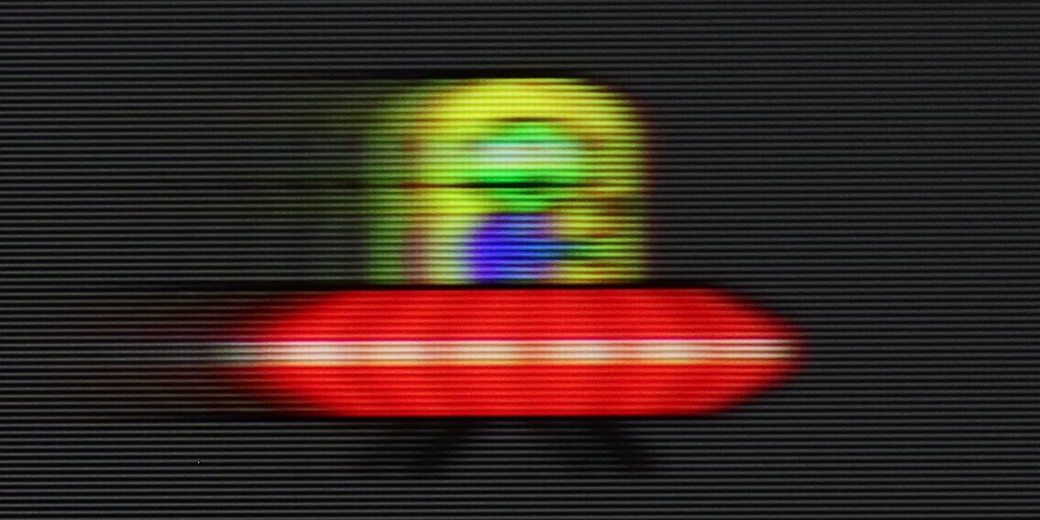
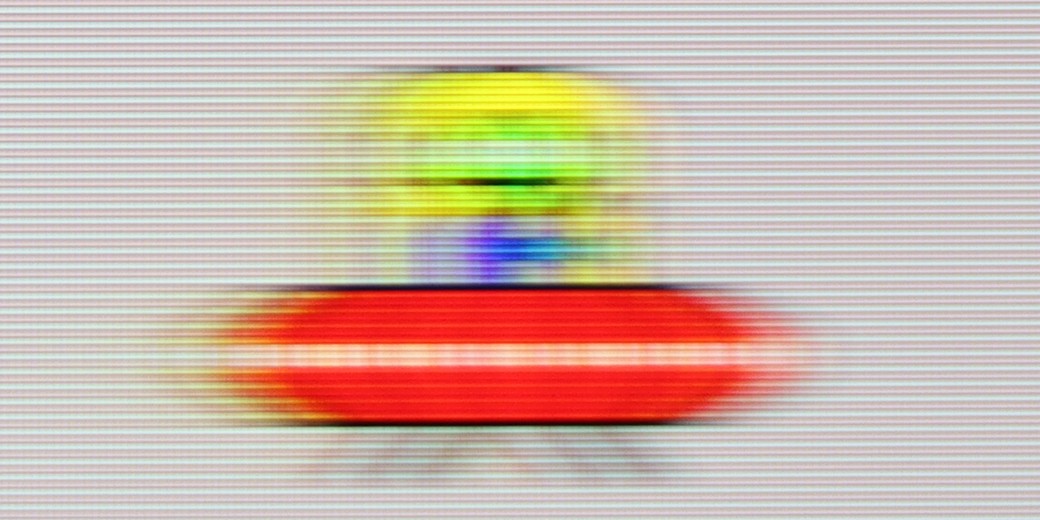
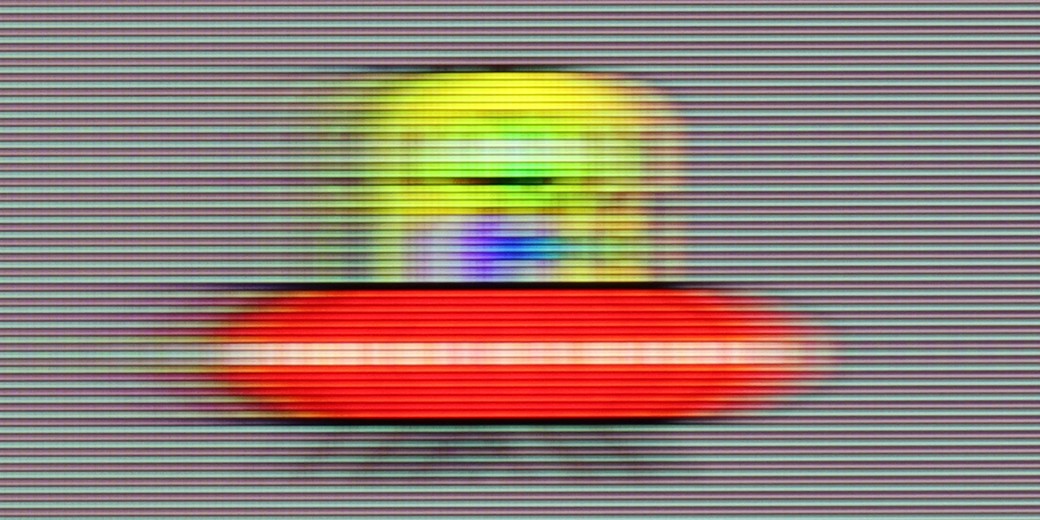
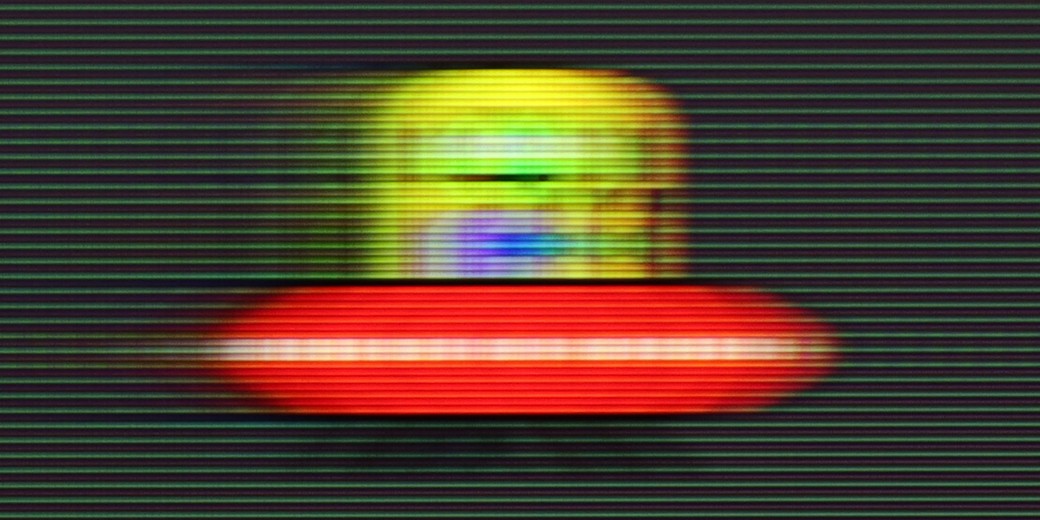
Smużenie (4K 120Hz):
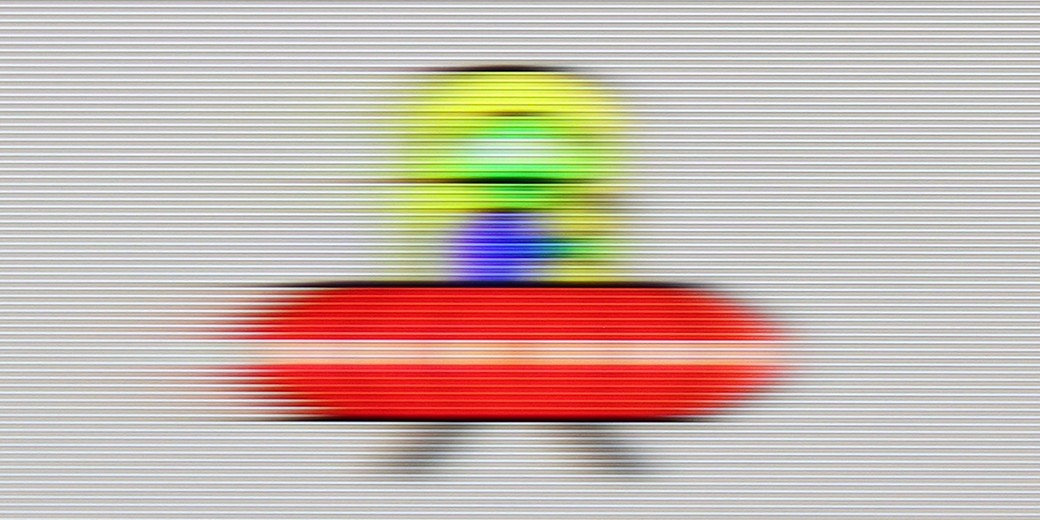
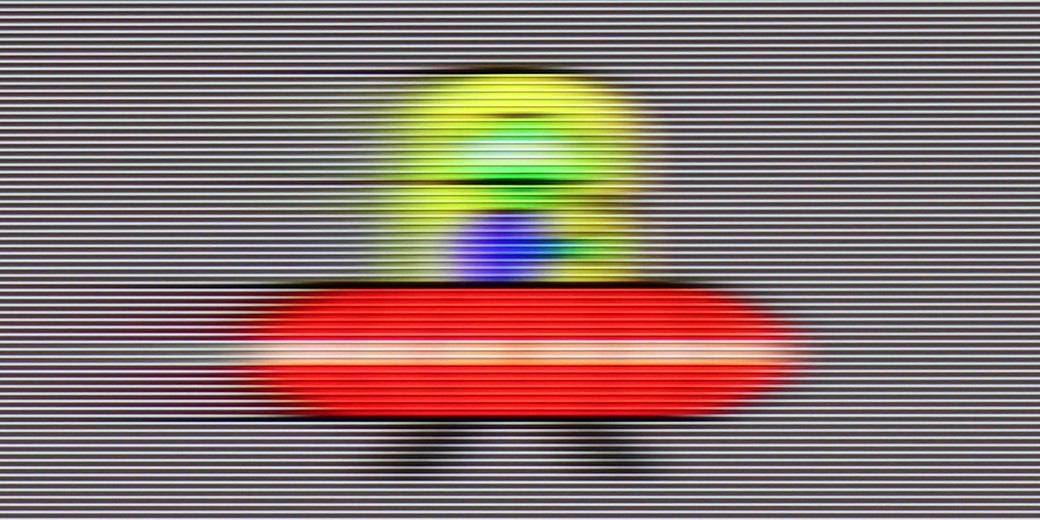
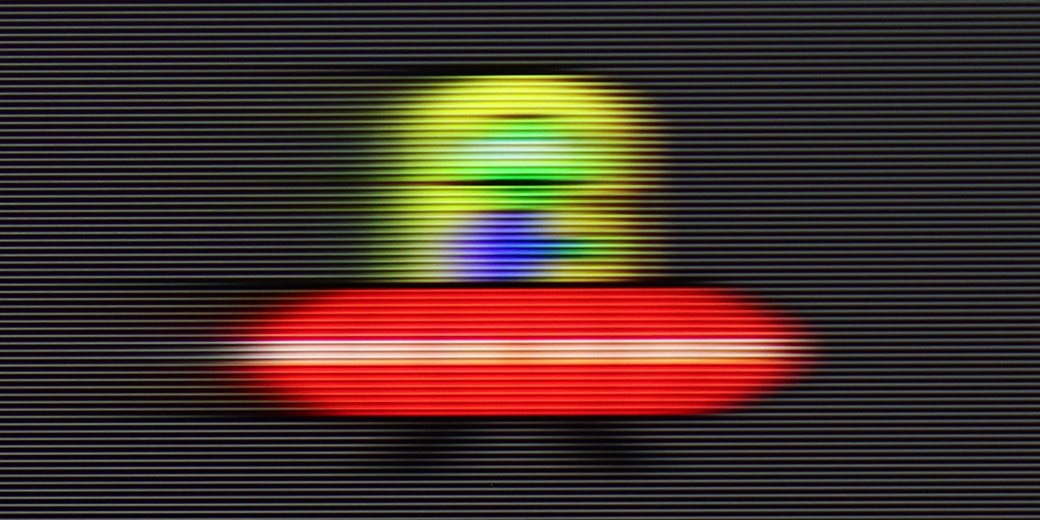
Smużenie ():
Similar to the U7Q, the E8Q model is a fast television designed with dynamic content in mind. It supports a 144 Hz refresh rate at 4K resolution, and if for some reason someone is still gaming in Full HD – it can even reach 240 Hz. This is a significant advantage, especially for PC users looking for maximum smoothness. In everyday use, the television performs very well. The “Ultra Motion Smoothness” mode gives us two sliders, allowing you to set the picture to your preference – whether it's more cinematic with the film frame preserved or highly smoothed, almost “TV show-like.” It's good that the manufacturer provides a choice here, instead of imposing one style. On sports material, live broadcasts, or in games – motion looks clean and stable. Sure, it’s not at the OLED level, but for this price range, the E8Q does a really good job.
The fluidity of motion has never been a strong point of televisions equipped with 60 Hz panels, and the Bravia 3 is no exception. Nevertheless, Sony has added something that might appeal to those who are more sensitive to the way images are displayed. This refers to the proprietary motion smoother, Motion Flow, which offers users a lot of adjustment options. With it, you can make the picture smoother, almost theatrical, or stick to a more cinematic style with the characteristic judder, which many people simply associate with a filmic vibe. These functions work for content with lower frame rates, such as movies and series recorded at 24 or 30 frames per second, which is the type of material we encounter on a daily basis. It is precisely in this area that the motion smoother proves to be one of the most important features for everyday use of the television, and here the Bravia 3 performs really well.
Console compatibility and gaming features
8.5/10
4/10
- ALLM
- VRR
- VRR range48 - 240Hz
- Dolby Vision Game Mode
- Correct implementation of HGIG
- 1080p@120Hz
- 1440p@120Hz
- 4K@120Hz
- Game bar
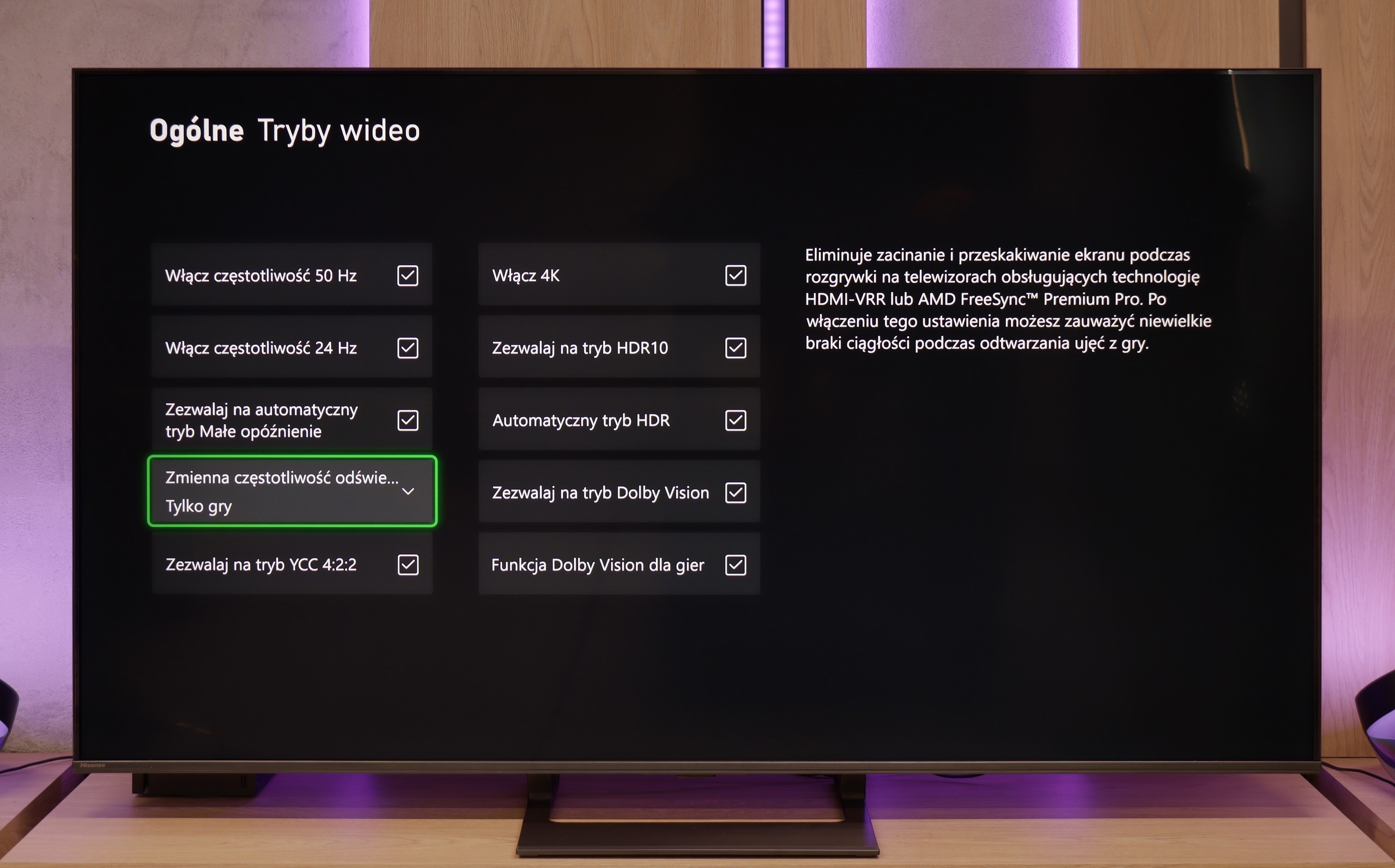
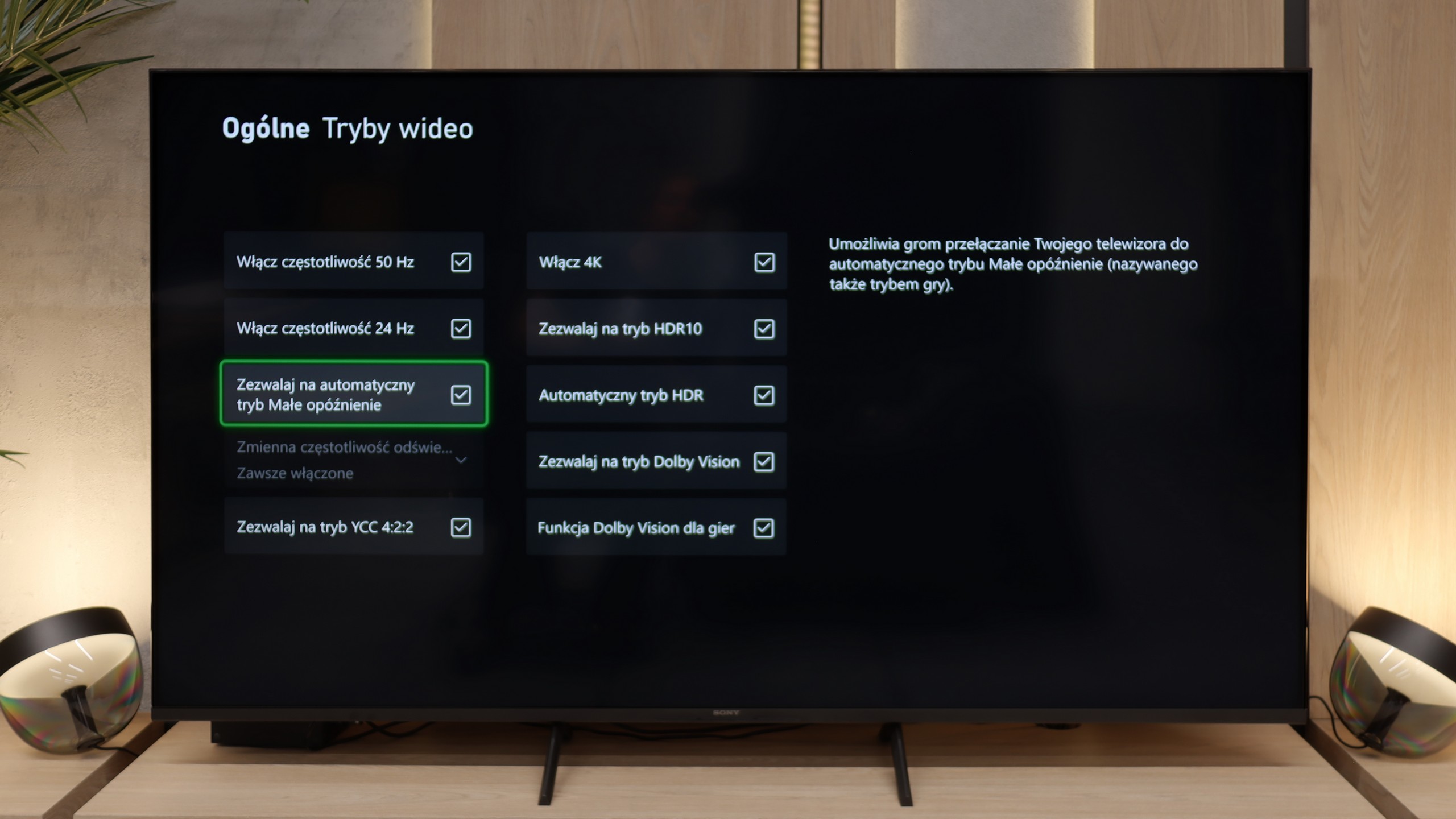
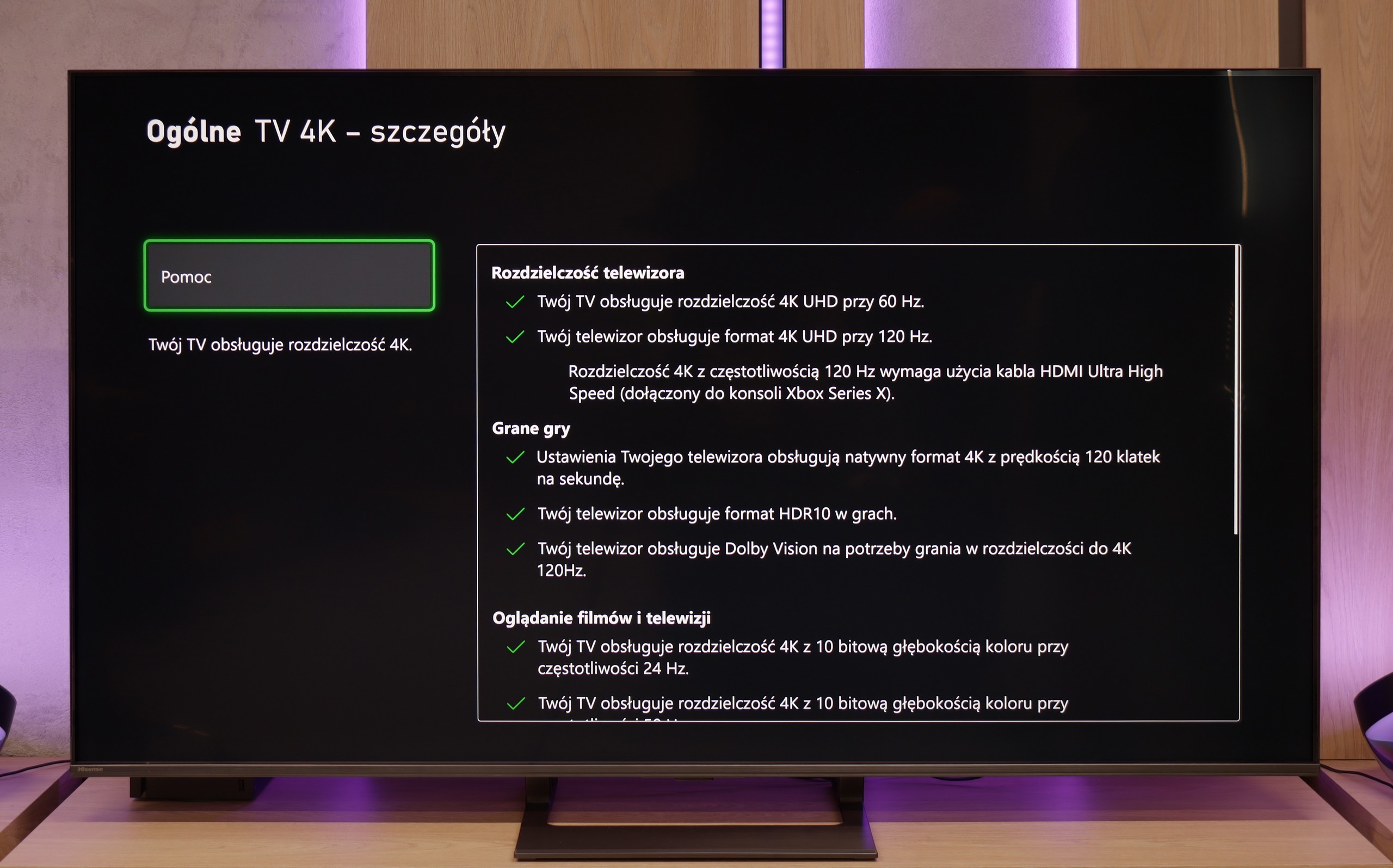
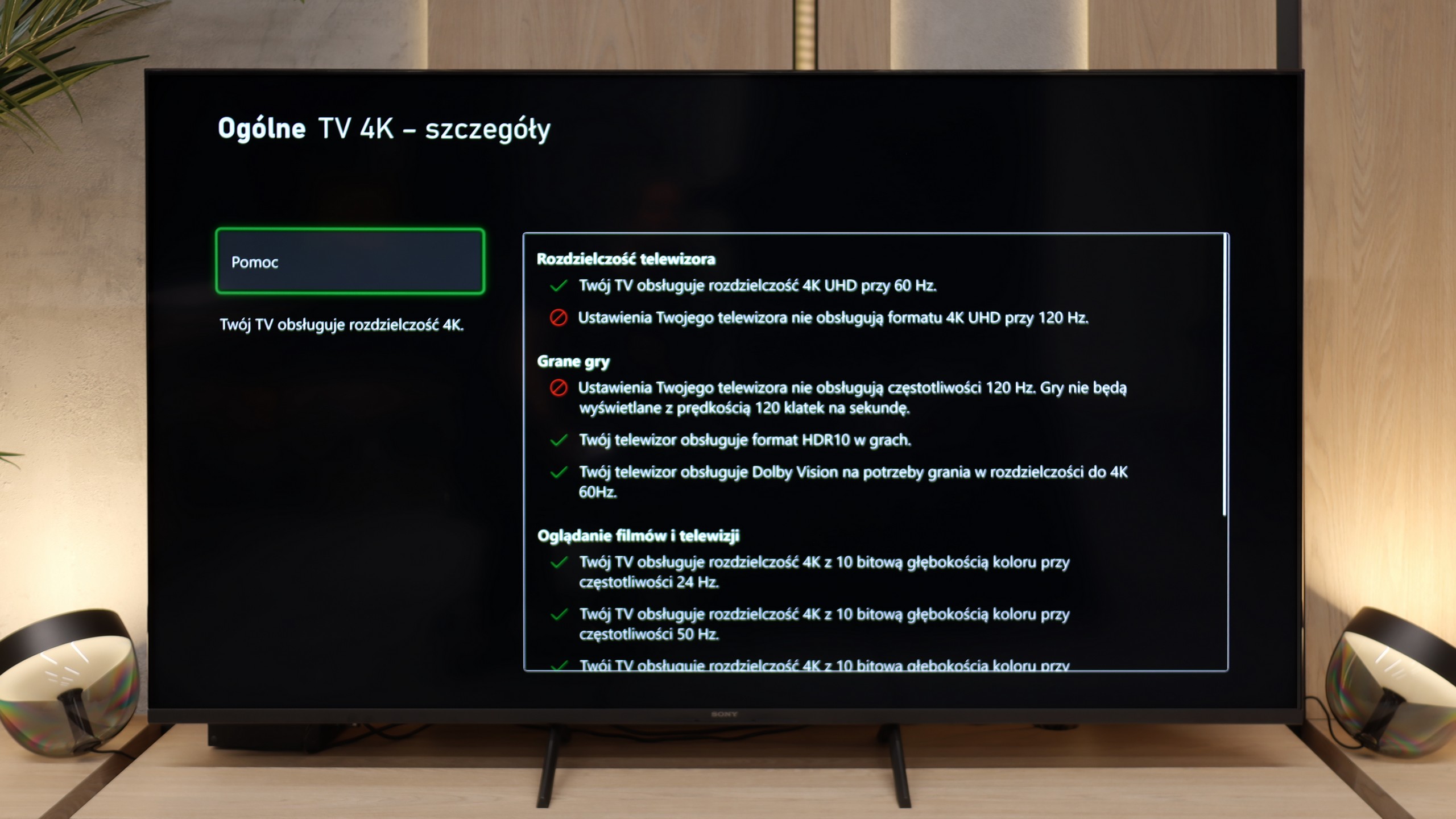
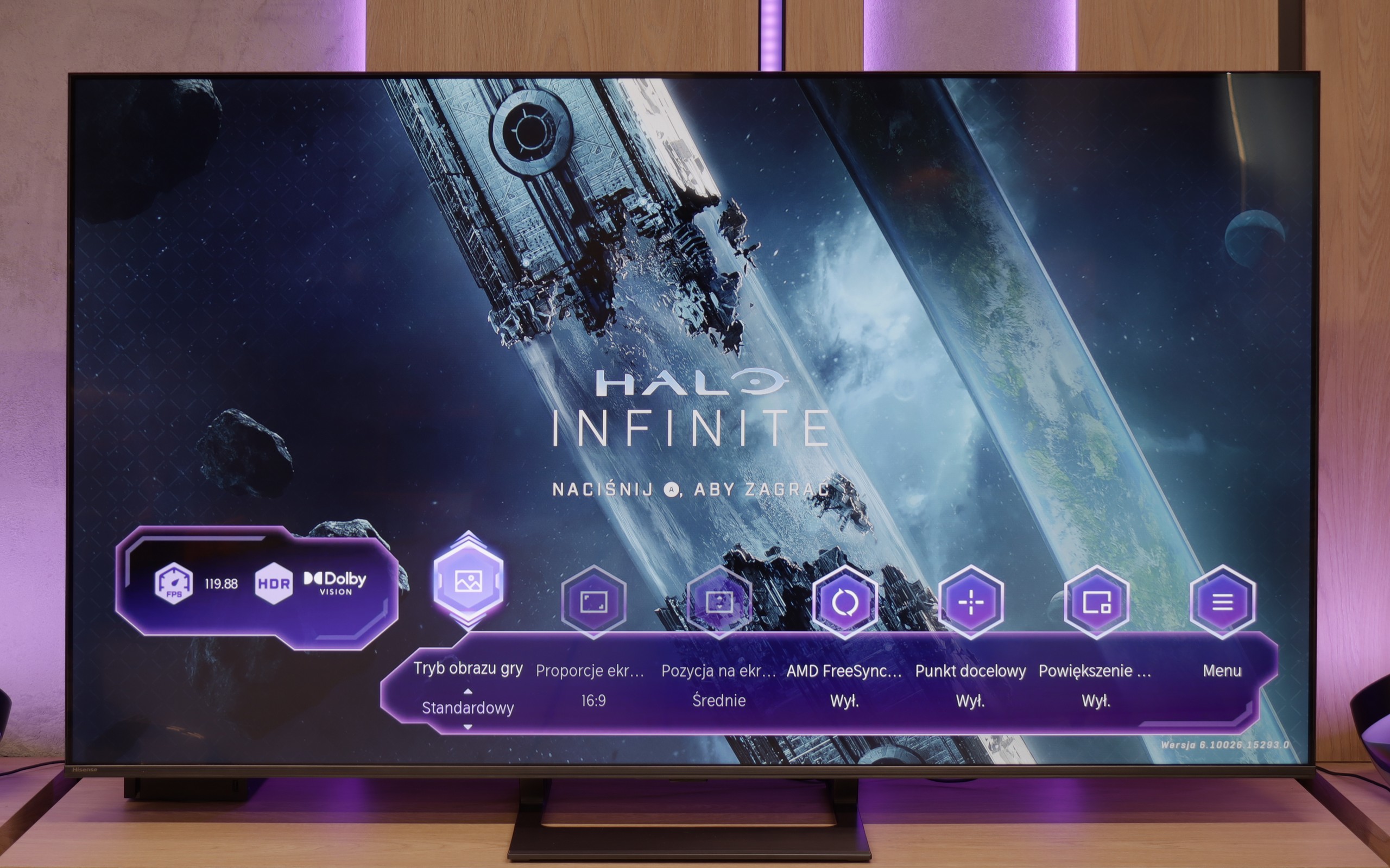
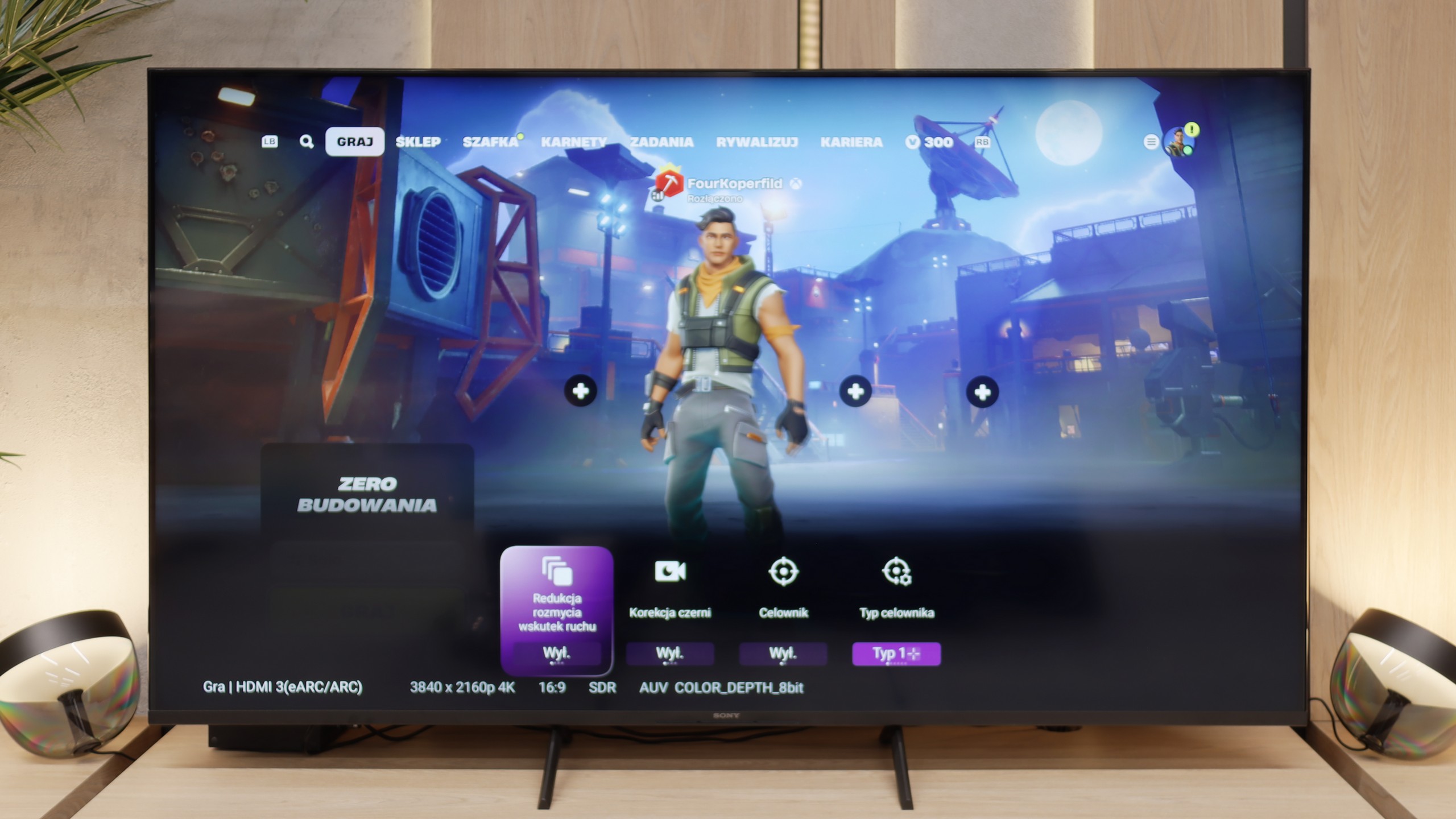
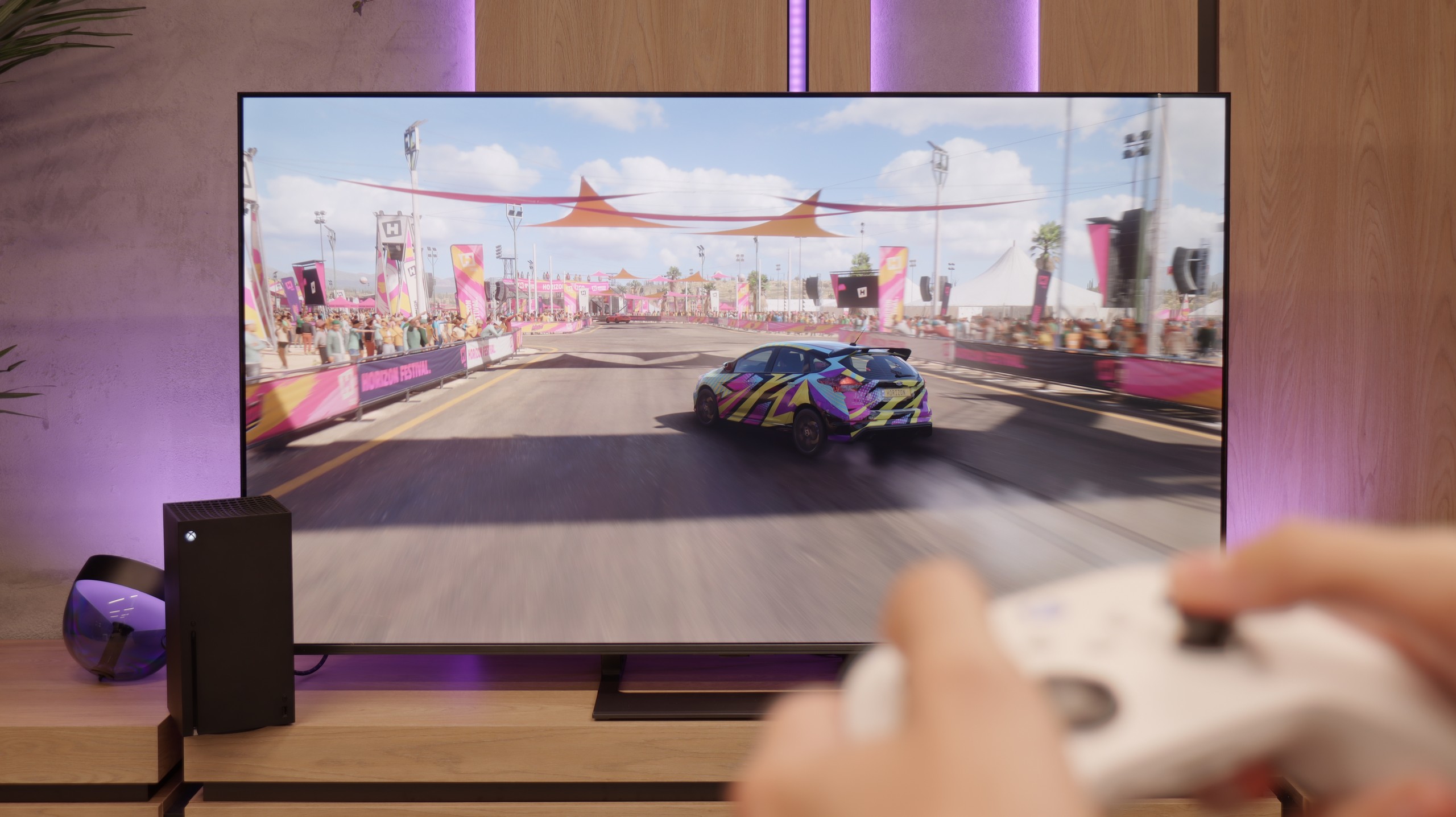
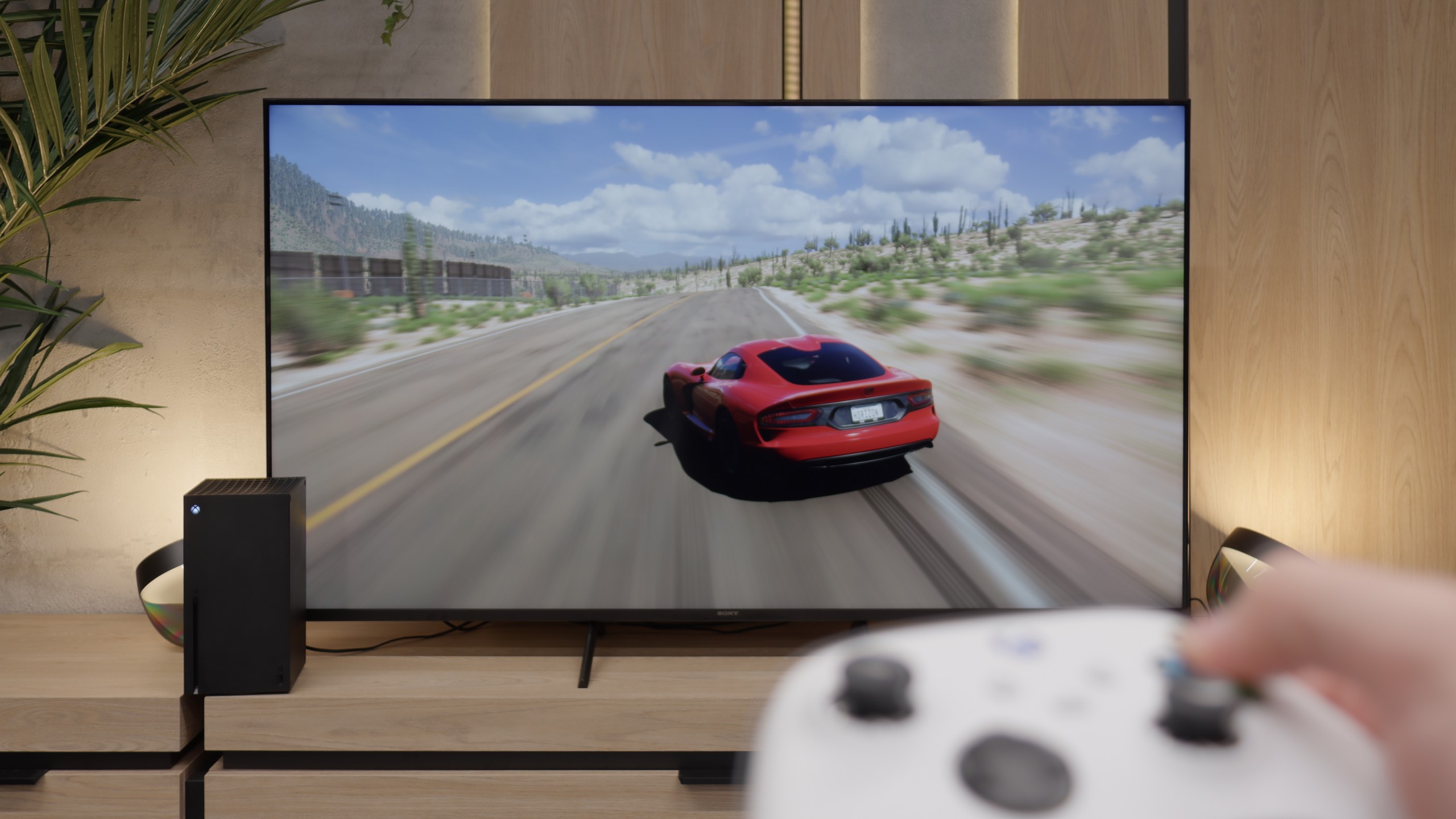
Hisense E8Q does not hide its gaming pedigree. Just the specifications reveal that we are dealing with a television that will perform excellently as a gaming screen. Variable Refresh Rate (VRR)? It's there. Automatic Game Mode switching (ALLM)? That's there too. Additionally, there's impressive refreshment – 120 Hz in 4K or even 240 Hz in Full HD. Such a set is rare in this price segment. Everything runs smoothly and without major surprises. The only missing element – similar to the U7Q – remains support for HGiG. It's a shame because this feature facilitates adjusting the brightness curve to the capabilities of the specific television, enhancing visual fidelity with the intentions of HDR game developers. Without it, manual tweaking of the settings is necessary, which does not always yield a satisfying result.
Bravia 3 isn't gear for eSports enthusiasts or fans of late-night marathons with a controller in hand. The lack of 120 Hz refresh rate and HDMI 2.1 ports closes the topic before it even has a chance to develop. This is a TV for the casual gamer who, after work, fires up FIFA or racing games, not for someone who measures every frame in a spreadsheet. Nonetheless, Sony has added a few nice extras to ensure it’s not too bare. ALLM works as it should, automatically switching the TV to game mode (low latency). We even find a simple Game Bar here, which is clear and straightforward. However, the biggest curiosity is the PlayStation Portal app. Thanks to it, you can launch games from your PS5 wirelessly and see them on the TV screen straight away. Sounds great, but it only takes a few minutes to feel significant delays. In our opinion, it’s more of a showcase of capabilities than something that can be used on a daily basis. If someone really wants to play, it’s better to plug the console in with an HDMI cable and forget about wireless issues.
Input lag
9.7/10
10/10
SDR
HDR
Dolby Vision
The E8Q handles delays very well. For 120 Hz content, the input lag is super low – practically imperceptible even for more demanding players. At 60 Hz, the values are slightly higher, but still comfortably within the "placebo" range – there's nothing to complain about. The biggest increase in latency was noted in Dolby Vision Gaming mode. The TV needs more time to process the signal then, but even in this scenario, it doesn't exceed 30 ms. These may not be ideal values, but for most players – especially console gamers – it won't be a problem.
Here, the Bravia 3 shows its best side. Latency drops below 12 milliseconds in almost every resolution and mode, so the response to controller movements is instantaneous and there's no sense of lag. It feels as if the console and the television are speaking the same language, without any unnecessary pauses or hesitations. The Dolby Vision Gaming mode deserves special mention. In its predecessor, the X75WL model, using this feature was simply a torment – input lag could reach over 100 milliseconds, which effectively took the joy out of gaming. In the Bravia 3, this problem has been completely eliminated.
Compatibility with PC
8.6/10
3.5/10
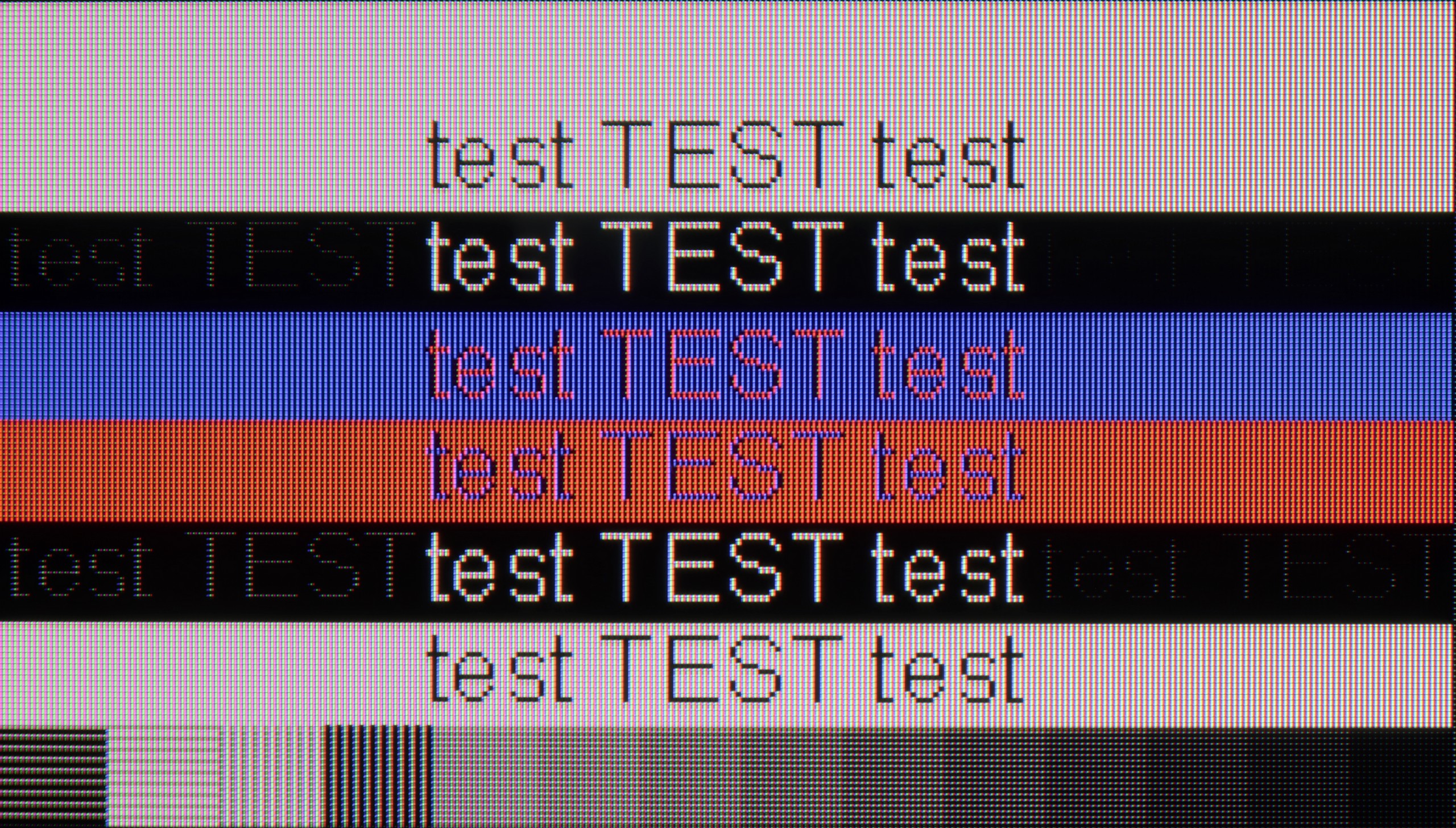
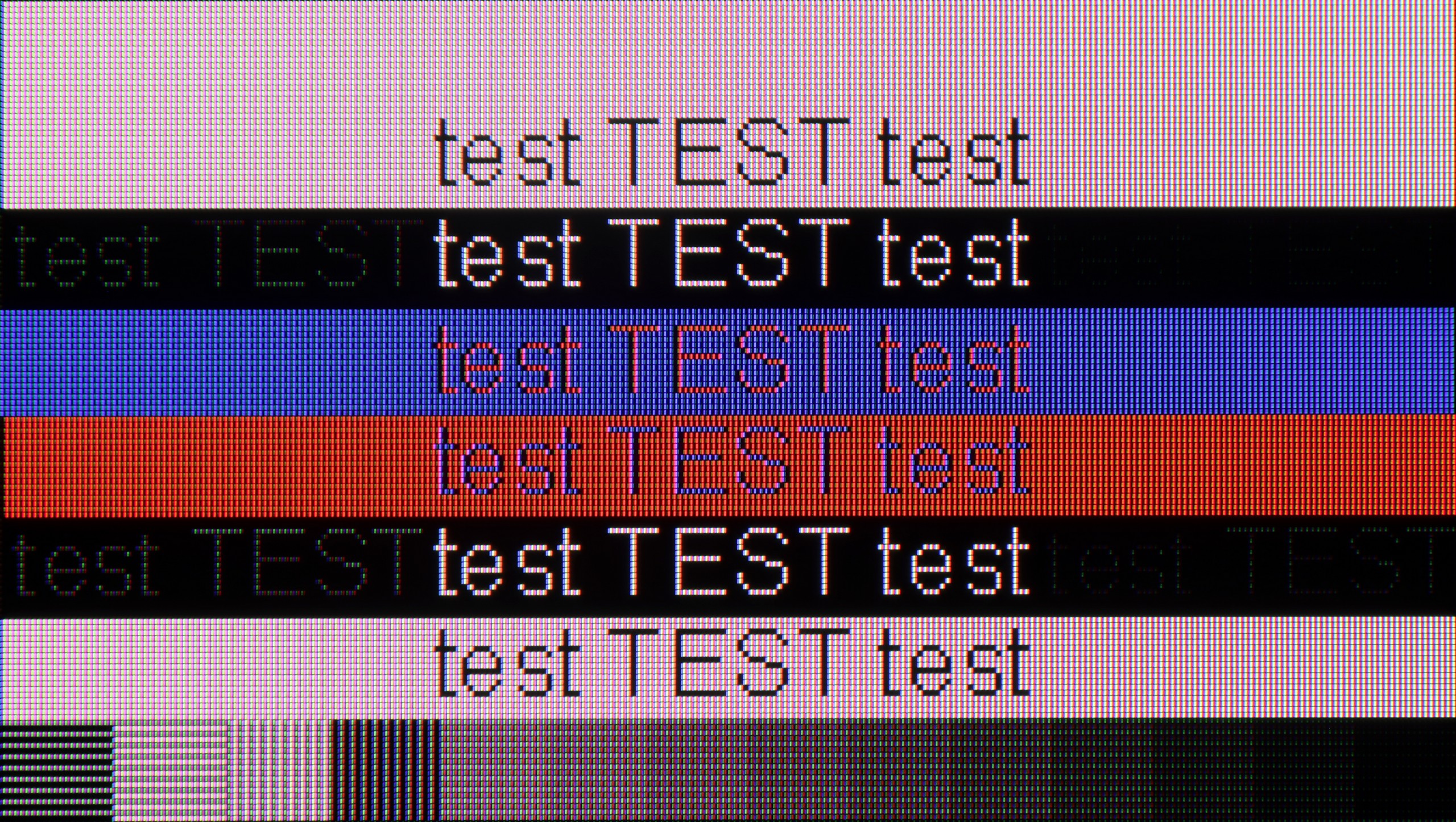
In terms of collaboration with the computer, the E8Q performs really well. It supports chroma 4:4:4 at full 4K resolution and the highest refresh rates, so the readability of fonts – even the smallest ones – is at a very good level. There are slight blurriness issues with exceptionally thin fonts, but in everyday use, it's hard to consider this a serious problem. A nice addition for PC gamers is the ability to achieve up to 288 Hz at lower resolutions. The E8Q communicates effortlessly with powerful graphics cards, making it an interesting choice not only for movies or consoles but also for gaming on the computer.
Working with a computer on the Bravia 3 with a VA panel isn’t as good as with the IPS panel version. The fonts are clearly less sharp and harder to read, which is immediately noticeable when working with text. There’s also a surprising dithering issue that we didn’t notice in the IPS variant. It’s quite an unusual situation, but definitely worth noting, as it may hinder those planning to use the TV as a monitor. As for PC gaming, there’s also little reason for enthusiasm here. The lack of support for frame synchronization with graphics cards or higher refresh rates makes the screen rather unattractive in this role. So if someone is seriously considering connecting the Bravia 3 to a computer, a variant with an IPS panel will be a much better choice, as it performs significantly better in this regard.
Viewing angles
3/10
3.2/10
E8Q, like most TVs with a VA panel, looks best when we're sitting directly in front of the screen. In this position, you can expect deep blacks, good colour saturation, and high contrast. Unfortunately, just shifting a little to the side causes the picture quality to drop – colours start to fade, and blacks become more grey than black. It's not surprising, but it's worth keeping in mind, especially if we plan to watch with a larger group from different spots in the lounge. On the bright side – in return, we get significantly better black levels than in IPS panels.
The viewing angles in the Bravia 3 with a VA panel are clearly poorer than in the version with an IPS panel. It’s enough to sit a little off to the side for the picture to start losing saturation and sharpness, while the black takes on a lighter shade. This is the natural price to pay for the significantly better contrast and deeper black, which are definitely an advantage in this variant.
TV efficiency during daytime
6.2/10
5.4/10
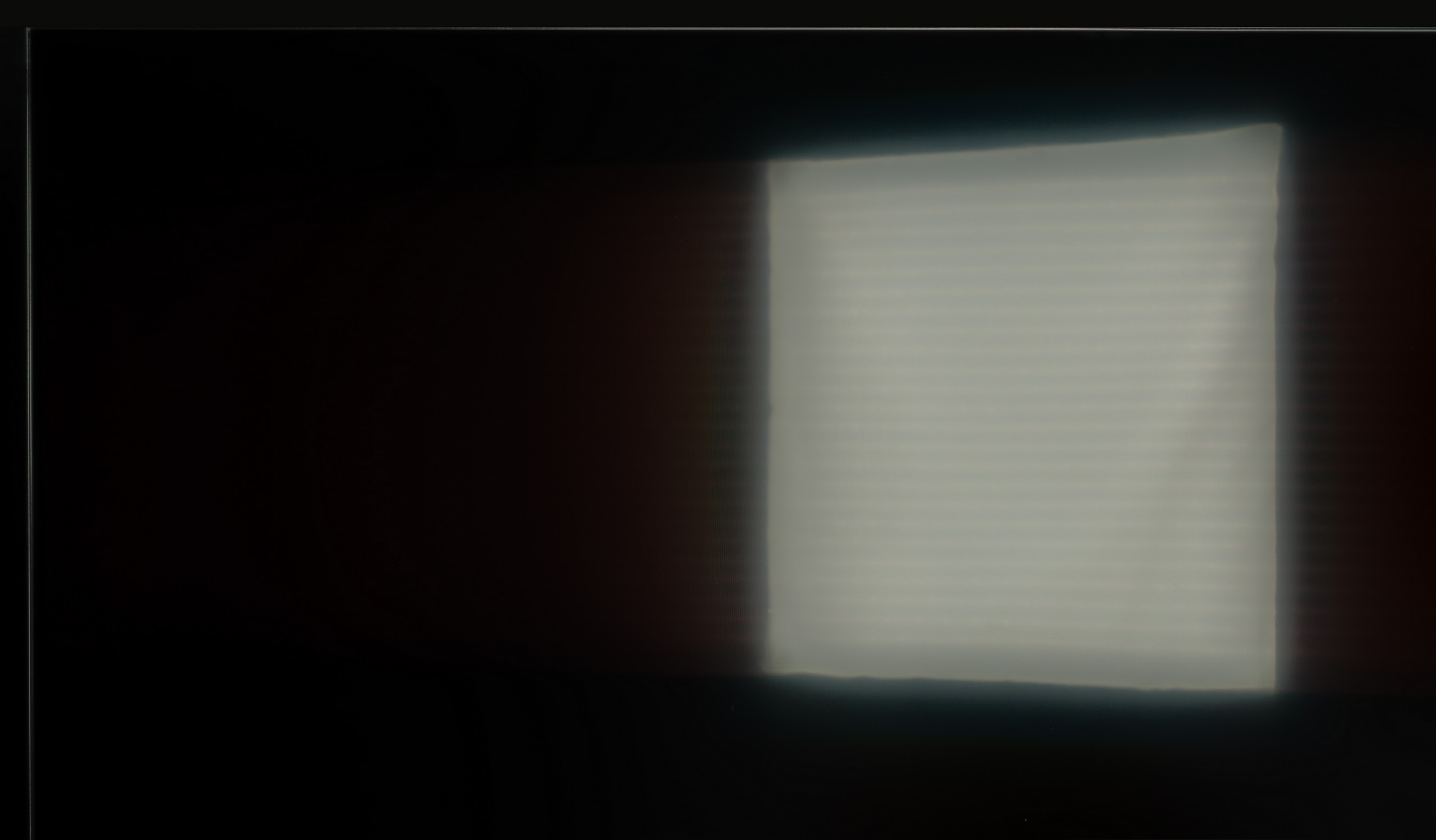
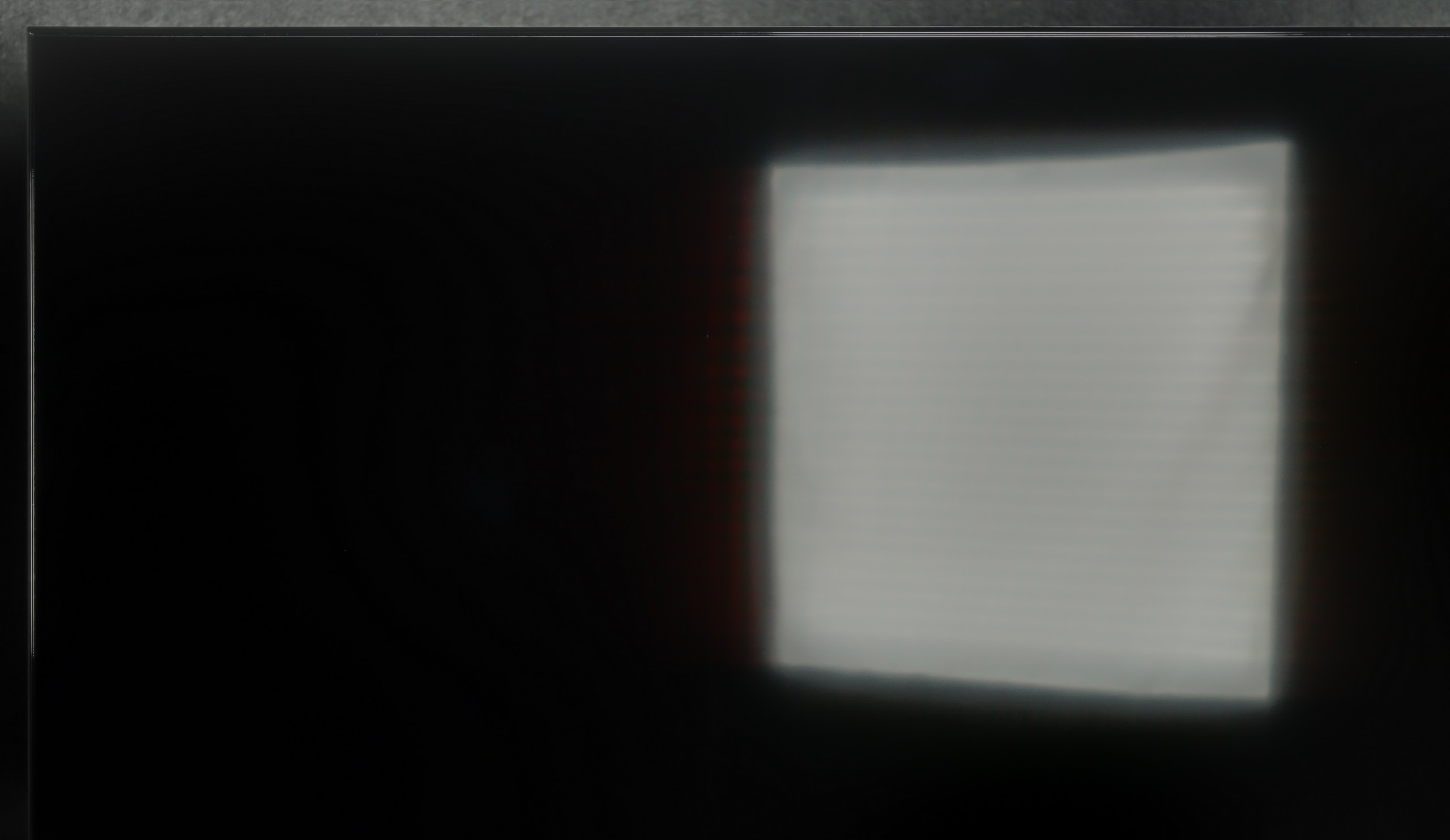

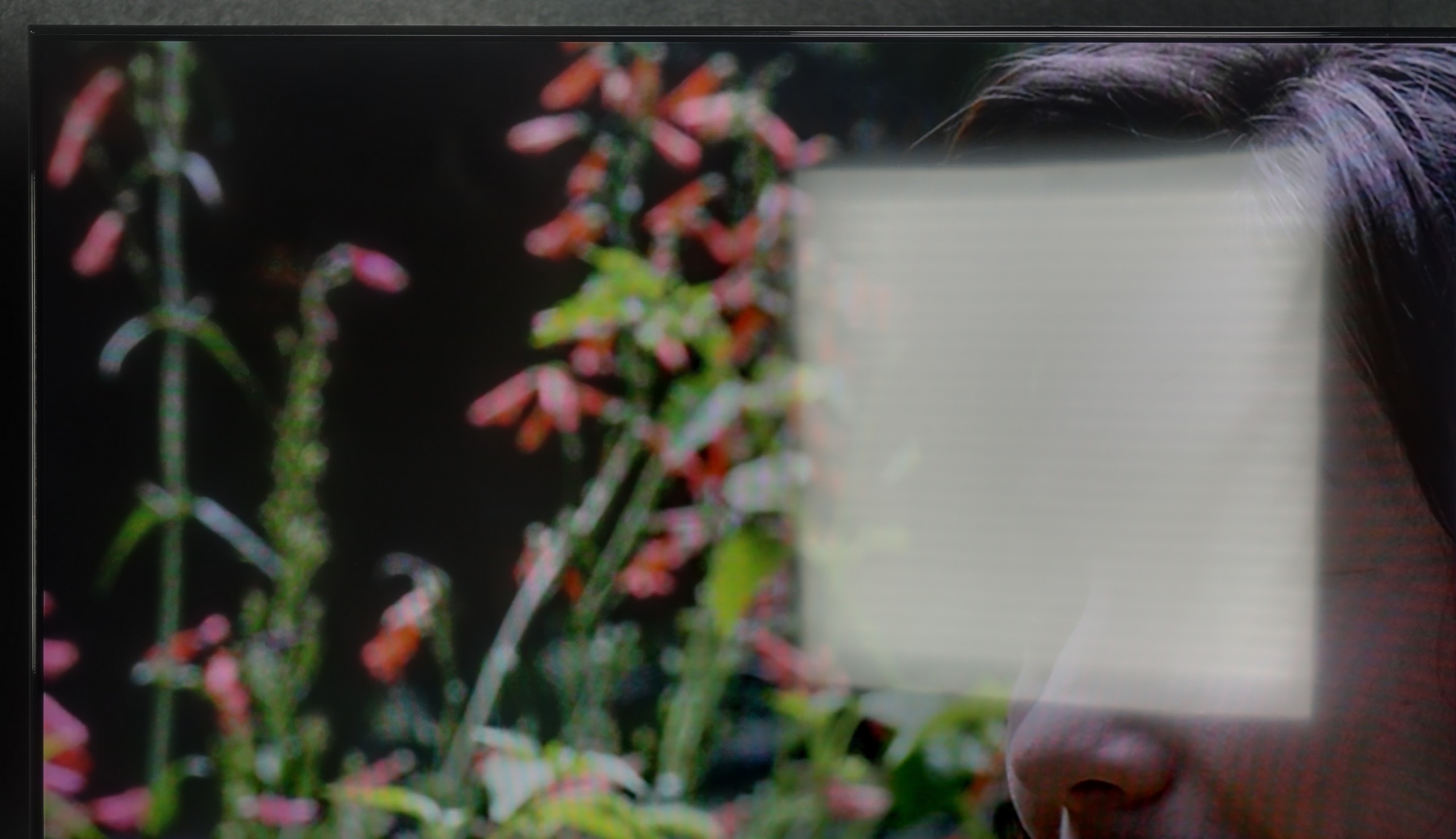
Matrix brightness
Average luminance SDR
Sony Bravia 3 50' (VA): 397 cd/m2
Hisense E8Q: 504 cd/m2
Hisense E8Q isn't afraid of bright interiors. Even when the sun is shining outside, the television can maintain good image readability. With a brightness level of around 500 nits, you can comfortably watch content during the day without feeling like everything is drowning in glare. The satin screen coating also helps to nicely minimise reflections – it doesn't completely eliminate them, but reduces them enough that they don't interfere with everyday viewing.
The performance of the Bravia 3 in the VA variant during the day is a mix of pros and cons. The manufacturer has also used a satin finish here, but compared to IPS, it handles direct reflections worse. When sharp light hits the screen, reflections can be more pronounced and may interfere with viewing. On the other hand, the TV compensates with higher brightness. In typical daytime conditions, the image is more readable and clearer than in the version with an IPS panel. Thus, in everyday use, the Bravia 3 in the VA edition can perform even better, as long as we don't place it in a heavily sunlit spot.
Details about the matrix
Subpixel Structure:
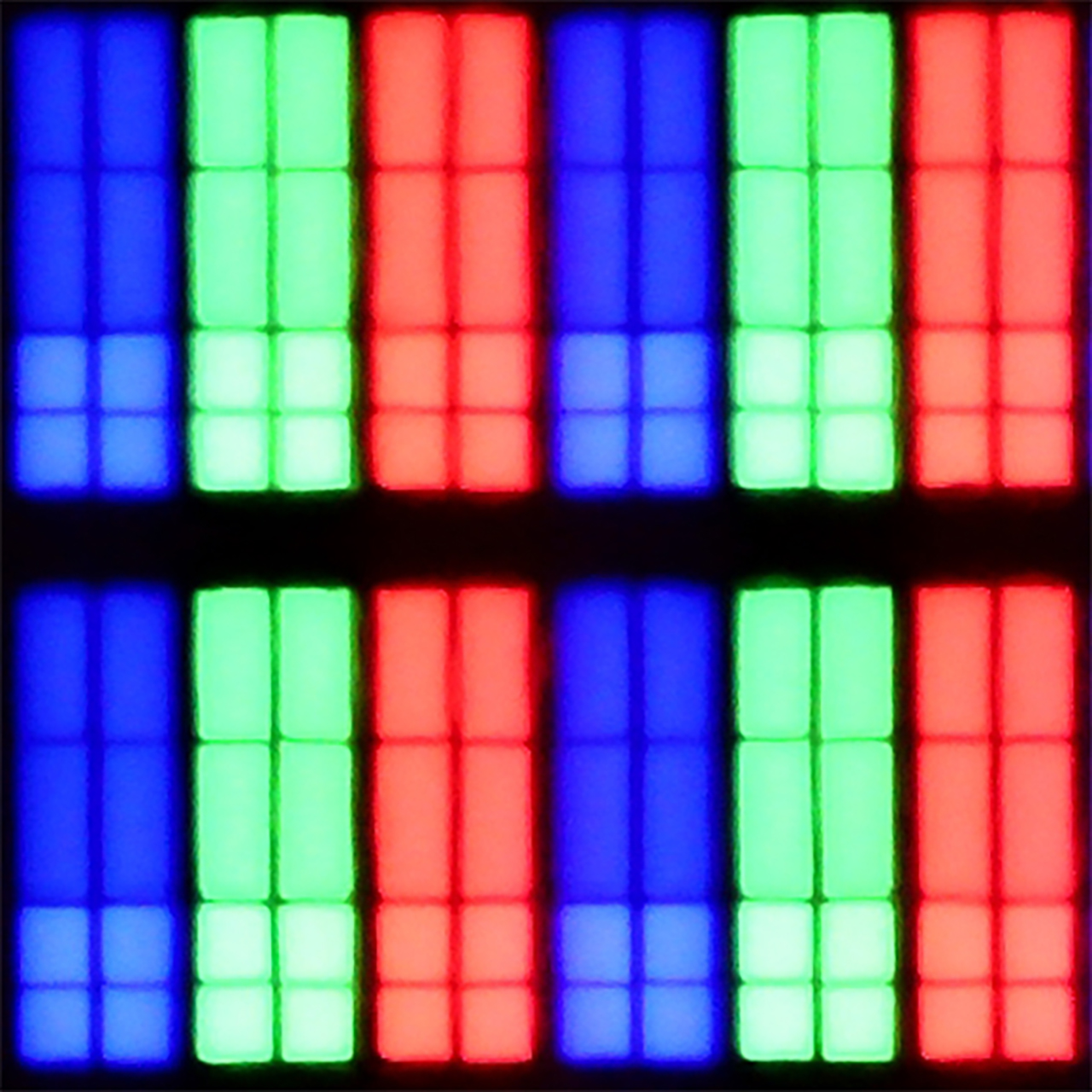
Panel uniformity and thermal imaging:
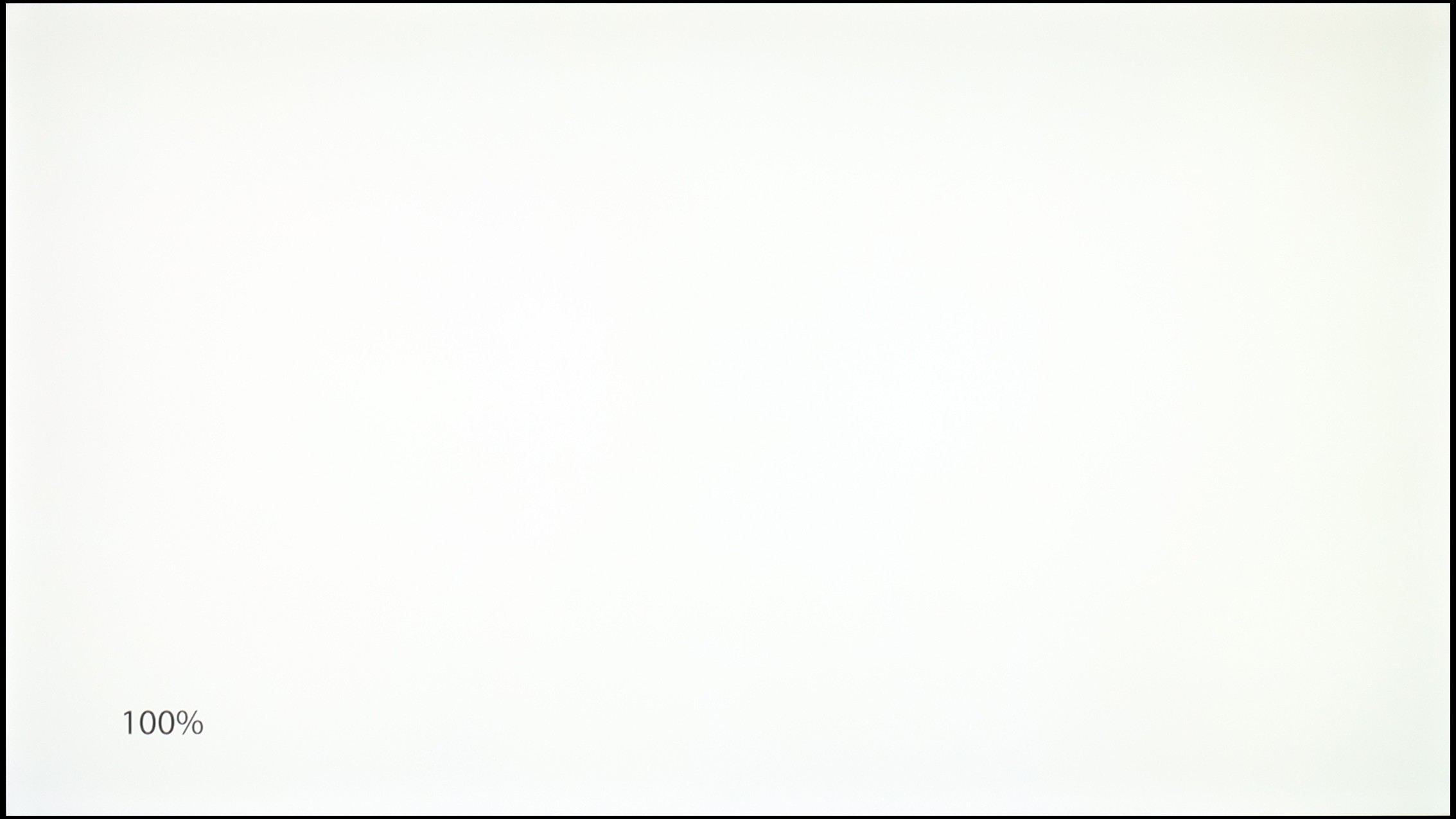
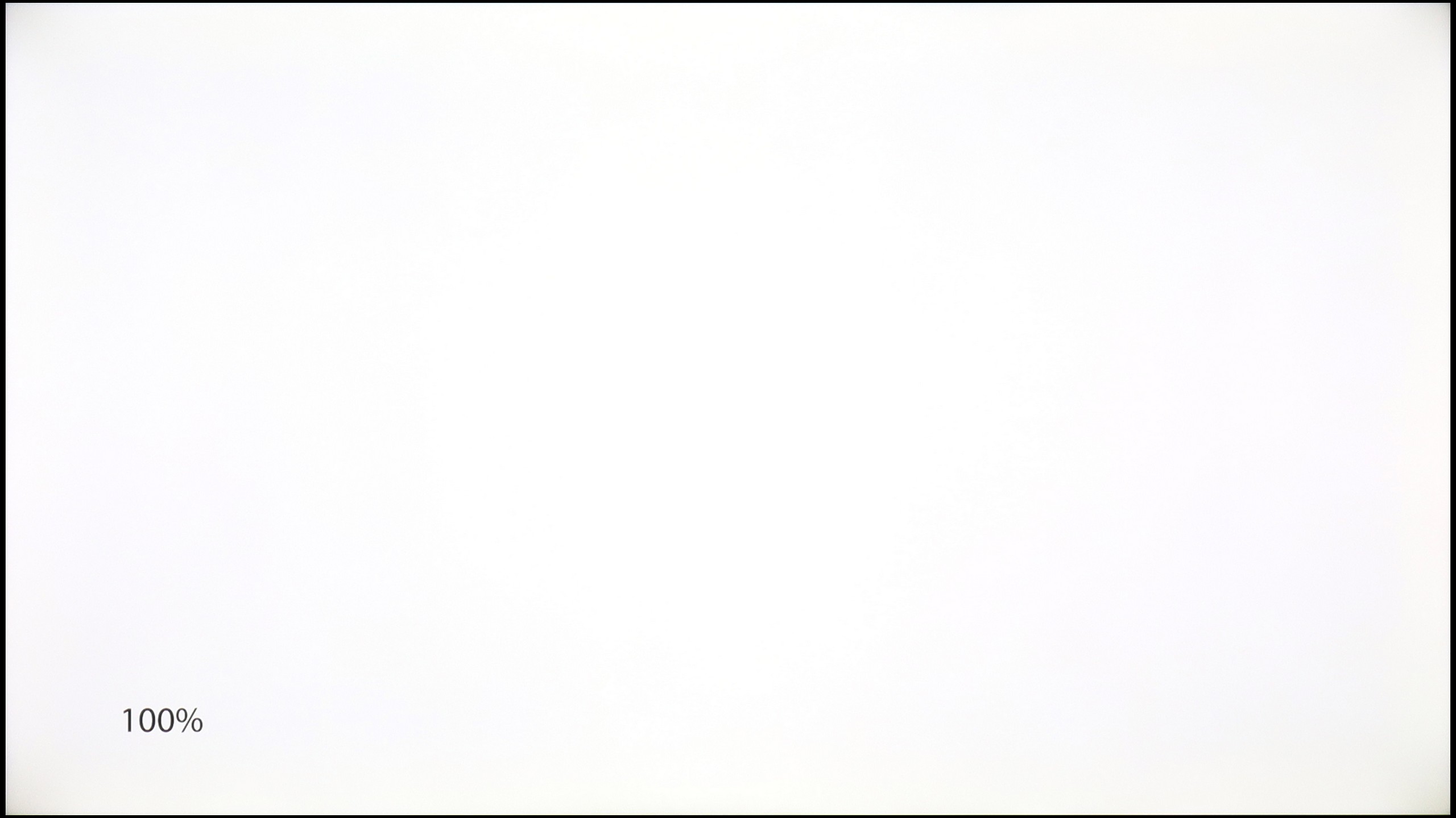
TV features
8.9/10
6.1/10
- HDMI inputs2 x HDMI 2.0, 2 x HDMI 2.1 48Gbps4 x HDMI 2.0, 0 x HDMI 2.1
- Other inputsRCA (Chinch)
- OutputsToslink (Optical audio), eARC (HDMI), ARC (HDMI), Mini-Jack (Headphones)Toslink (Optical audio), eARC (HDMI), ARC (HDMI)
- Network InterfacesWi-Fi 2.4GHz, Wi-Fi 5GHz, Ethernet (LAN) 100MbpsWi-Fi 2.4GHz, Wi-Fi 5GHz, Ethernet (LAN) 100Mbps
- TV receptionDVB-T, DVB-T2, DVB-S, DVB-S2, DVB-CDVB-T, DVB-T2, DVB-S, DVB-S2, DVB-C
Classic features:
- Recording to USB (terrestrial TV)
- Recording programming
- Picture in Picture (PiP)
- RF remote control (no need to aim at the screen)
- Backlit remote control
- Teletext
- Audio only mode
- Bluetooth headphones support
- Simultaneous Bluetooth headphones & TV audio
Smart features:
- AirPlay
- Screen mirroring (Windows Miracast)
- Voice search
- Voice search in native language
- Ability to connect a keyboard and mouse
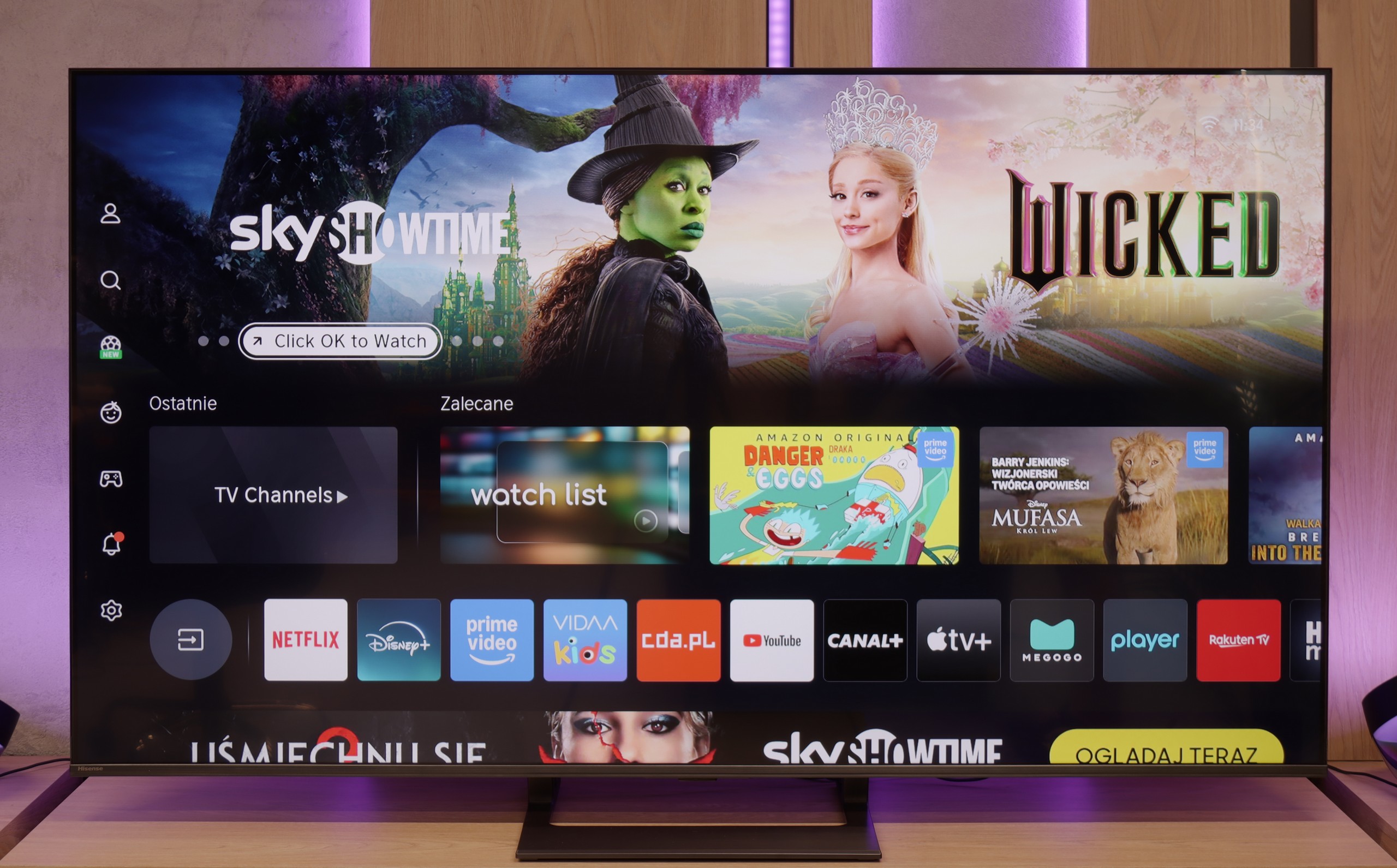
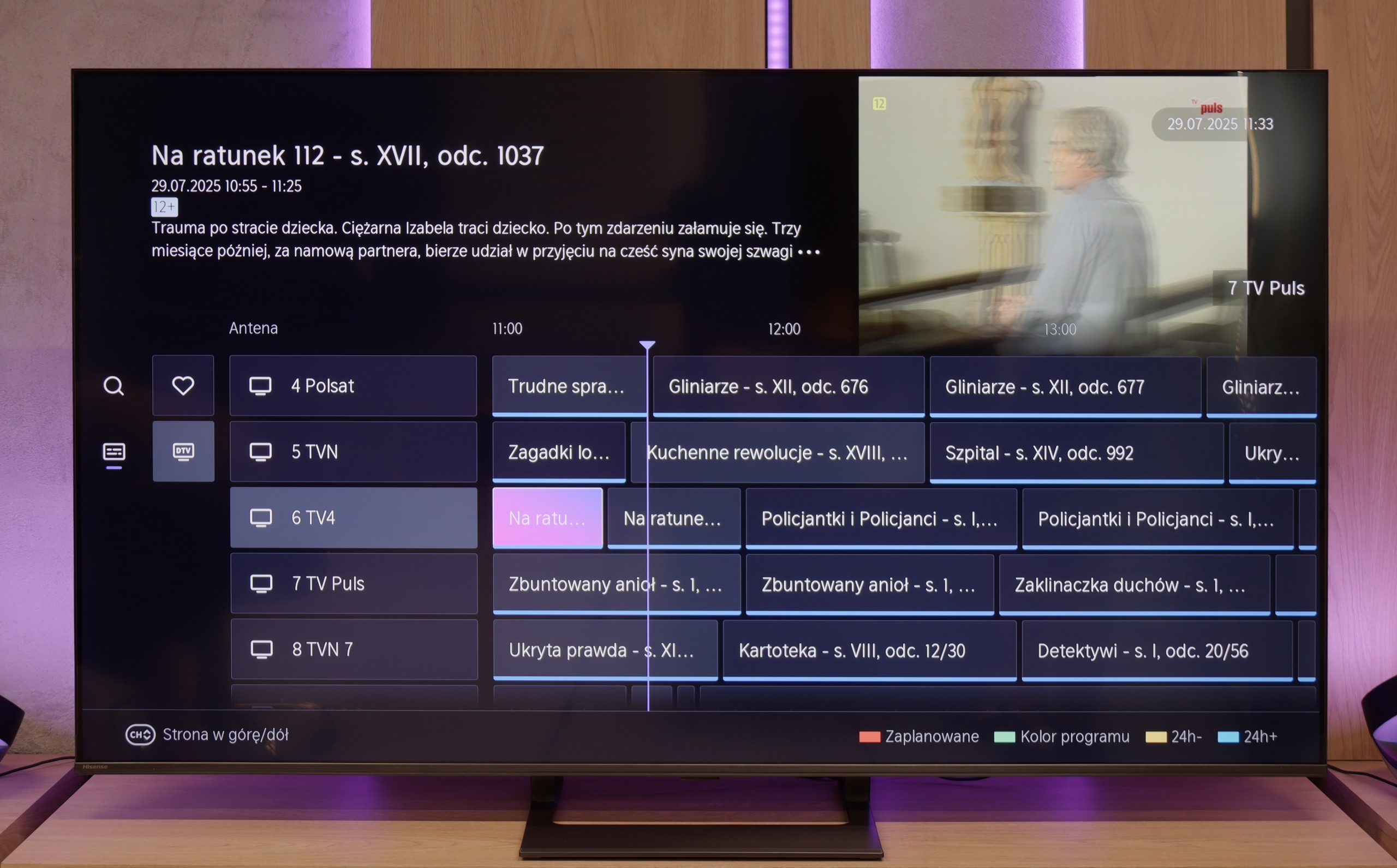
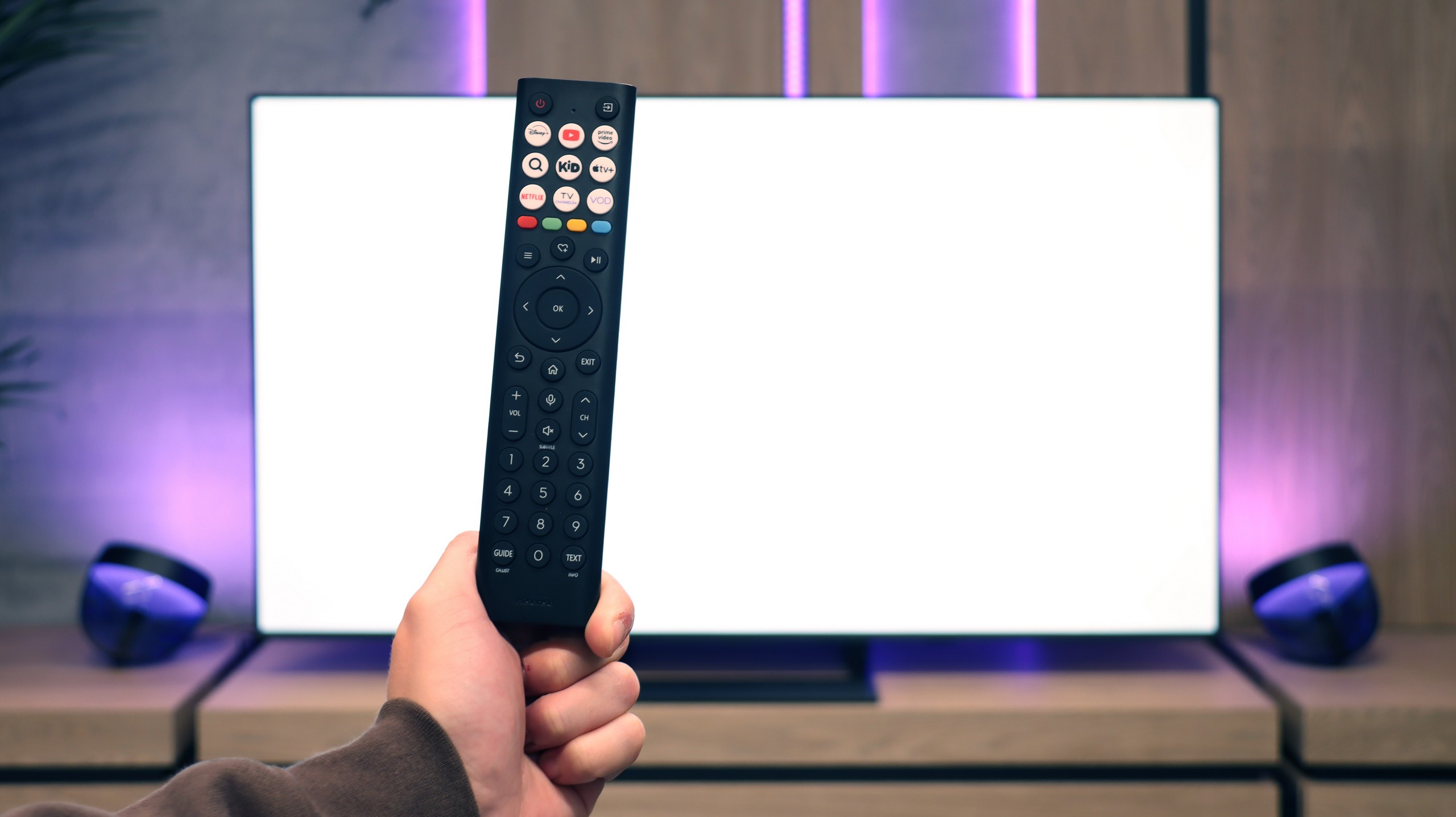

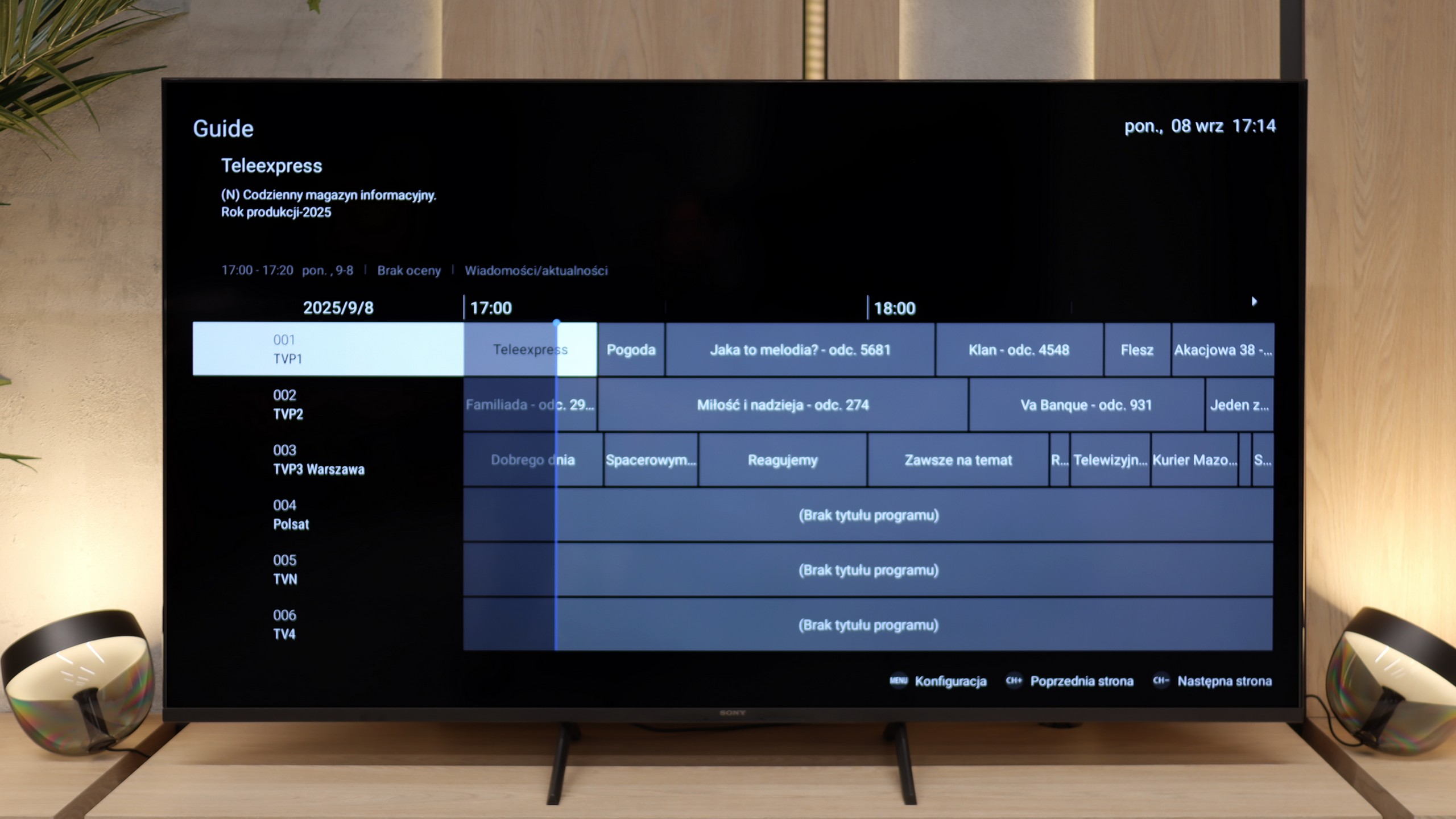
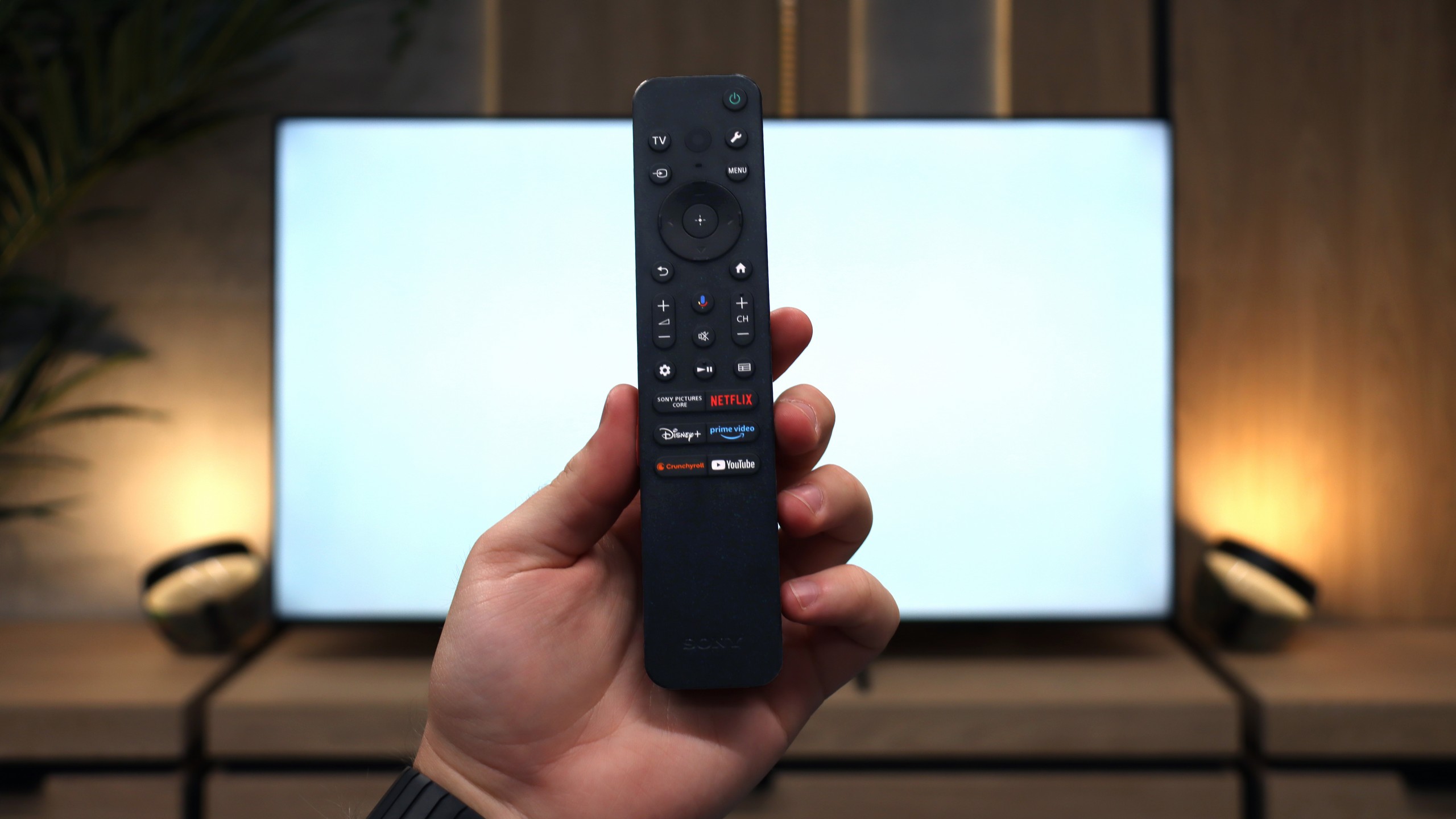
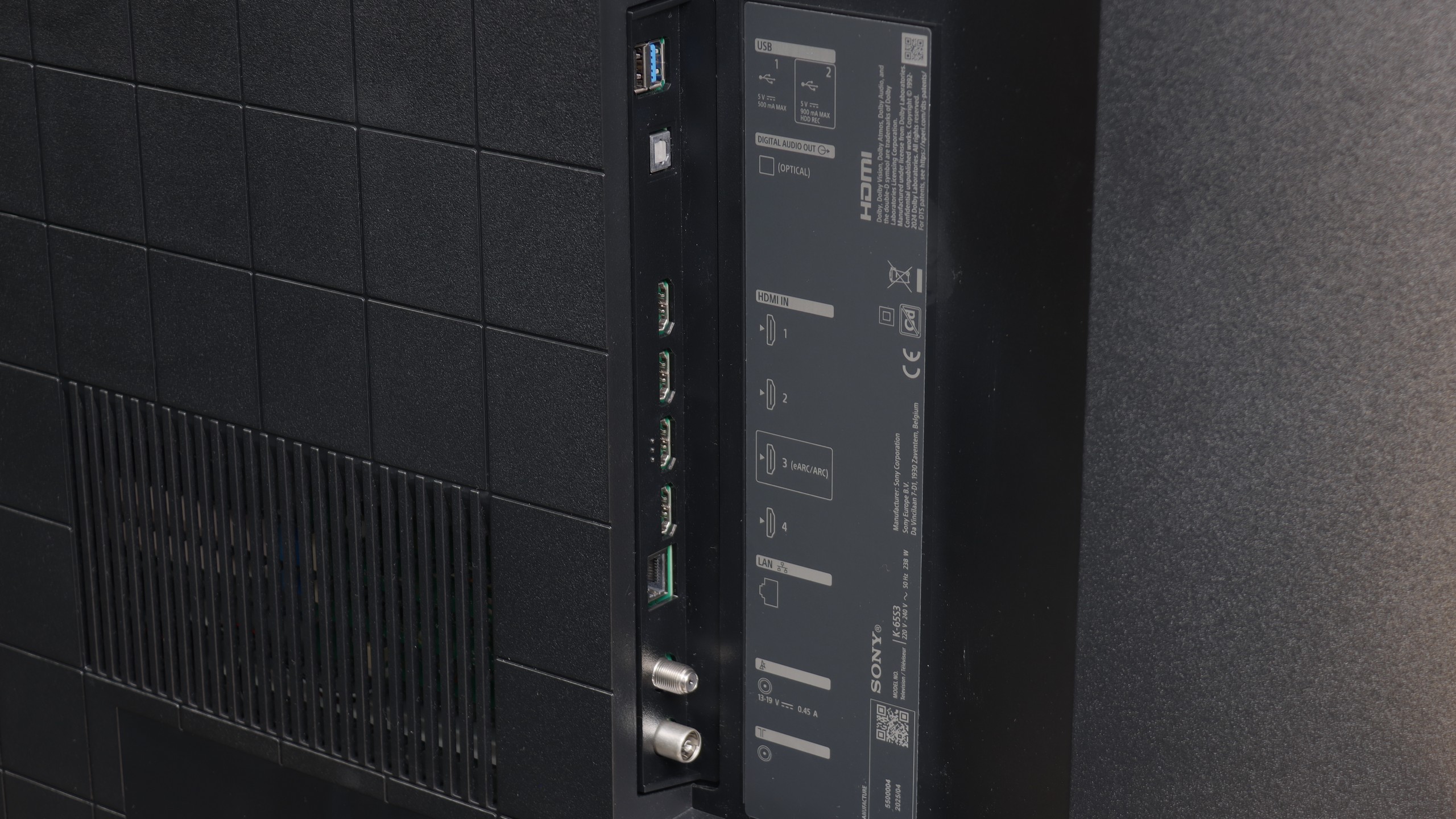
Classic Features – E8Q
The Hisense E8Q is not just equipment for gamers or movie enthusiasts – it can also serve as an everyday TV for the whole family. We can record programs to USB, connect headphones or speakers via Bluetooth, and the entire interface – including the channel guide – is clear and easy to use. It only lacks a PiP function, but besides that, the set of classic features is really complete.
Smart TV – VIDAA System
The E8Q runs on the VIDAA system, which is becoming more refined every year. Voice search in Polish works flawlessly, and it's easy to stream content from a phone (AirPlay and screen mirroring). The system itself operates smoothly, without hiccups, although – as is often the case with closed platforms – there may be one or two less popular apps missing. It’s worth checking before purchase whether it has everything we use daily.
Smart TV Features
The biggest advantage of the Bravia 3 in daily use is the presence of the Google TV system. Thanks to it, we have access to one of the largest libraries of apps and streaming services, so regardless of whether someone mainly uses Netflix, Disney+ or smaller platforms, everything is just a reach away. The Google voice assistant also worked very well, responding to our commands quite "smartly". The Google TV system should theoretically run very smoothly since Sony has been implementing it better than many cheaper competitors for years. Unfortunately, in the case of the Bravia 3, it's not as great as we might have expected. During testing, we noticed slight lags in the interface, and some features, such as screen mirroring, simply refused to cooperate. One might get the impression that the processor in this model sometimes struggles to handle the demanding system, and not everything works as smoothly as we would hope.
Classic Features
Sony, even in the cheapest series, knows how to remind users of its experience with various users. The set includes two remotes. The first is modern and minimalist, with a small number of buttons, which works wonderfully when using applications and Google TV functions. The second is a classic remote with a richer set of buttons and a numeric keypad, which will be appreciated especially by older people accustomed to traditional solutions. It's a nice gesture towards different user groups, and it must be admitted that Sony has handled this very practically. It's a pity, however, that compared to the X75WL model, the ability to record content from TV tuners to USB memory has been removed. The manufacturer has completely abandoned this feature, so if someone was attached to it, they unfortunately won't find it in the Bravia 3.
Playing files from USB
8.2/10
9.6/10
Supported photo formats:
Maximum photo resolution:
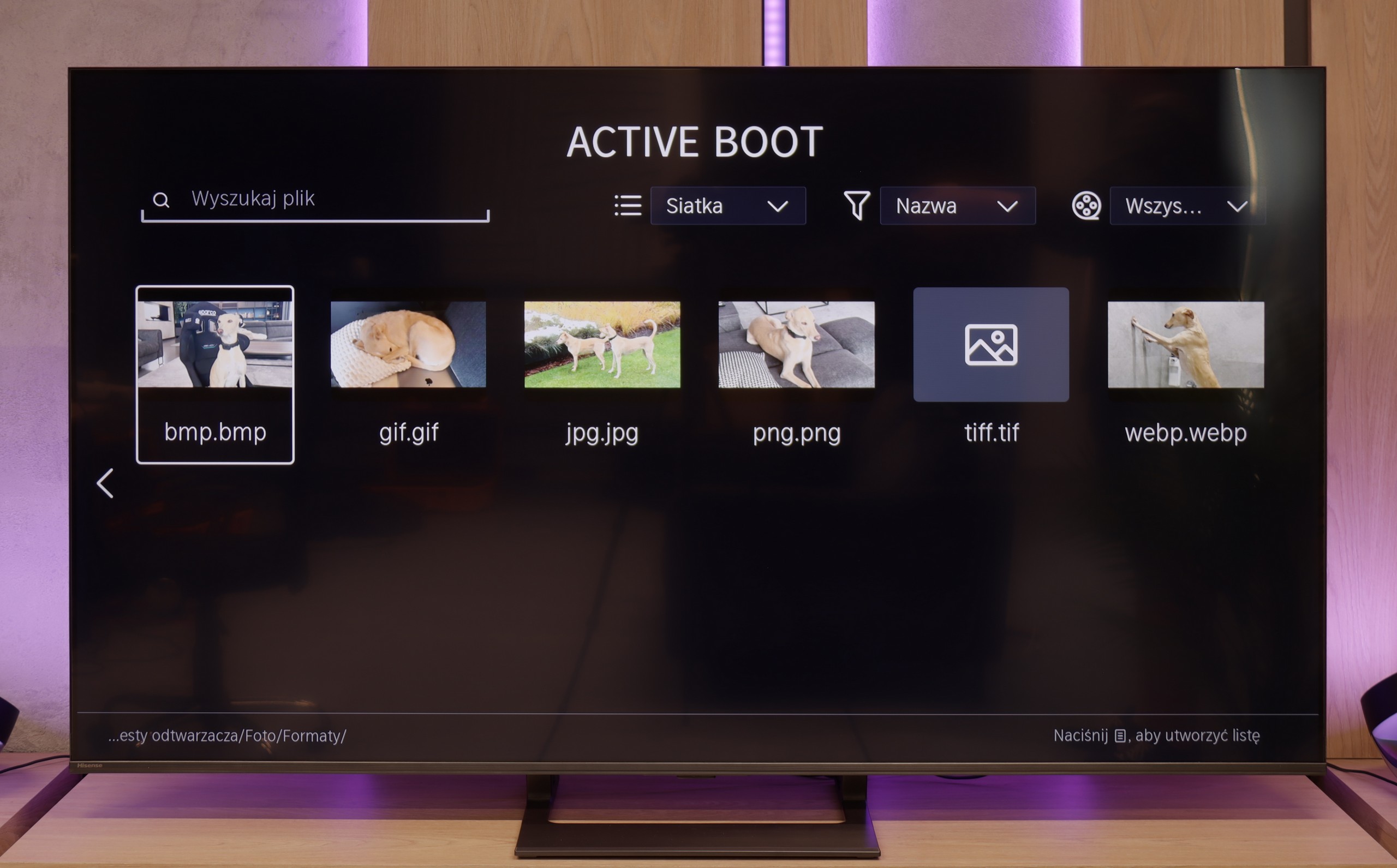
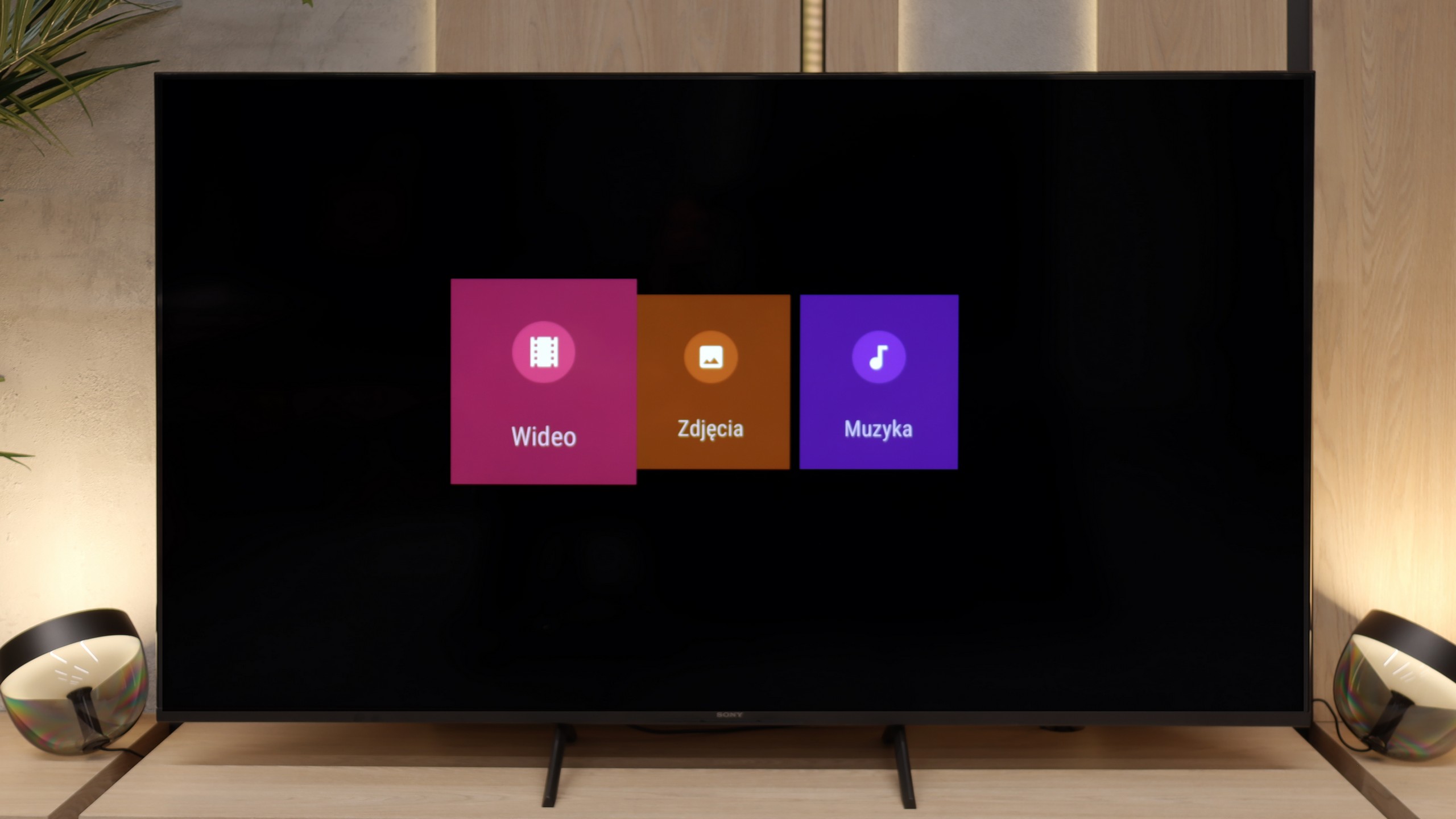
The built-in media player in the E8Q performs quite well. It supports most popular video and audio formats, and files from USB drives or external disks play without major issues. Polish characters? They're supported. Subtitles? They work. The only minor drawback is the occasional problem with displaying high-resolution images – especially those from cameras or smartphones. So if you're planning to show holiday photos on the big screen, it’s worth checking beforehand that they all load correctly from the memory of the disk or USB drive.
Here Sony has really done a great job. The built-in player works quickly and doesn't "choke" when launching various formats. We didn't have to reach for external apps like VLC, as the TV handled even files that can cause quite a bit of trouble on other models – such as HEIC photos from Apple devices. It's a small detail, but one that shows the manufacturer wanted the user to feel complete convenience. By plugging a movie into a USB drive or photos from a holiday into a portable hard drive, you can simply connect them and immediately watch on the big screen. No fuss, no installing additional software, no searching for workarounds. This is really rare in televisions, and it must be said that in this aspect, the Bravia 3 truly surprised us pleasantly.
Apps
7.7/10
9.6/10














































Sound
7.2/10
6.5/10
- Maximum volume85dB88dB
- Dolby Digital Plus 7.1
- Dolby True HD 7.1
- Dolby Atmos in Dolby Digital Plus (JOC)
- Dolby Atmos in Dolby True HD
- DTS:X in DTS-HD MA
- DTS-HD Master Audio
Here unfortunately, the Hisense E8Q didn’t make the best impression on us. Although on paper it has speakers with a power of 40 W (which is just a bit less than 50 W in the U7Q), in practice the difference is significant – and unfortunately not in favour of the E8Q. During testing, it quickly became clear that something wasn’t right. When the volume was turned up above 40–50%, the entire back casing began to resonate, and unpleasant crackling sounds emitted from the TV. Even during regular viewing, it was hard not to notice this, and definitely hard not to hear. In this form, it’s difficult to talk about listening comfort. We don’t rule out that it was a problem with a specific test unit, but still – it’s worth keeping this in mind. If you care about good sound, consider connecting a soundbar or… go for the U7Q, which definitely performs better.
Bravia 3 plays in a rather flat manner, but makes up for it with loudness. It’s perfect for watching traditional television as the dialogue is clear, and the mid tones are easily heard. Users, especially older ones who mainly value speech comprehensibility, will particularly appreciate this type of characterisation. However, if someone expects more from the sound, like stronger bass or a wider soundstage, it’s worth investing in a soundbar. The television supports modern codecs, including Dolby Atmos and DTS:X, so an external sound system can easily take advantage of their potential. This ensures that with relatively low expenditure, a much fuller and more engaging sound can be achieved.
Sound Quality Test
No sound test video
Acoustic Measurements
85dBC (Max)
75dBC
No acoustic data


